Stem cross section Black & White Stock Photos
 76 Bauhinia stem cross section Taub44 Stock Photohttps://www.alamy.com/image-license-details/?v=1https://www.alamy.com/76-bauhinia-stem-cross-section-taub44-image214222982.html
76 Bauhinia stem cross section Taub44 Stock Photohttps://www.alamy.com/image-license-details/?v=1https://www.alamy.com/76-bauhinia-stem-cross-section-taub44-image214222982.htmlRMPCEKGP–76 Bauhinia stem cross section Taub44
 Bauhinia stem cross section Taub44 Stock Photohttps://www.alamy.com/image-license-details/?v=1https://www.alamy.com/stock-photo-bauhinia-stem-cross-section-taub44-132410739.html
Bauhinia stem cross section Taub44 Stock Photohttps://www.alamy.com/image-license-details/?v=1https://www.alamy.com/stock-photo-bauhinia-stem-cross-section-taub44-132410739.htmlRMHKBR6Y–Bauhinia stem cross section Taub44
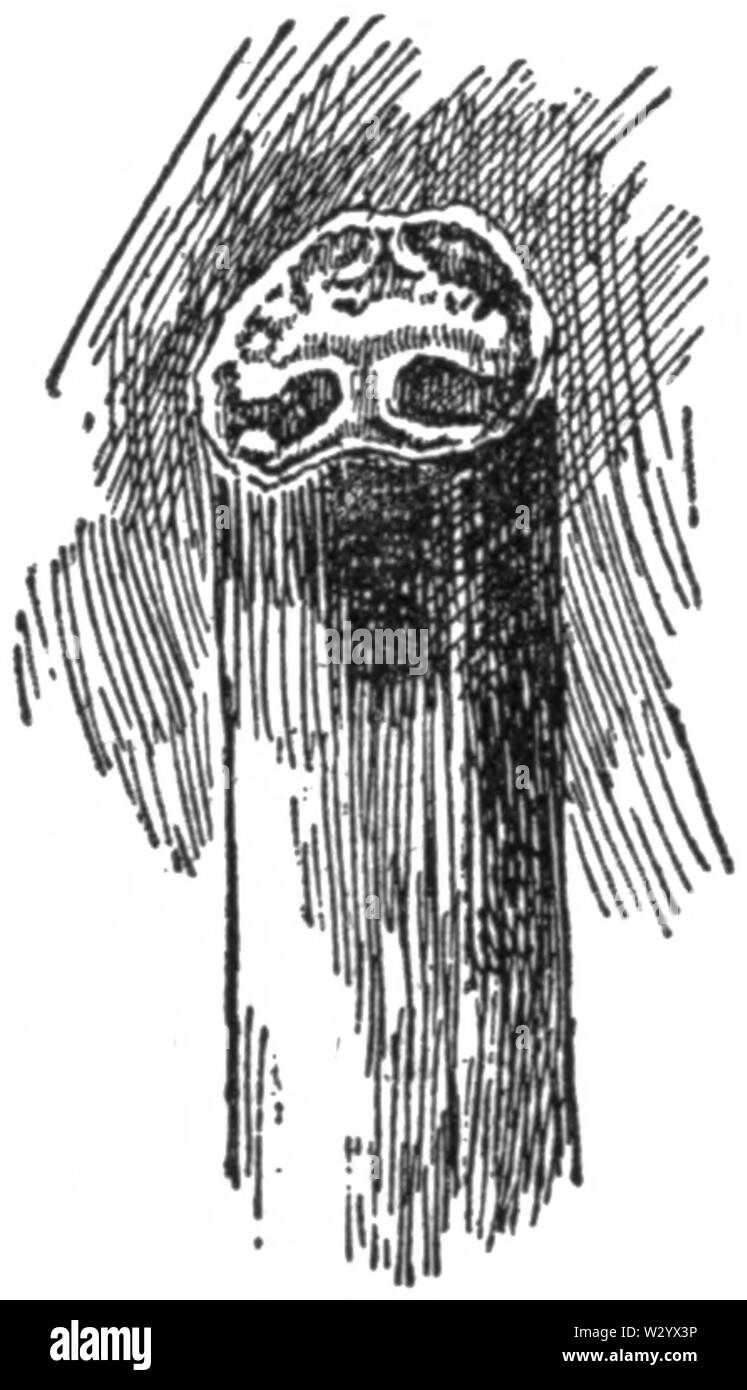 OFH-042 Pteris aquilina stem cross-section Stock Photohttps://www.alamy.com/image-license-details/?v=1https://www.alamy.com/ofh-042-pteris-aquilina-stem-cross-section-image259998026.html
OFH-042 Pteris aquilina stem cross-section Stock Photohttps://www.alamy.com/image-license-details/?v=1https://www.alamy.com/ofh-042-pteris-aquilina-stem-cross-section-image259998026.htmlRMW2YX3P–OFH-042 Pteris aquilina stem cross-section
 MRI Cross Section, Wound Track Stock Photohttps://www.alamy.com/image-license-details/?v=1https://www.alamy.com/stock-photo-mri-cross-section-wound-track-135008977.html
MRI Cross Section, Wound Track Stock Photohttps://www.alamy.com/image-license-details/?v=1https://www.alamy.com/stock-photo-mri-cross-section-wound-track-135008977.htmlRMHRJ595–MRI Cross Section, Wound Track
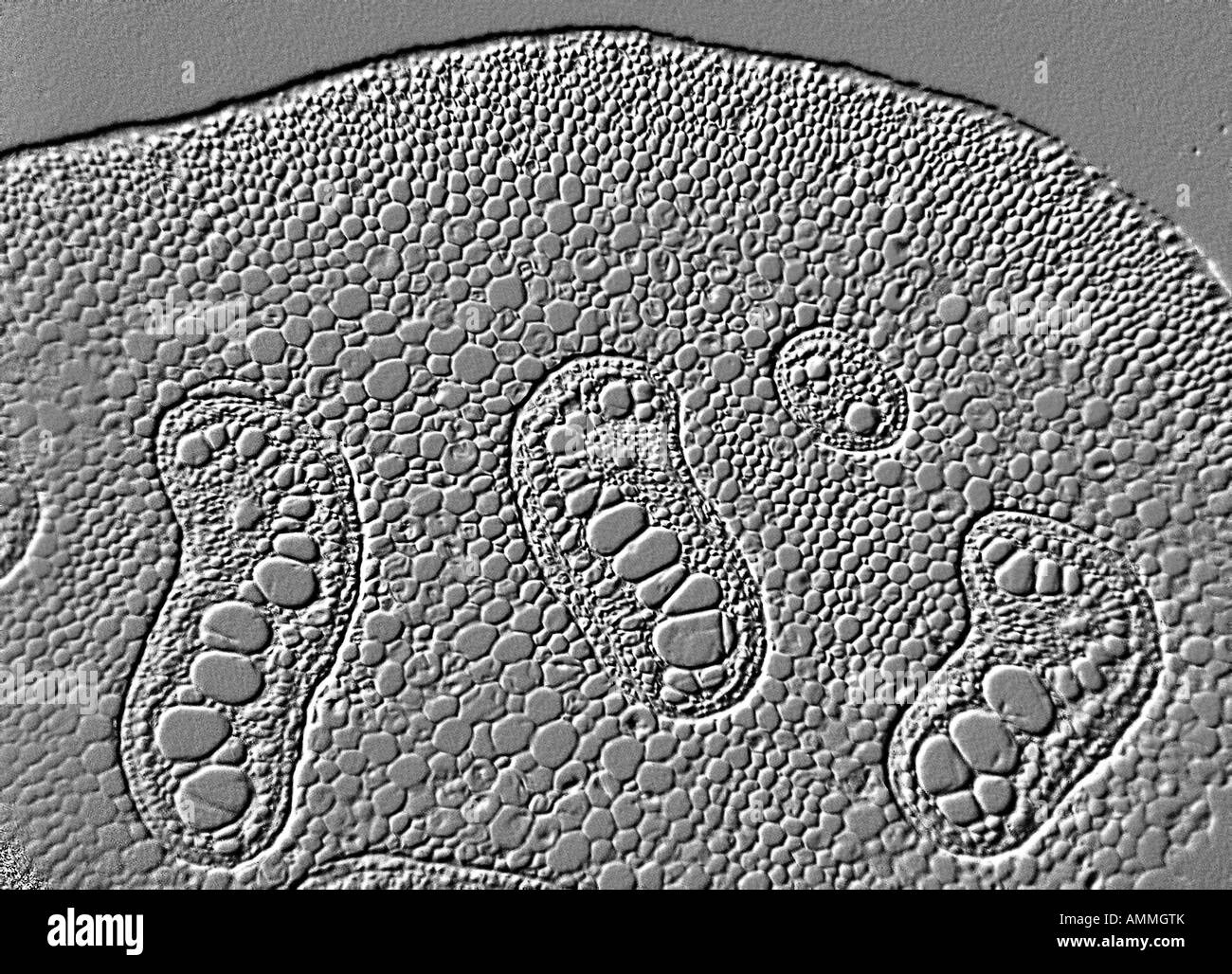 fern stem Stock Photohttps://www.alamy.com/image-license-details/?v=1https://www.alamy.com/stock-photo-fern-stem-15296802.html
fern stem Stock Photohttps://www.alamy.com/image-license-details/?v=1https://www.alamy.com/stock-photo-fern-stem-15296802.htmlRFAMMGTK–fern stem
 A diagram Ivy Stem cross section which showing early, later stage in the formation of the duct and the mature duct, vintage line drawing or engraving Stock Vectorhttps://www.alamy.com/image-license-details/?v=1https://www.alamy.com/a-diagram-ivy-stem-cross-section-which-showing-early-later-stage-in-the-formation-of-the-duct-and-the-mature-duct-vintage-line-drawing-or-engraving-image244632499.html
A diagram Ivy Stem cross section which showing early, later stage in the formation of the duct and the mature duct, vintage line drawing or engraving Stock Vectorhttps://www.alamy.com/image-license-details/?v=1https://www.alamy.com/a-diagram-ivy-stem-cross-section-which-showing-early-later-stage-in-the-formation-of-the-duct-and-the-mature-duct-vintage-line-drawing-or-engraving-image244632499.htmlRFT5YY6Y–A diagram Ivy Stem cross section which showing early, later stage in the formation of the duct and the mature duct, vintage line drawing or engraving
 PSM V07 D014 Cross section of an actinia stem Stock Photohttps://www.alamy.com/image-license-details/?v=1https://www.alamy.com/stock-photo-psm-v07-d014-cross-section-of-an-actinia-stem-140400626.html
PSM V07 D014 Cross section of an actinia stem Stock Photohttps://www.alamy.com/image-license-details/?v=1https://www.alamy.com/stock-photo-psm-v07-d014-cross-section-of-an-actinia-stem-140400626.htmlRMJ4BPC2–PSM V07 D014 Cross section of an actinia stem
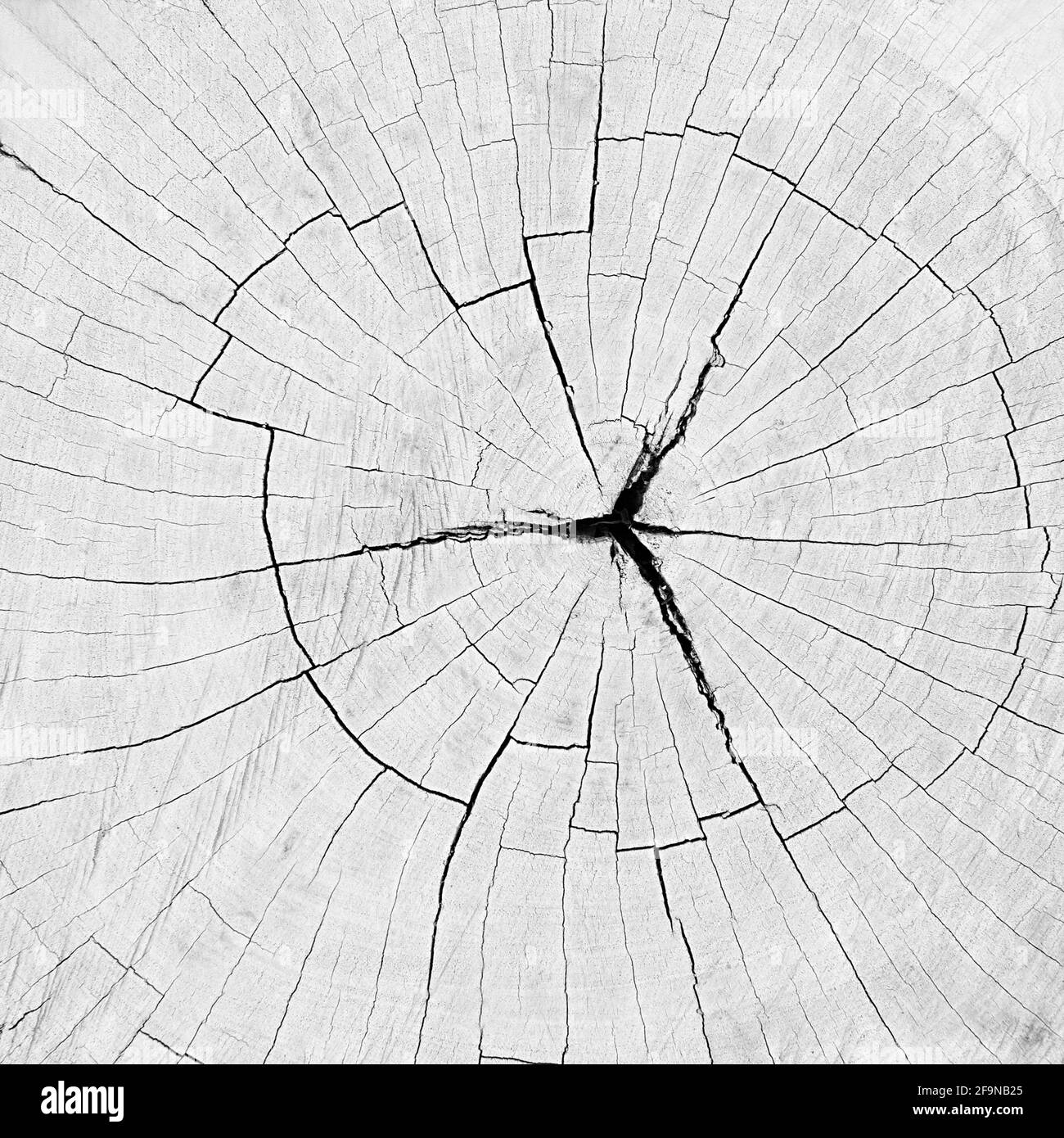 Dry old cracked tree stump texture - background Stock Photohttps://www.alamy.com/image-license-details/?v=1https://www.alamy.com/dry-old-cracked-tree-stump-texture-background-image419050413.html
Dry old cracked tree stump texture - background Stock Photohttps://www.alamy.com/image-license-details/?v=1https://www.alamy.com/dry-old-cracked-tree-stump-texture-background-image419050413.htmlRF2F9NB25–Dry old cracked tree stump texture - background
 Cross section of an exogenous stem. Stock Photohttps://www.alamy.com/image-license-details/?v=1https://www.alamy.com/cross-section-of-an-exogenous-stem-image415299345.html
Cross section of an exogenous stem. Stock Photohttps://www.alamy.com/image-license-details/?v=1https://www.alamy.com/cross-section-of-an-exogenous-stem-image415299345.htmlRM2F3JEFD–Cross section of an exogenous stem.
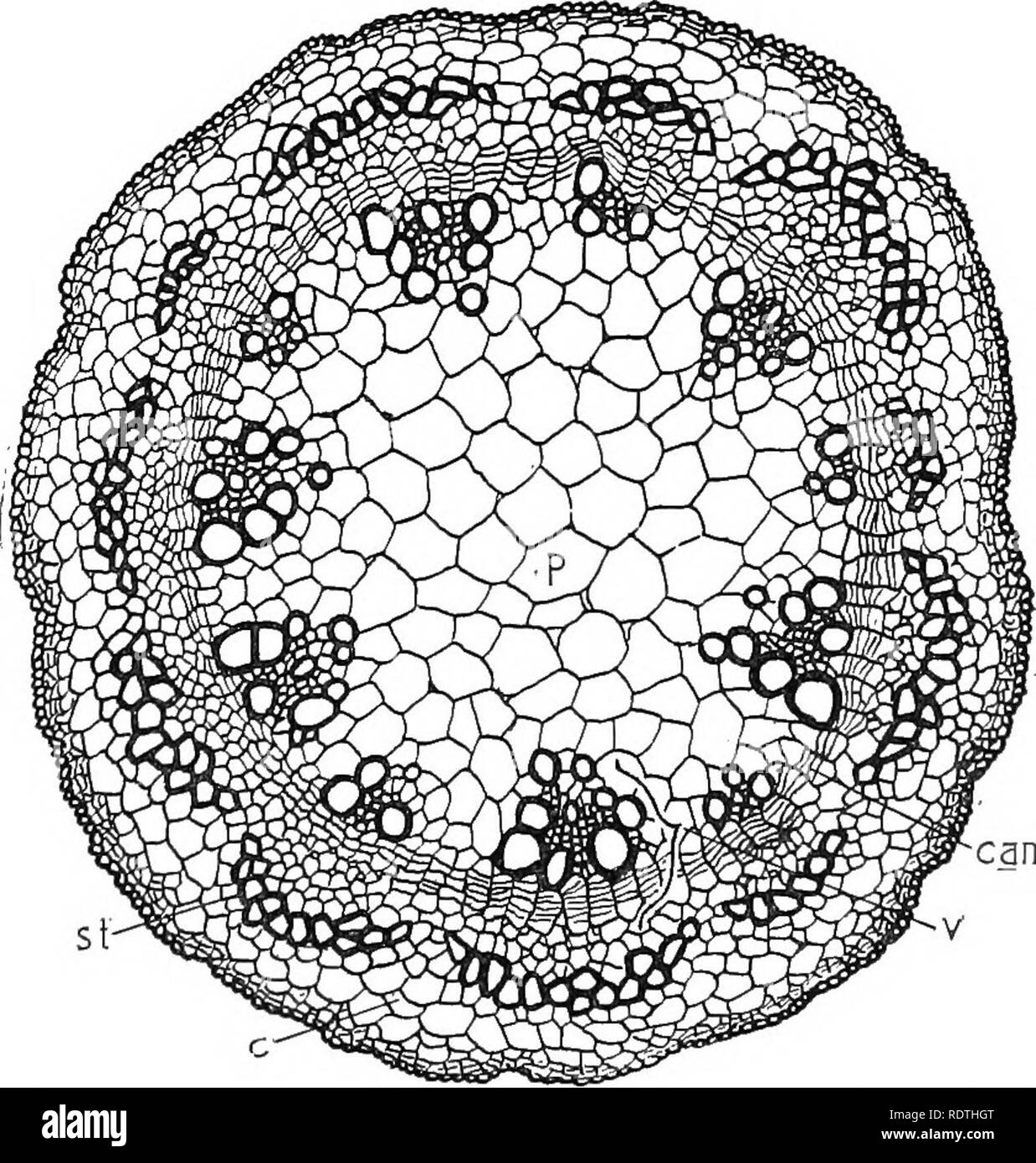 . Nature and development of plants. Botany. Fig. 53. Cross-section of a stem of castor bean showing the formation of the cambium between two vascular bundles: x, xylem; ph, phloem; c, cam- bium of the bundle. The faint lines, ic, are the first divisions of the parenchyma cells between the bundles that result in the formation of the cambium cylinder. of the cambium cylinder. This growth results in the formation of a layer of xylem on the inside of the cambium cylinder and a layer of phloem on the outside, and so brings about the principal. cam Fig. 54. Cross-section of a stem of castor bean in Stock Photohttps://www.alamy.com/image-license-details/?v=1https://www.alamy.com/nature-and-development-of-plants-botany-fig-53-cross-section-of-a-stem-of-castor-bean-showing-the-formation-of-the-cambium-between-two-vascular-bundles-x-xylem-ph-phloem-c-cam-bium-of-the-bundle-the-faint-lines-ic-are-the-first-divisions-of-the-parenchyma-cells-between-the-bundles-that-result-in-the-formation-of-the-cambium-cylinder-of-the-cambium-cylinder-this-growth-results-in-the-formation-of-a-layer-of-xylem-on-the-inside-of-the-cambium-cylinder-and-a-layer-of-phloem-on-the-outside-and-so-brings-about-the-principal-cam-fig-54-cross-section-of-a-stem-of-castor-bean-in-image232265960.html
. Nature and development of plants. Botany. Fig. 53. Cross-section of a stem of castor bean showing the formation of the cambium between two vascular bundles: x, xylem; ph, phloem; c, cam- bium of the bundle. The faint lines, ic, are the first divisions of the parenchyma cells between the bundles that result in the formation of the cambium cylinder. of the cambium cylinder. This growth results in the formation of a layer of xylem on the inside of the cambium cylinder and a layer of phloem on the outside, and so brings about the principal. cam Fig. 54. Cross-section of a stem of castor bean in Stock Photohttps://www.alamy.com/image-license-details/?v=1https://www.alamy.com/nature-and-development-of-plants-botany-fig-53-cross-section-of-a-stem-of-castor-bean-showing-the-formation-of-the-cambium-between-two-vascular-bundles-x-xylem-ph-phloem-c-cam-bium-of-the-bundle-the-faint-lines-ic-are-the-first-divisions-of-the-parenchyma-cells-between-the-bundles-that-result-in-the-formation-of-the-cambium-cylinder-of-the-cambium-cylinder-this-growth-results-in-the-formation-of-a-layer-of-xylem-on-the-inside-of-the-cambium-cylinder-and-a-layer-of-phloem-on-the-outside-and-so-brings-about-the-principal-cam-fig-54-cross-section-of-a-stem-of-castor-bean-in-image232265960.htmlRMRDTHGT–. Nature and development of plants. Botany. Fig. 53. Cross-section of a stem of castor bean showing the formation of the cambium between two vascular bundles: x, xylem; ph, phloem; c, cam- bium of the bundle. The faint lines, ic, are the first divisions of the parenchyma cells between the bundles that result in the formation of the cambium cylinder. of the cambium cylinder. This growth results in the formation of a layer of xylem on the inside of the cambium cylinder and a layer of phloem on the outside, and so brings about the principal. cam Fig. 54. Cross-section of a stem of castor bean in
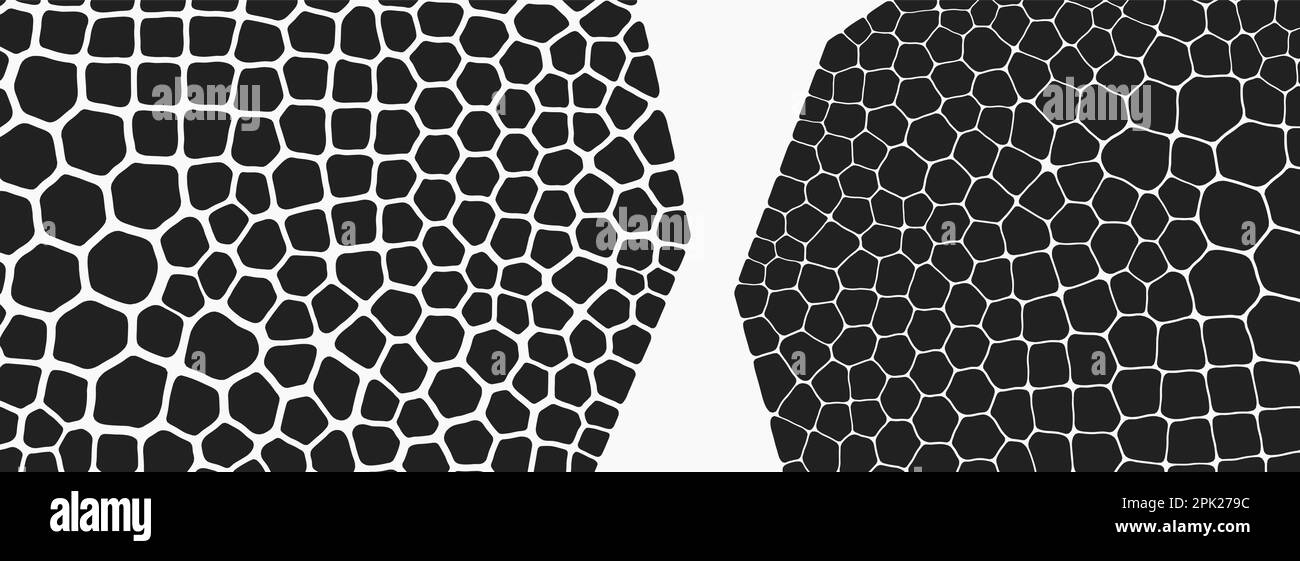 Abstract science background with fantasy cells. Cross section or microscopic view. Biology. Organic texture. 3d technology style with particle. Vector Stock Vectorhttps://www.alamy.com/image-license-details/?v=1https://www.alamy.com/abstract-science-background-with-fantasy-cells-cross-section-or-microscopic-view-biology-organic-texture-3d-technology-style-with-particle-vector-image545249528.html
Abstract science background with fantasy cells. Cross section or microscopic view. Biology. Organic texture. 3d technology style with particle. Vector Stock Vectorhttps://www.alamy.com/image-license-details/?v=1https://www.alamy.com/abstract-science-background-with-fantasy-cells-cross-section-or-microscopic-view-biology-organic-texture-3d-technology-style-with-particle-vector-image545249528.htmlRF2PK279C–Abstract science background with fantasy cells. Cross section or microscopic view. Biology. Organic texture. 3d technology style with particle. Vector
 Shown are the regions of the human brain affected by boxing, side view (top) and cross-section (bottom). Shown are the skull, cerebellum, and the base Stock Photohttps://www.alamy.com/image-license-details/?v=1https://www.alamy.com/stock-photo-shown-are-the-regions-of-the-human-brain-affected-by-boxing-side-view-130775909.html
Shown are the regions of the human brain affected by boxing, side view (top) and cross-section (bottom). Shown are the skull, cerebellum, and the base Stock Photohttps://www.alamy.com/image-license-details/?v=1https://www.alamy.com/stock-photo-shown-are-the-regions-of-the-human-brain-affected-by-boxing-side-view-130775909.htmlRFHGNA05–Shown are the regions of the human brain affected by boxing, side view (top) and cross-section (bottom). Shown are the skull, cerebellum, and the base
 Cross-section at the stem shown in fig, previous, vintage engraved illustration. Stock Photohttps://www.alamy.com/image-license-details/?v=1https://www.alamy.com/cross-section-at-the-stem-shown-in-fig-previous-vintage-engraved-illustration-image363123696.html
Cross-section at the stem shown in fig, previous, vintage engraved illustration. Stock Photohttps://www.alamy.com/image-license-details/?v=1https://www.alamy.com/cross-section-at-the-stem-shown-in-fig-previous-vintage-engraved-illustration-image363123696.htmlRF2C2NKYC–Cross-section at the stem shown in fig, previous, vintage engraved illustration.
![The Channel Railway Ferry: sections of the proposed steam-boat, 1870. 'Mr. John Fowler, C.E., [has devised a plan] for the more expeditious conveyance of mails and passengers across the Channel between England and France...The Illustration...[shows] the design of these boats, which are to be 450 ft. in length, 57 ft. in breadth of beam, and 85 ft. wide over the paddle-boxes. The stem and stern of the vessel would be capable of being opened, to admit the entrance of the train of railway-carriages, assisted by a hydraulic hoist...The dining-saloons...and other convenient apartments, would be sit Stock Photo The Channel Railway Ferry: sections of the proposed steam-boat, 1870. 'Mr. John Fowler, C.E., [has devised a plan] for the more expeditious conveyance of mails and passengers across the Channel between England and France...The Illustration...[shows] the design of these boats, which are to be 450 ft. in length, 57 ft. in breadth of beam, and 85 ft. wide over the paddle-boxes. The stem and stern of the vessel would be capable of being opened, to admit the entrance of the train of railway-carriages, assisted by a hydraulic hoist...The dining-saloons...and other convenient apartments, would be sit Stock Photo](https://c8.alamy.com/comp/2XT30KH/the-channel-railway-ferry-sections-of-the-proposed-steam-boat-1870-mr-john-fowler-ce-has-devised-a-plan-for-the-more-expeditious-conveyance-of-mails-and-passengers-across-the-channel-between-england-and-francethe-illustration-shows-the-design-of-these-boats-which-are-to-be-450-ft-in-length-57-ft-in-breadth-of-beam-and-85-ft-wide-over-the-paddle-boxes-the-stem-and-stern-of-the-vessel-would-be-capable-of-being-opened-to-admit-the-entrance-of-the-train-of-railway-carriages-assisted-by-a-hydraulic-hoistthe-dining-saloonsand-other-convenient-apartments-would-be-sit-2XT30KH.jpg) The Channel Railway Ferry: sections of the proposed steam-boat, 1870. 'Mr. John Fowler, C.E., [has devised a plan] for the more expeditious conveyance of mails and passengers across the Channel between England and France...The Illustration...[shows] the design of these boats, which are to be 450 ft. in length, 57 ft. in breadth of beam, and 85 ft. wide over the paddle-boxes. The stem and stern of the vessel would be capable of being opened, to admit the entrance of the train of railway-carriages, assisted by a hydraulic hoist...The dining-saloons...and other convenient apartments, would be sit Stock Photohttps://www.alamy.com/image-license-details/?v=1https://www.alamy.com/the-channel-railway-ferry-sections-of-the-proposed-steam-boat-1870-mr-john-fowler-ce-has-devised-a-plan-for-the-more-expeditious-conveyance-of-mails-and-passengers-across-the-channel-between-england-and-francethe-illustration-shows-the-design-of-these-boats-which-are-to-be-450-ft-in-length-57-ft-in-breadth-of-beam-and-85-ft-wide-over-the-paddle-boxes-the-stem-and-stern-of-the-vessel-would-be-capable-of-being-opened-to-admit-the-entrance-of-the-train-of-railway-carriages-assisted-by-a-hydraulic-hoistthe-dining-saloonsand-other-convenient-apartments-would-be-sit-image617181029.html
The Channel Railway Ferry: sections of the proposed steam-boat, 1870. 'Mr. John Fowler, C.E., [has devised a plan] for the more expeditious conveyance of mails and passengers across the Channel between England and France...The Illustration...[shows] the design of these boats, which are to be 450 ft. in length, 57 ft. in breadth of beam, and 85 ft. wide over the paddle-boxes. The stem and stern of the vessel would be capable of being opened, to admit the entrance of the train of railway-carriages, assisted by a hydraulic hoist...The dining-saloons...and other convenient apartments, would be sit Stock Photohttps://www.alamy.com/image-license-details/?v=1https://www.alamy.com/the-channel-railway-ferry-sections-of-the-proposed-steam-boat-1870-mr-john-fowler-ce-has-devised-a-plan-for-the-more-expeditious-conveyance-of-mails-and-passengers-across-the-channel-between-england-and-francethe-illustration-shows-the-design-of-these-boats-which-are-to-be-450-ft-in-length-57-ft-in-breadth-of-beam-and-85-ft-wide-over-the-paddle-boxes-the-stem-and-stern-of-the-vessel-would-be-capable-of-being-opened-to-admit-the-entrance-of-the-train-of-railway-carriages-assisted-by-a-hydraulic-hoistthe-dining-saloonsand-other-convenient-apartments-would-be-sit-image617181029.htmlRM2XT30KH–The Channel Railway Ferry: sections of the proposed steam-boat, 1870. 'Mr. John Fowler, C.E., [has devised a plan] for the more expeditious conveyance of mails and passengers across the Channel between England and France...The Illustration...[shows] the design of these boats, which are to be 450 ft. in length, 57 ft. in breadth of beam, and 85 ft. wide over the paddle-boxes. The stem and stern of the vessel would be capable of being opened, to admit the entrance of the train of railway-carriages, assisted by a hydraulic hoist...The dining-saloons...and other convenient apartments, would be sit
 A diagram of a brain from the top side front and back in outline Stock Photohttps://www.alamy.com/image-license-details/?v=1https://www.alamy.com/stock-photo-a-diagram-of-a-brain-from-the-top-side-front-and-back-in-outline-71408850.html
A diagram of a brain from the top side front and back in outline Stock Photohttps://www.alamy.com/image-license-details/?v=1https://www.alamy.com/stock-photo-a-diagram-of-a-brain-from-the-top-side-front-and-back-in-outline-71408850.htmlRFE44XM2–A diagram of a brain from the top side front and back in outline
 Fruit outline: bananas, apples, pears, peppers, tomato made of black lines isolated on a white background. Vector illustration. Stock Vectorhttps://www.alamy.com/image-license-details/?v=1https://www.alamy.com/fruit-outline-bananas-apples-pears-peppers-tomato-made-of-black-lines-isolated-on-a-white-background-vector-illustration-image600592602.html
Fruit outline: bananas, apples, pears, peppers, tomato made of black lines isolated on a white background. Vector illustration. Stock Vectorhttps://www.alamy.com/image-license-details/?v=1https://www.alamy.com/fruit-outline-bananas-apples-pears-peppers-tomato-made-of-black-lines-isolated-on-a-white-background-vector-illustration-image600592602.htmlRF2WW39YP–Fruit outline: bananas, apples, pears, peppers, tomato made of black lines isolated on a white background. Vector illustration.
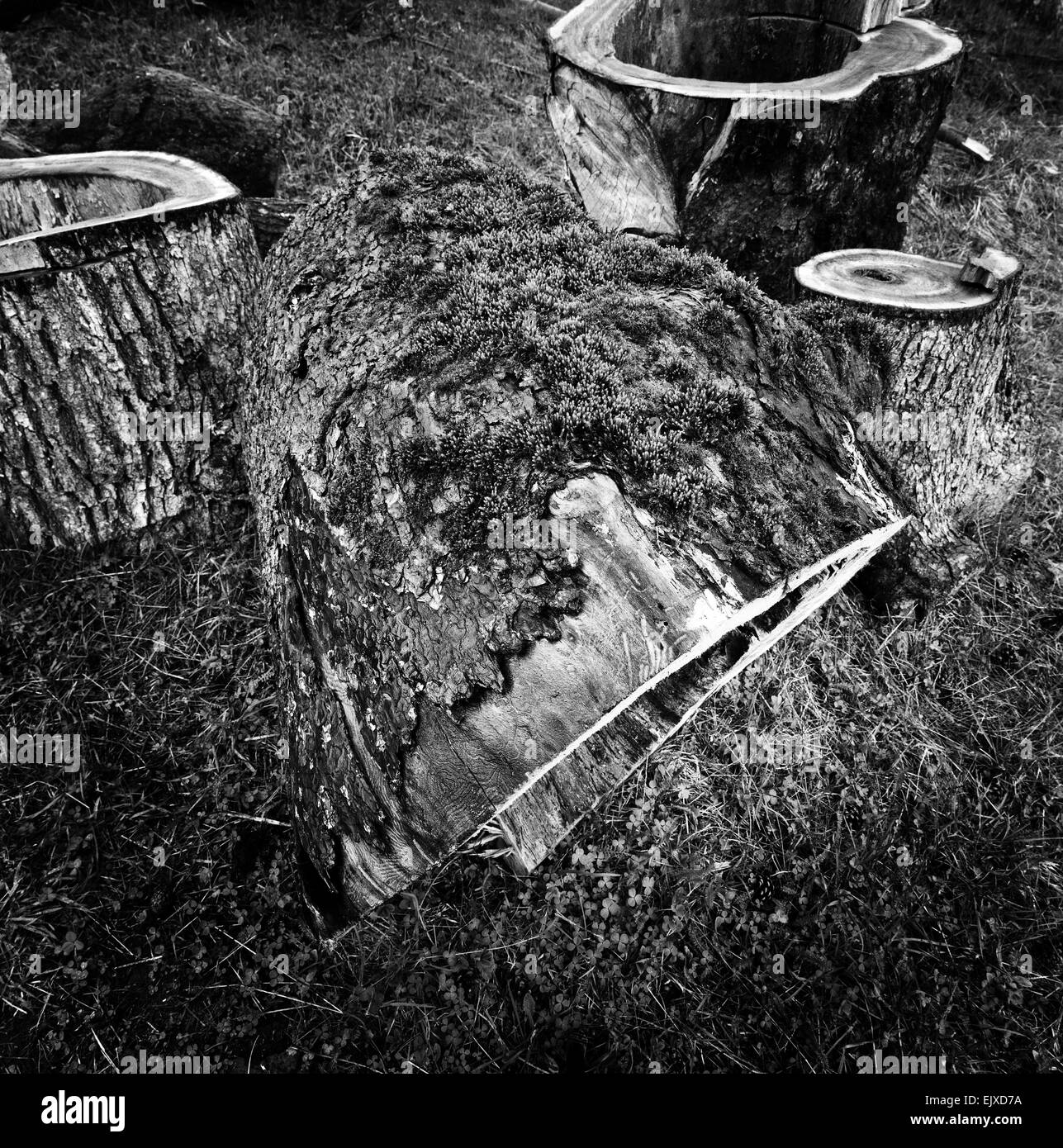 Medium format shot of moss covered pine stubs. Stock Photohttps://www.alamy.com/image-license-details/?v=1https://www.alamy.com/stock-photo-medium-format-shot-of-moss-covered-pine-stubs-80486430.html
Medium format shot of moss covered pine stubs. Stock Photohttps://www.alamy.com/image-license-details/?v=1https://www.alamy.com/stock-photo-medium-format-shot-of-moss-covered-pine-stubs-80486430.htmlRFEJXD7A–Medium format shot of moss covered pine stubs.
RF2XG4AN1–Line icon of two plants growing from flowerpot with soil cross section, representing botany and gardening
 Citrus vintage vector illustrations collection. Black and white lime. Stock Vectorhttps://www.alamy.com/image-license-details/?v=1https://www.alamy.com/citrus-vintage-vector-illustrations-collection-black-and-white-lime-image469432518.html
Citrus vintage vector illustrations collection. Black and white lime. Stock Vectorhttps://www.alamy.com/image-license-details/?v=1https://www.alamy.com/citrus-vintage-vector-illustrations-collection-black-and-white-lime-image469432518.htmlRF2J7MDY2–Citrus vintage vector illustrations collection. Black and white lime.
 . Illustration from book 76 Bauhinia stem cross section Taub44 Stock Photohttps://www.alamy.com/image-license-details/?v=1https://www.alamy.com/illustration-from-book-76-bauhinia-stem-cross-section-taub44-image184859225.html
. Illustration from book 76 Bauhinia stem cross section Taub44 Stock Photohttps://www.alamy.com/image-license-details/?v=1https://www.alamy.com/illustration-from-book-76-bauhinia-stem-cross-section-taub44-image184859225.htmlRMMMN1R5–. Illustration from book 76 Bauhinia stem cross section Taub44
 . Plant life and plant uses; an elementary textbook, a foundation for the study of agriculture, domestic science or college botany. Botany. - Cross section of corn stem showing the scat- tered arrangement of bundles. never become so large and strong as the stems of trees which have their wood in lay- ers. It is not an arrangement which is so well suited to great size and strength. The water as- cends through the xylem of the stems as readily as Fig. 32. through the xylem of the roots. It becomes indistinguishable from the sap , of the plant. It is the sap. • It continues to move up. If the cut Stock Photohttps://www.alamy.com/image-license-details/?v=1https://www.alamy.com/plant-life-and-plant-uses-an-elementary-textbook-a-foundation-for-the-study-of-agriculture-domestic-science-or-college-botany-botany-cross-section-of-corn-stem-showing-the-scat-tered-arrangement-of-bundles-never-become-so-large-and-strong-as-the-stems-of-trees-which-have-their-wood-in-lay-ers-it-is-not-an-arrangement-which-is-so-well-suited-to-great-size-and-strength-the-water-as-cends-through-the-xylem-of-the-stems-as-readily-as-fig-32-through-the-xylem-of-the-roots-it-becomes-indistinguishable-from-the-sap-of-the-plant-it-is-the-sap-it-continues-to-move-up-if-the-cut-image216443621.html
. Plant life and plant uses; an elementary textbook, a foundation for the study of agriculture, domestic science or college botany. Botany. - Cross section of corn stem showing the scat- tered arrangement of bundles. never become so large and strong as the stems of trees which have their wood in lay- ers. It is not an arrangement which is so well suited to great size and strength. The water as- cends through the xylem of the stems as readily as Fig. 32. through the xylem of the roots. It becomes indistinguishable from the sap , of the plant. It is the sap. • It continues to move up. If the cut Stock Photohttps://www.alamy.com/image-license-details/?v=1https://www.alamy.com/plant-life-and-plant-uses-an-elementary-textbook-a-foundation-for-the-study-of-agriculture-domestic-science-or-college-botany-botany-cross-section-of-corn-stem-showing-the-scat-tered-arrangement-of-bundles-never-become-so-large-and-strong-as-the-stems-of-trees-which-have-their-wood-in-lay-ers-it-is-not-an-arrangement-which-is-so-well-suited-to-great-size-and-strength-the-water-as-cends-through-the-xylem-of-the-stems-as-readily-as-fig-32-through-the-xylem-of-the-roots-it-becomes-indistinguishable-from-the-sap-of-the-plant-it-is-the-sap-it-continues-to-move-up-if-the-cut-image216443621.htmlRMPG3T19–. Plant life and plant uses; an elementary textbook, a foundation for the study of agriculture, domestic science or college botany. Botany. - Cross section of corn stem showing the scat- tered arrangement of bundles. never become so large and strong as the stems of trees which have their wood in lay- ers. It is not an arrangement which is so well suited to great size and strength. The water as- cends through the xylem of the stems as readily as Fig. 32. through the xylem of the roots. It becomes indistinguishable from the sap , of the plant. It is the sap. • It continues to move up. If the cut
RF2AKWCK3–Avocado piece icon. Simple illustration of avocado piece vector icon for web design isolated on white background
 AMERICAN NAVAL ARCHITECTURE. THE STEAMER 'HARROW.' This steamer erected by Thomas Collyer of this city is owned by Messrs. J. M. Forbes& Co. of Boston. She will soon assume her appropriate position on the route of her intended service—the river trade in the Chinese empire. This is the third boat constructed for this firm for the China trade all of which have been her hull &c.: Length on deck from fore part of stem to after part of stern-post above the spar deck 212 teat ; breadth of beam at midship section (molded) 30 feet 6 inches ; depth of hold feet ; depth of hold to spar deck feet 4 Stock Photohttps://www.alamy.com/image-license-details/?v=1https://www.alamy.com/american-naval-architecture-the-steamer-harrow-this-steamer-erected-by-thomas-collyer-of-this-city-is-owned-by-messrs-j-m-forbes-co-of-boston-she-will-soon-assume-her-appropriate-position-on-the-route-of-her-intended-servicethe-river-trade-in-the-chinese-empire-this-is-the-third-boat-constructed-for-this-firm-for-the-china-trade-all-of-which-have-been-her-hull-c-length-on-deck-from-fore-part-of-stem-to-after-part-of-stern-post-above-the-spar-deck-212-teat-breadth-of-beam-at-midship-section-molded-30-feet-6-inches-depth-of-hold-feet-depth-of-hold-to-spar-deck-feet-4-image334295569.html
AMERICAN NAVAL ARCHITECTURE. THE STEAMER 'HARROW.' This steamer erected by Thomas Collyer of this city is owned by Messrs. J. M. Forbes& Co. of Boston. She will soon assume her appropriate position on the route of her intended service—the river trade in the Chinese empire. This is the third boat constructed for this firm for the China trade all of which have been her hull &c.: Length on deck from fore part of stem to after part of stern-post above the spar deck 212 teat ; breadth of beam at midship section (molded) 30 feet 6 inches ; depth of hold feet ; depth of hold to spar deck feet 4 Stock Photohttps://www.alamy.com/image-license-details/?v=1https://www.alamy.com/american-naval-architecture-the-steamer-harrow-this-steamer-erected-by-thomas-collyer-of-this-city-is-owned-by-messrs-j-m-forbes-co-of-boston-she-will-soon-assume-her-appropriate-position-on-the-route-of-her-intended-servicethe-river-trade-in-the-chinese-empire-this-is-the-third-boat-constructed-for-this-firm-for-the-china-trade-all-of-which-have-been-her-hull-c-length-on-deck-from-fore-part-of-stem-to-after-part-of-stern-post-above-the-spar-deck-212-teat-breadth-of-beam-at-midship-section-molded-30-feet-6-inches-depth-of-hold-feet-depth-of-hold-to-spar-deck-feet-4-image334295569.htmlRM2ABTDBD–AMERICAN NAVAL ARCHITECTURE. THE STEAMER 'HARROW.' This steamer erected by Thomas Collyer of this city is owned by Messrs. J. M. Forbes& Co. of Boston. She will soon assume her appropriate position on the route of her intended service—the river trade in the Chinese empire. This is the third boat constructed for this firm for the China trade all of which have been her hull &c.: Length on deck from fore part of stem to after part of stern-post above the spar deck 212 teat ; breadth of beam at midship section (molded) 30 feet 6 inches ; depth of hold feet ; depth of hold to spar deck feet 4
 This is a diagram of Cerastium Stem which is showing the cross section of the stem of Cerastium, vintage line drawing or engraving illustration. Stock Vectorhttps://www.alamy.com/image-license-details/?v=1https://www.alamy.com/this-is-a-diagram-of-cerastium-stem-which-is-showing-the-cross-section-of-the-stem-of-cerastium-vintage-line-drawing-or-engraving-illustration-image244593146.html
This is a diagram of Cerastium Stem which is showing the cross section of the stem of Cerastium, vintage line drawing or engraving illustration. Stock Vectorhttps://www.alamy.com/image-license-details/?v=1https://www.alamy.com/this-is-a-diagram-of-cerastium-stem-which-is-showing-the-cross-section-of-the-stem-of-cerastium-vintage-line-drawing-or-engraving-illustration-image244593146.htmlRFT5X51E–This is a diagram of Cerastium Stem which is showing the cross section of the stem of Cerastium, vintage line drawing or engraving illustration.
 PSM V30 D195 Cross section of an exogenous stem Stock Photohttps://www.alamy.com/image-license-details/?v=1https://www.alamy.com/stock-photo-psm-v30-d195-cross-section-of-an-exogenous-stem-140422656.html
PSM V30 D195 Cross section of an exogenous stem Stock Photohttps://www.alamy.com/image-license-details/?v=1https://www.alamy.com/stock-photo-psm-v30-d195-cross-section-of-an-exogenous-stem-140422656.htmlRMJ4CPET–PSM V30 D195 Cross section of an exogenous stem
 Dry old cracked tree stump with hole in the middle Stock Photohttps://www.alamy.com/image-license-details/?v=1https://www.alamy.com/dry-old-cracked-tree-stump-with-hole-in-the-middle-image419050339.html
Dry old cracked tree stump with hole in the middle Stock Photohttps://www.alamy.com/image-license-details/?v=1https://www.alamy.com/dry-old-cracked-tree-stump-with-hole-in-the-middle-image419050339.htmlRF2F9NAYF–Dry old cracked tree stump with hole in the middle
 Cross section of an actinia stem. Stock Photohttps://www.alamy.com/image-license-details/?v=1https://www.alamy.com/cross-section-of-an-actinia-stem-image415240085.html
Cross section of an actinia stem. Stock Photohttps://www.alamy.com/image-license-details/?v=1https://www.alamy.com/cross-section-of-an-actinia-stem-image415240085.htmlRM2F3FPY1–Cross section of an actinia stem.
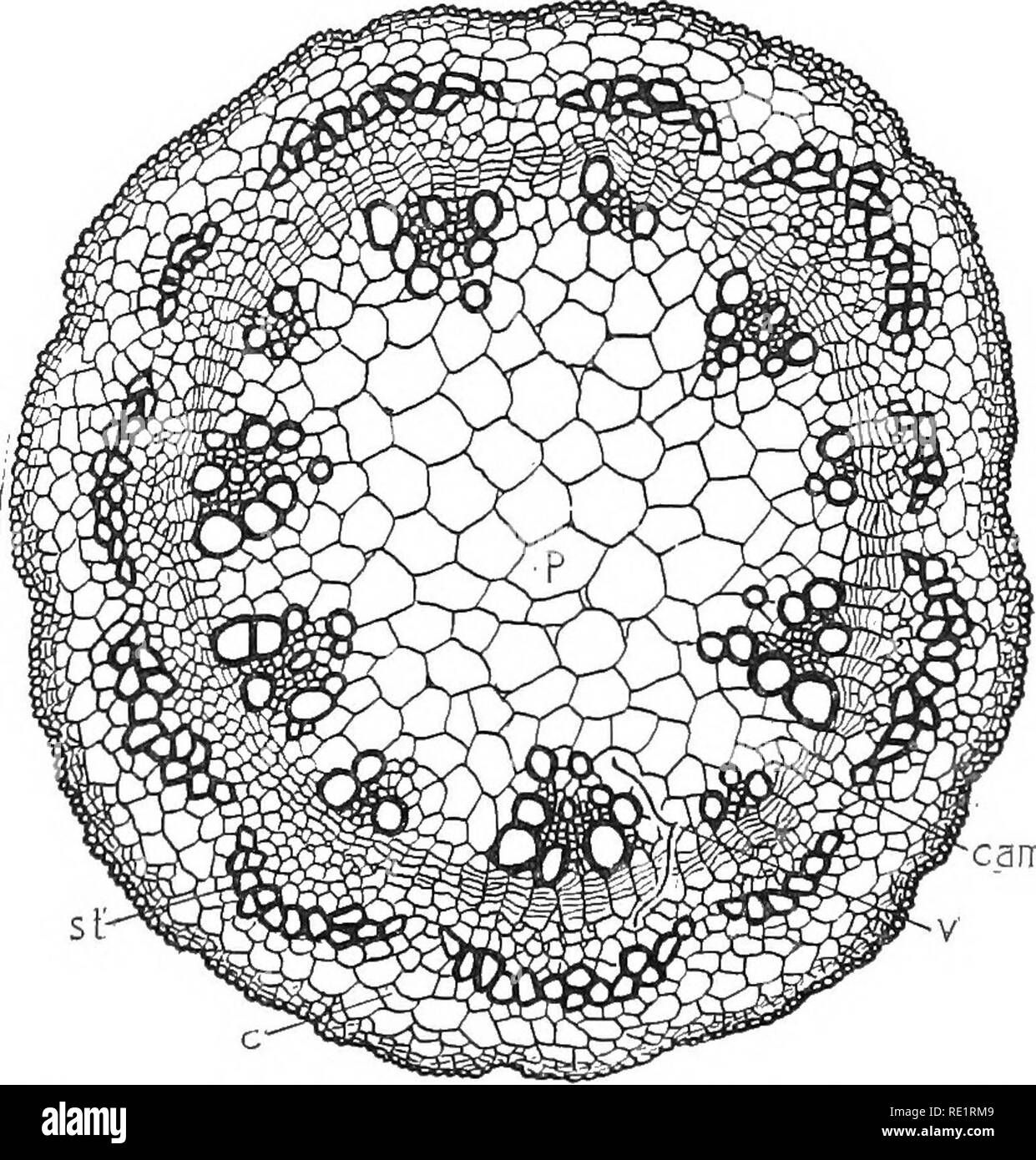 . Nature and development of plants. Botany. Fig. 53. Cross-section of a stem of castor bean showing the formation of the cambium between two vascular bundles: x, xylem; ph, phloem; c, cam- bium of the bundle. The faint lines, ic, are the first divisions of the parenchyma cells between the bundles that result in the formation of the cambium cylinder. of the cambium cylinder. This growth results in the formation of a layer of xylem on the inside of the cambium cylinder and a layer of phloem on the outside, and so brings about the principal. cam Fig. 54. Cross-section of a stem of castor bean in Stock Photohttps://www.alamy.com/image-license-details/?v=1https://www.alamy.com/nature-and-development-of-plants-botany-fig-53-cross-section-of-a-stem-of-castor-bean-showing-the-formation-of-the-cambium-between-two-vascular-bundles-x-xylem-ph-phloem-c-cam-bium-of-the-bundle-the-faint-lines-ic-are-the-first-divisions-of-the-parenchyma-cells-between-the-bundles-that-result-in-the-formation-of-the-cambium-cylinder-of-the-cambium-cylinder-this-growth-results-in-the-formation-of-a-layer-of-xylem-on-the-inside-of-the-cambium-cylinder-and-a-layer-of-phloem-on-the-outside-and-so-brings-about-the-principal-cam-fig-54-cross-section-of-a-stem-of-castor-bean-in-image232380521.html
. Nature and development of plants. Botany. Fig. 53. Cross-section of a stem of castor bean showing the formation of the cambium between two vascular bundles: x, xylem; ph, phloem; c, cam- bium of the bundle. The faint lines, ic, are the first divisions of the parenchyma cells between the bundles that result in the formation of the cambium cylinder. of the cambium cylinder. This growth results in the formation of a layer of xylem on the inside of the cambium cylinder and a layer of phloem on the outside, and so brings about the principal. cam Fig. 54. Cross-section of a stem of castor bean in Stock Photohttps://www.alamy.com/image-license-details/?v=1https://www.alamy.com/nature-and-development-of-plants-botany-fig-53-cross-section-of-a-stem-of-castor-bean-showing-the-formation-of-the-cambium-between-two-vascular-bundles-x-xylem-ph-phloem-c-cam-bium-of-the-bundle-the-faint-lines-ic-are-the-first-divisions-of-the-parenchyma-cells-between-the-bundles-that-result-in-the-formation-of-the-cambium-cylinder-of-the-cambium-cylinder-this-growth-results-in-the-formation-of-a-layer-of-xylem-on-the-inside-of-the-cambium-cylinder-and-a-layer-of-phloem-on-the-outside-and-so-brings-about-the-principal-cam-fig-54-cross-section-of-a-stem-of-castor-bean-in-image232380521.htmlRMRE1RM9–. Nature and development of plants. Botany. Fig. 53. Cross-section of a stem of castor bean showing the formation of the cambium between two vascular bundles: x, xylem; ph, phloem; c, cam- bium of the bundle. The faint lines, ic, are the first divisions of the parenchyma cells between the bundles that result in the formation of the cambium cylinder. of the cambium cylinder. This growth results in the formation of a layer of xylem on the inside of the cambium cylinder and a layer of phloem on the outside, and so brings about the principal. cam Fig. 54. Cross-section of a stem of castor bean in
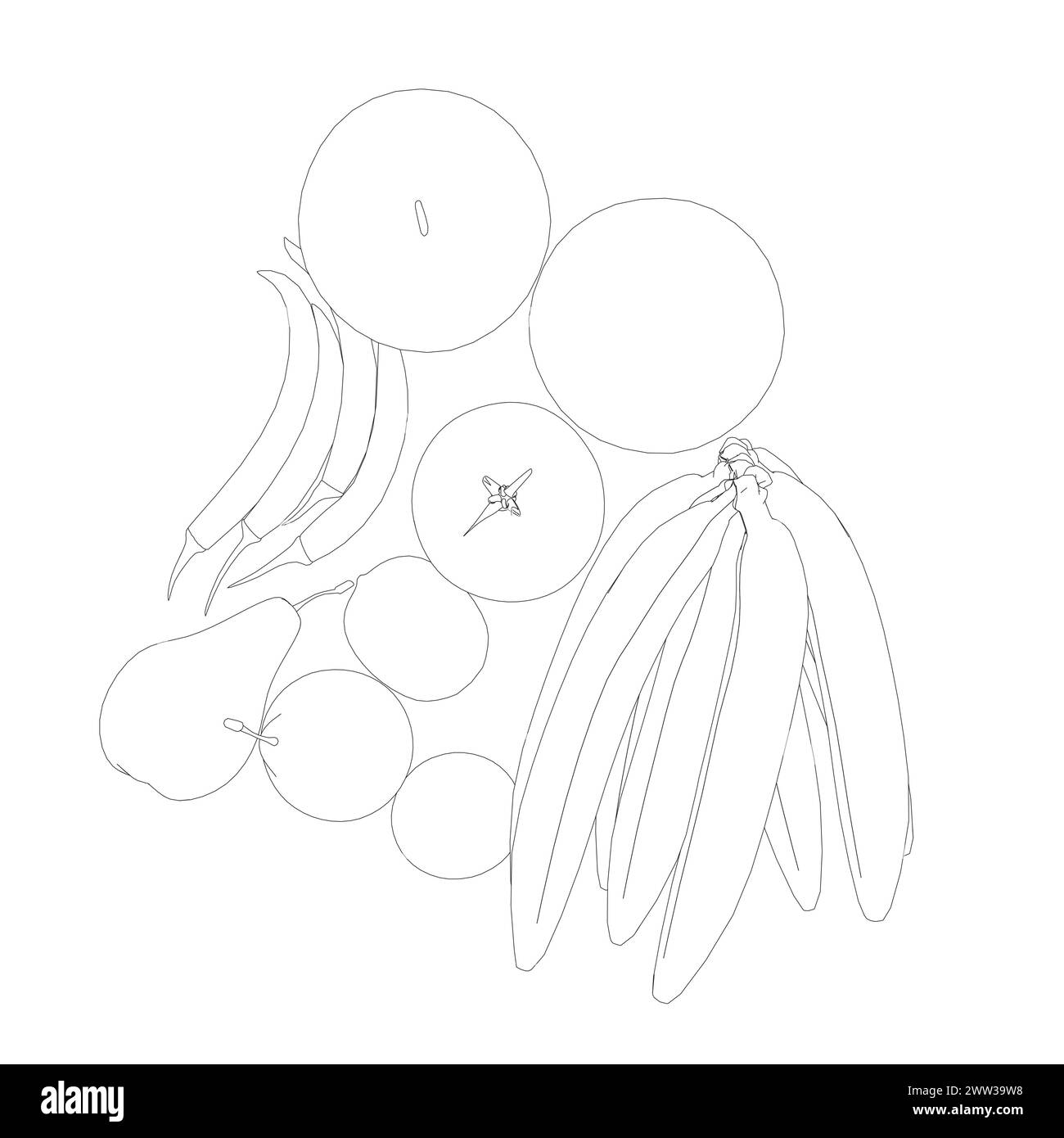 Fruit outline: bananas, apples, pears, peppers, tomato made of black lines isolated on a white background. Vector illustration. Stock Vectorhttps://www.alamy.com/image-license-details/?v=1https://www.alamy.com/fruit-outline-bananas-apples-pears-peppers-tomato-made-of-black-lines-isolated-on-a-white-background-vector-illustration-image600592532.html
Fruit outline: bananas, apples, pears, peppers, tomato made of black lines isolated on a white background. Vector illustration. Stock Vectorhttps://www.alamy.com/image-license-details/?v=1https://www.alamy.com/fruit-outline-bananas-apples-pears-peppers-tomato-made-of-black-lines-isolated-on-a-white-background-vector-illustration-image600592532.htmlRF2WW39W8–Fruit outline: bananas, apples, pears, peppers, tomato made of black lines isolated on a white background. Vector illustration.
RF2A7BJB9–Garden carrot icon, outline style
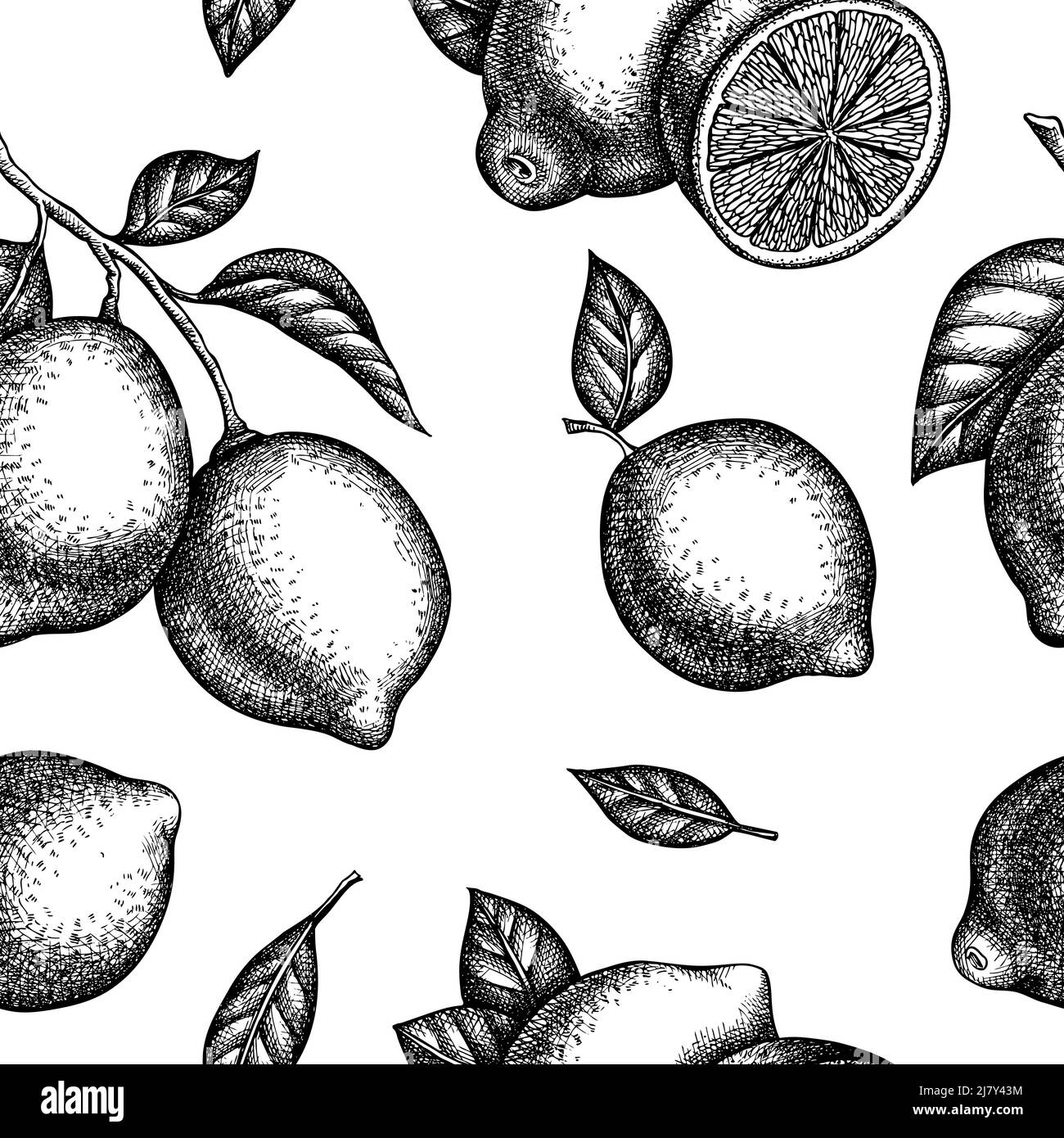 Citrus seamless pattern background design. Engraved style. Hand drawn lime. Stock Vectorhttps://www.alamy.com/image-license-details/?v=1https://www.alamy.com/citrus-seamless-pattern-background-design-engraved-style-hand-drawn-lime-image469578472.html
Citrus seamless pattern background design. Engraved style. Hand drawn lime. Stock Vectorhttps://www.alamy.com/image-license-details/?v=1https://www.alamy.com/citrus-seamless-pattern-background-design-engraved-style-hand-drawn-lime-image469578472.htmlRF2J7Y43M–Citrus seamless pattern background design. Engraved style. Hand drawn lime.
 . Illustration from book . 1891. Paul Hermann Wilhelm Taubert (1862-1897) 76 Bauhinia stem cross section Taub44 Stock Photohttps://www.alamy.com/image-license-details/?v=1https://www.alamy.com/illustration-from-book-1891-paul-hermann-wilhelm-taubert-1862-1897-76-bauhinia-stem-cross-section-taub44-image188240142.html
. Illustration from book . 1891. Paul Hermann Wilhelm Taubert (1862-1897) 76 Bauhinia stem cross section Taub44 Stock Photohttps://www.alamy.com/image-license-details/?v=1https://www.alamy.com/illustration-from-book-1891-paul-hermann-wilhelm-taubert-1862-1897-76-bauhinia-stem-cross-section-taub44-image188240142.htmlRMMX7266–. Illustration from book . 1891. Paul Hermann Wilhelm Taubert (1862-1897) 76 Bauhinia stem cross section Taub44
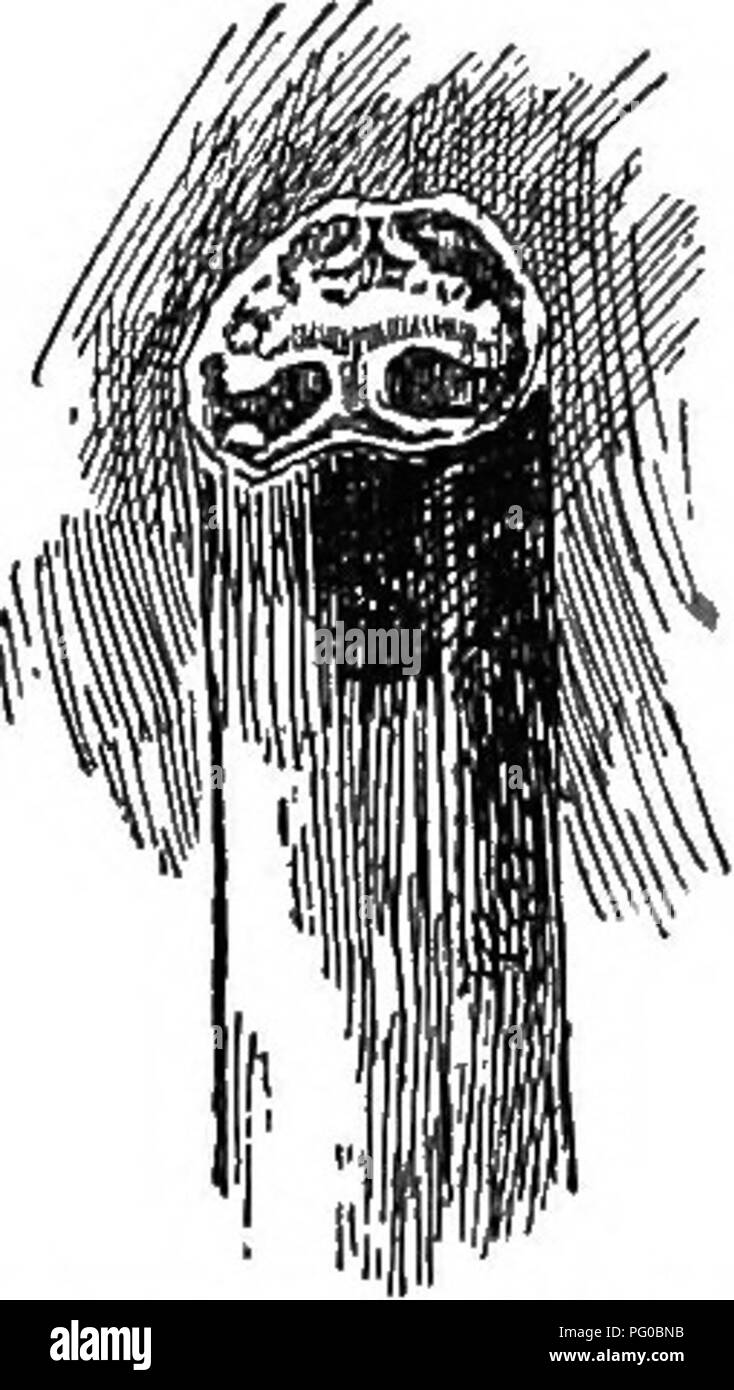 . Our ferns in their haunts; a guide to all the native species. Ferns. :he bracken. n of umbrella fern refers to the spreading character of the fronds, and oak fern is another allusion to the appearance of a cross section of the stem. In Arkansas it is reported to be called upland fern. The word bracken forms part of many English surnames, and fern, farn and fearn, probably referring to the same species form part of as many more. The superstitions that cluster about the bracken are very numerous. A cross section of the stem presents a curious arrangement of the vascular tissues which some have Stock Photohttps://www.alamy.com/image-license-details/?v=1https://www.alamy.com/our-ferns-in-their-haunts-a-guide-to-all-the-native-species-ferns-he-bracken-n-of-umbrella-fern-refers-to-the-spreading-character-of-the-fronds-and-oak-fern-is-another-allusion-to-the-appearance-of-a-cross-section-of-the-stem-in-arkansas-it-is-reported-to-be-called-upland-fern-the-word-bracken-forms-part-of-many-english-surnames-and-fern-farn-and-fearn-probably-referring-to-the-same-species-form-part-of-as-many-more-the-superstitions-that-cluster-about-the-bracken-are-very-numerous-a-cross-section-of-the-stem-presents-a-curious-arrangement-of-the-vascular-tissues-which-some-have-image216368135.html
. Our ferns in their haunts; a guide to all the native species. Ferns. :he bracken. n of umbrella fern refers to the spreading character of the fronds, and oak fern is another allusion to the appearance of a cross section of the stem. In Arkansas it is reported to be called upland fern. The word bracken forms part of many English surnames, and fern, farn and fearn, probably referring to the same species form part of as many more. The superstitions that cluster about the bracken are very numerous. A cross section of the stem presents a curious arrangement of the vascular tissues which some have Stock Photohttps://www.alamy.com/image-license-details/?v=1https://www.alamy.com/our-ferns-in-their-haunts-a-guide-to-all-the-native-species-ferns-he-bracken-n-of-umbrella-fern-refers-to-the-spreading-character-of-the-fronds-and-oak-fern-is-another-allusion-to-the-appearance-of-a-cross-section-of-the-stem-in-arkansas-it-is-reported-to-be-called-upland-fern-the-word-bracken-forms-part-of-many-english-surnames-and-fern-farn-and-fearn-probably-referring-to-the-same-species-form-part-of-as-many-more-the-superstitions-that-cluster-about-the-bracken-are-very-numerous-a-cross-section-of-the-stem-presents-a-curious-arrangement-of-the-vascular-tissues-which-some-have-image216368135.htmlRMPG0BNB–. Our ferns in their haunts; a guide to all the native species. Ferns. :he bracken. n of umbrella fern refers to the spreading character of the fronds, and oak fern is another allusion to the appearance of a cross section of the stem. In Arkansas it is reported to be called upland fern. The word bracken forms part of many English surnames, and fern, farn and fearn, probably referring to the same species form part of as many more. The superstitions that cluster about the bracken are very numerous. A cross section of the stem presents a curious arrangement of the vascular tissues which some have
RF2AB0JMA–Soil ground icon. Simple illustration of soil ground vector icon for web design isolated on white background
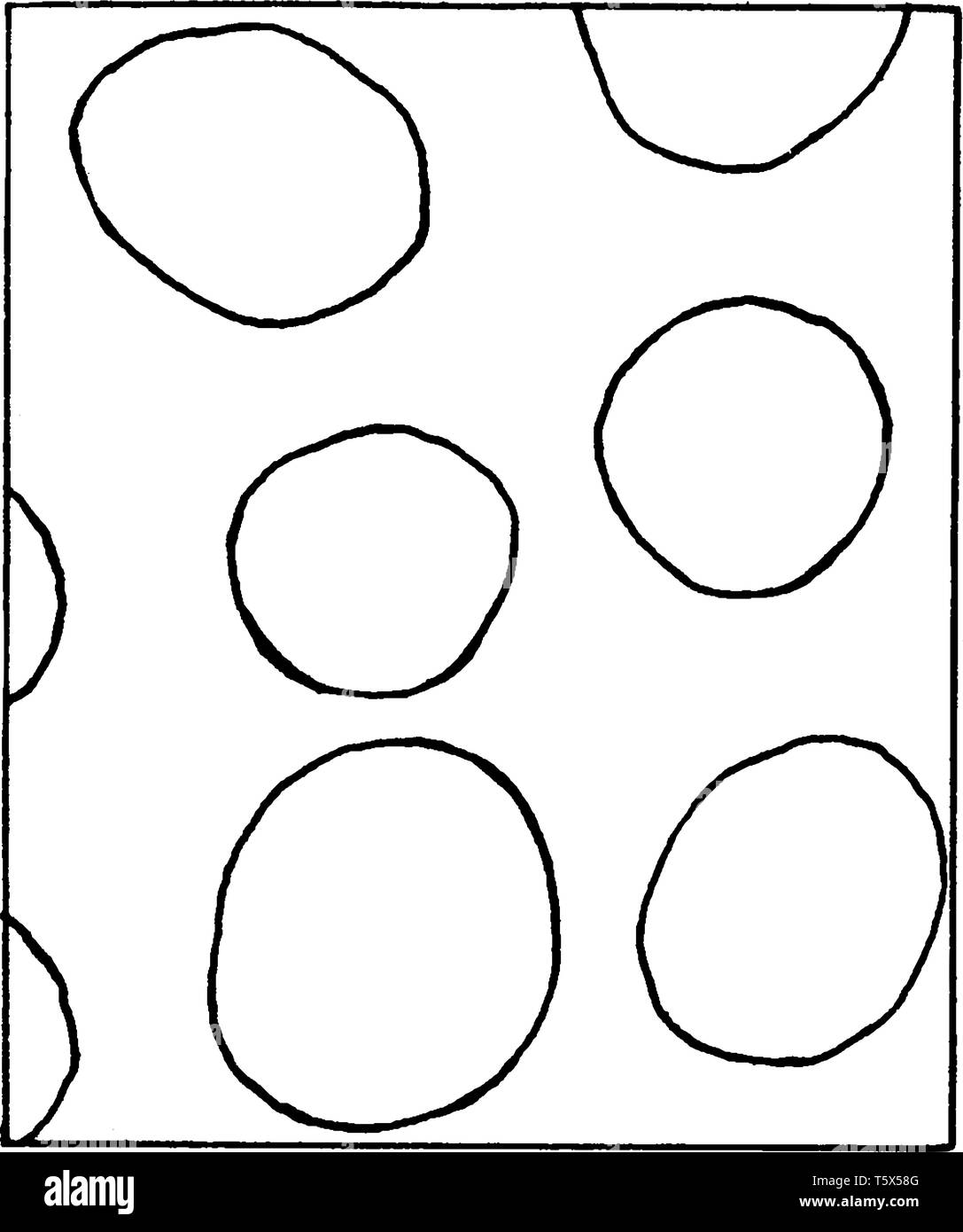 An Image showing cross section of the stem of hop. It is round shape of the tissue, vintage line drawing or engraving illustration. Stock Vectorhttps://www.alamy.com/image-license-details/?v=1https://www.alamy.com/an-image-showing-cross-section-of-the-stem-of-hop-it-is-round-shape-of-the-tissue-vintage-line-drawing-or-engraving-illustration-image244593344.html
An Image showing cross section of the stem of hop. It is round shape of the tissue, vintage line drawing or engraving illustration. Stock Vectorhttps://www.alamy.com/image-license-details/?v=1https://www.alamy.com/an-image-showing-cross-section-of-the-stem-of-hop-it-is-round-shape-of-the-tissue-vintage-line-drawing-or-engraving-illustration-image244593344.htmlRFT5X58G–An Image showing cross section of the stem of hop. It is round shape of the tissue, vintage line drawing or engraving illustration.
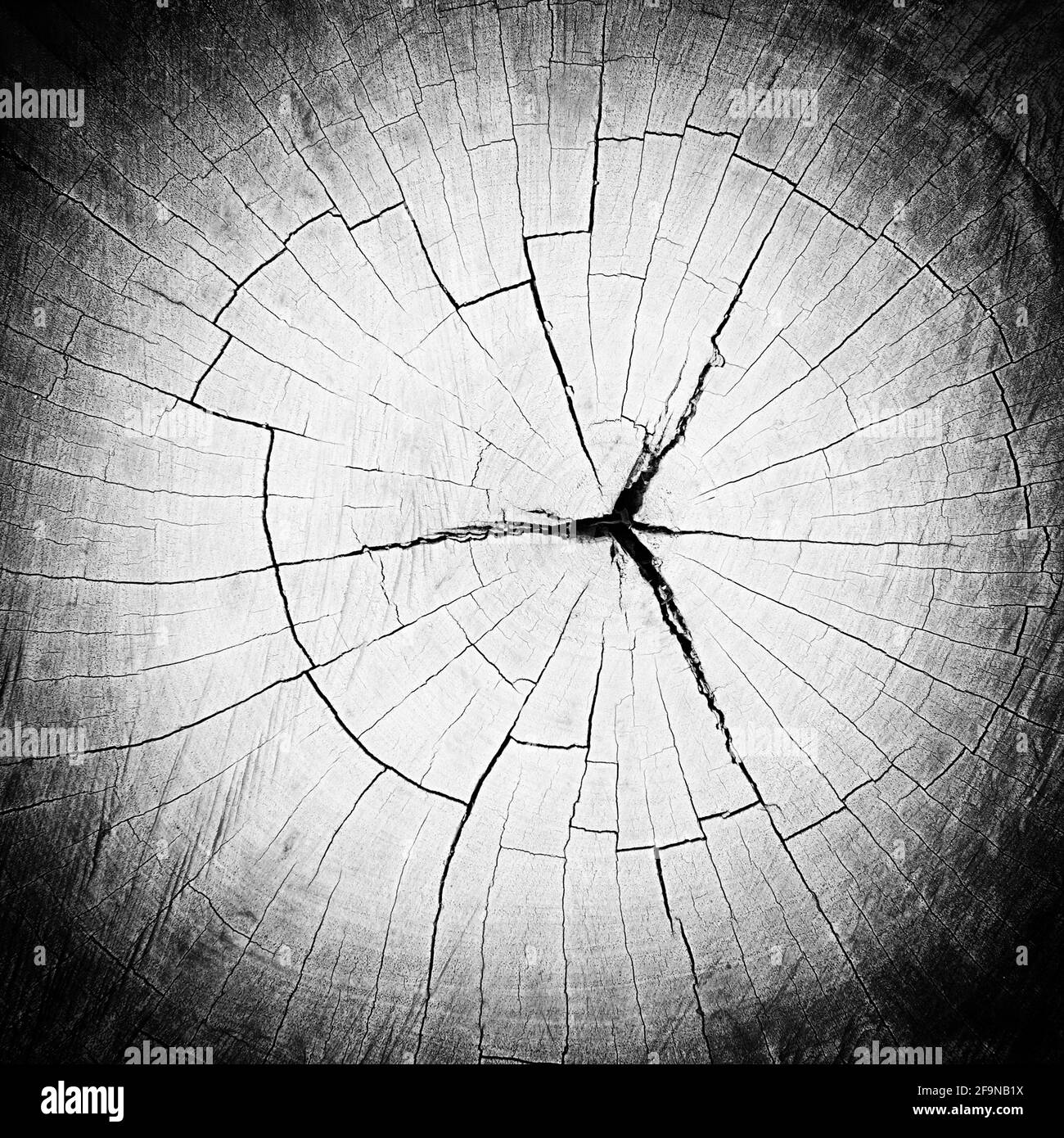 Dry old cracked tree stump texture with lomo effect Stock Photohttps://www.alamy.com/image-license-details/?v=1https://www.alamy.com/dry-old-cracked-tree-stump-texture-with-lomo-effect-image419050406.html
Dry old cracked tree stump texture with lomo effect Stock Photohttps://www.alamy.com/image-license-details/?v=1https://www.alamy.com/dry-old-cracked-tree-stump-texture-with-lomo-effect-image419050406.htmlRF2F9NB1X–Dry old cracked tree stump texture with lomo effect
 An example of single flower stem, it is known as Round bulbs which are circular in cross section, vintage line drawing or engraving illustration. Stock Vectorhttps://www.alamy.com/image-license-details/?v=1https://www.alamy.com/an-example-of-single-flower-stem-it-is-known-as-round-bulbs-which-are-circular-in-cross-section-vintage-line-drawing-or-engraving-illustration-image244531135.html
An example of single flower stem, it is known as Round bulbs which are circular in cross section, vintage line drawing or engraving illustration. Stock Vectorhttps://www.alamy.com/image-license-details/?v=1https://www.alamy.com/an-example-of-single-flower-stem-it-is-known-as-round-bulbs-which-are-circular-in-cross-section-vintage-line-drawing-or-engraving-illustration-image244531135.htmlRFT5R9XR–An example of single flower stem, it is known as Round bulbs which are circular in cross section, vintage line drawing or engraving illustration.
 The elements of botany for beginners and for schools . they press upon each other and become wedge-shaped in the cross sec-lion; and they continue to grow from the outside, next the bark, so thatthey become very thin wedges or plates. Between the plates or wedgesare very thin plates (in cross section lines) of much compressed cellulartissue, which connect (he pith with the bark. The plan of a one-year-oldwoody stem of this kind is exhibited in the figures, which are essentiallydiagrams. 429. When such a stem grows on from year to year, it adds annually a Fig. 474. Short piece of stem of Flax, Stock Photohttps://www.alamy.com/image-license-details/?v=1https://www.alamy.com/the-elements-of-botany-for-beginners-and-for-schools-they-press-upon-each-other-and-become-wedge-shaped-in-the-cross-sec-lion-and-they-continue-to-grow-from-the-outside-next-the-bark-so-thatthey-become-very-thin-wedges-or-plates-between-the-plates-or-wedgesare-very-thin-plates-in-cross-section-lines-of-much-compressed-cellulartissue-which-connect-he-pith-with-the-bark-the-plan-of-a-one-year-oldwoody-stem-of-this-kind-is-exhibited-in-the-figures-which-are-essentiallydiagrams-429-when-such-a-stem-grows-on-from-year-to-year-it-adds-annually-a-fig-474-short-piece-of-stem-of-flax-image343026394.html
The elements of botany for beginners and for schools . they press upon each other and become wedge-shaped in the cross sec-lion; and they continue to grow from the outside, next the bark, so thatthey become very thin wedges or plates. Between the plates or wedgesare very thin plates (in cross section lines) of much compressed cellulartissue, which connect (he pith with the bark. The plan of a one-year-oldwoody stem of this kind is exhibited in the figures, which are essentiallydiagrams. 429. When such a stem grows on from year to year, it adds annually a Fig. 474. Short piece of stem of Flax, Stock Photohttps://www.alamy.com/image-license-details/?v=1https://www.alamy.com/the-elements-of-botany-for-beginners-and-for-schools-they-press-upon-each-other-and-become-wedge-shaped-in-the-cross-sec-lion-and-they-continue-to-grow-from-the-outside-next-the-bark-so-thatthey-become-very-thin-wedges-or-plates-between-the-plates-or-wedgesare-very-thin-plates-in-cross-section-lines-of-much-compressed-cellulartissue-which-connect-he-pith-with-the-bark-the-plan-of-a-one-year-oldwoody-stem-of-this-kind-is-exhibited-in-the-figures-which-are-essentiallydiagrams-429-when-such-a-stem-grows-on-from-year-to-year-it-adds-annually-a-fig-474-short-piece-of-stem-of-flax-image343026394.htmlRM2AX25JJ–The elements of botany for beginners and for schools . they press upon each other and become wedge-shaped in the cross sec-lion; and they continue to grow from the outside, next the bark, so thatthey become very thin wedges or plates. Between the plates or wedgesare very thin plates (in cross section lines) of much compressed cellulartissue, which connect (he pith with the bark. The plan of a one-year-oldwoody stem of this kind is exhibited in the figures, which are essentiallydiagrams. 429. When such a stem grows on from year to year, it adds annually a Fig. 474. Short piece of stem of Flax,
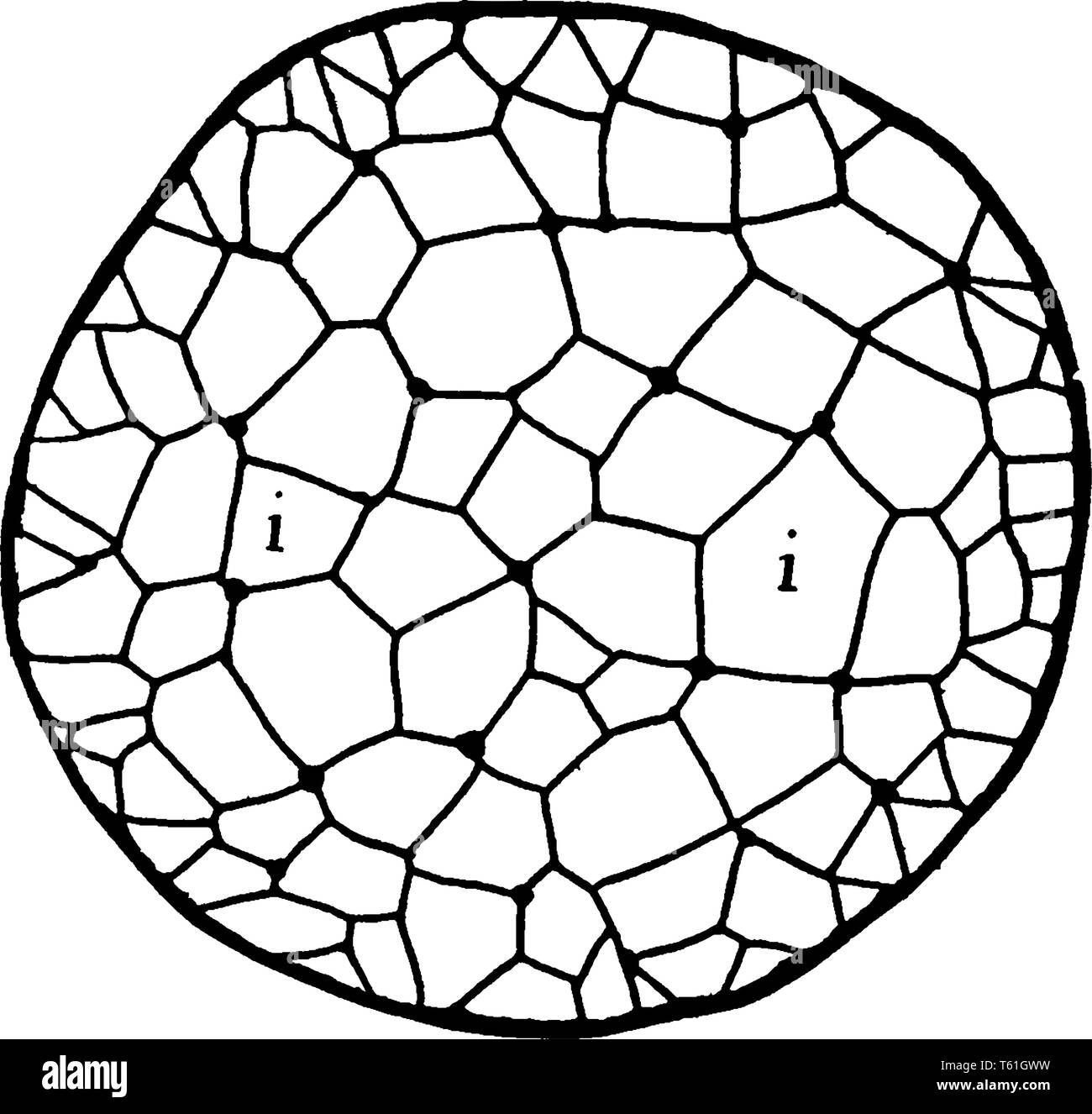 A diagram of cross section of Juncus Stem which is shows the black lines traversing the section are really chains of cells, vintage line drawing or en Stock Vectorhttps://www.alamy.com/image-license-details/?v=1https://www.alamy.com/a-diagram-of-cross-section-of-juncus-stem-which-is-shows-the-black-lines-traversing-the-section-are-really-chains-of-cells-vintage-line-drawing-or-en-image244668309.html
A diagram of cross section of Juncus Stem which is shows the black lines traversing the section are really chains of cells, vintage line drawing or en Stock Vectorhttps://www.alamy.com/image-license-details/?v=1https://www.alamy.com/a-diagram-of-cross-section-of-juncus-stem-which-is-shows-the-black-lines-traversing-the-section-are-really-chains-of-cells-vintage-line-drawing-or-en-image244668309.htmlRFT61GWW–A diagram of cross section of Juncus Stem which is shows the black lines traversing the section are really chains of cells, vintage line drawing or en
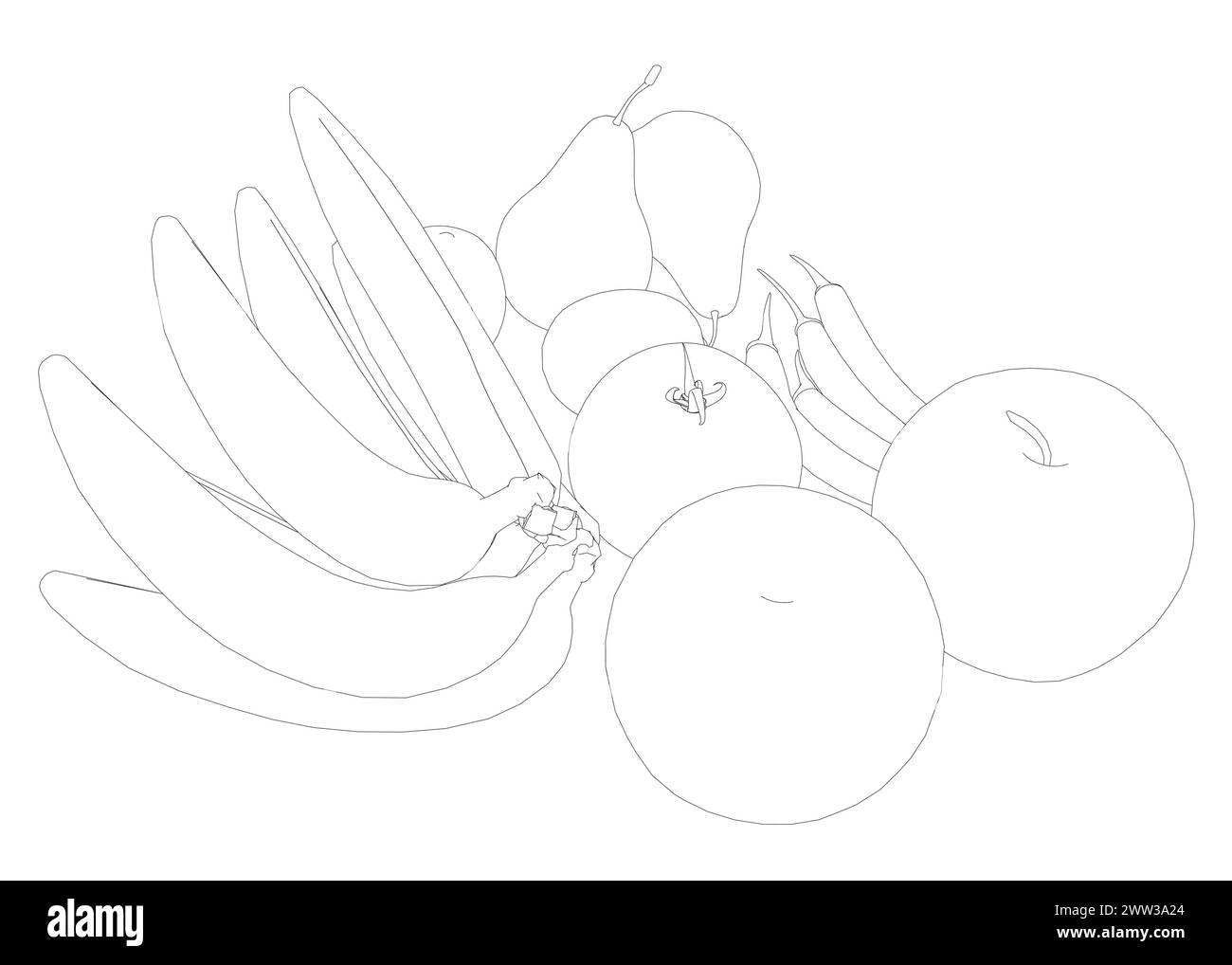 Fruit outline: bananas, apples, pears, peppers, tomato made of black lines isolated on a white background. Vector illustration. Stock Vectorhttps://www.alamy.com/image-license-details/?v=1https://www.alamy.com/fruit-outline-bananas-apples-pears-peppers-tomato-made-of-black-lines-isolated-on-a-white-background-vector-illustration-image600592668.html
Fruit outline: bananas, apples, pears, peppers, tomato made of black lines isolated on a white background. Vector illustration. Stock Vectorhttps://www.alamy.com/image-license-details/?v=1https://www.alamy.com/fruit-outline-bananas-apples-pears-peppers-tomato-made-of-black-lines-isolated-on-a-white-background-vector-illustration-image600592668.htmlRF2WW3A24–Fruit outline: bananas, apples, pears, peppers, tomato made of black lines isolated on a white background. Vector illustration.
 . Illustration from book . 1891. Paul Hermann Wilhelm Taubert (1862-1897) 67 Bauhinia stem cross section Taub44 Stock Photohttps://www.alamy.com/image-license-details/?v=1https://www.alamy.com/illustration-from-book-1891-paul-hermann-wilhelm-taubert-1862-1897-67-bauhinia-stem-cross-section-taub44-image188943322.html
. Illustration from book . 1891. Paul Hermann Wilhelm Taubert (1862-1897) 67 Bauhinia stem cross section Taub44 Stock Photohttps://www.alamy.com/image-license-details/?v=1https://www.alamy.com/illustration-from-book-1891-paul-hermann-wilhelm-taubert-1862-1897-67-bauhinia-stem-cross-section-taub44-image188943322.htmlRMMYB33P–. Illustration from book . 1891. Paul Hermann Wilhelm Taubert (1862-1897) 67 Bauhinia stem cross section Taub44
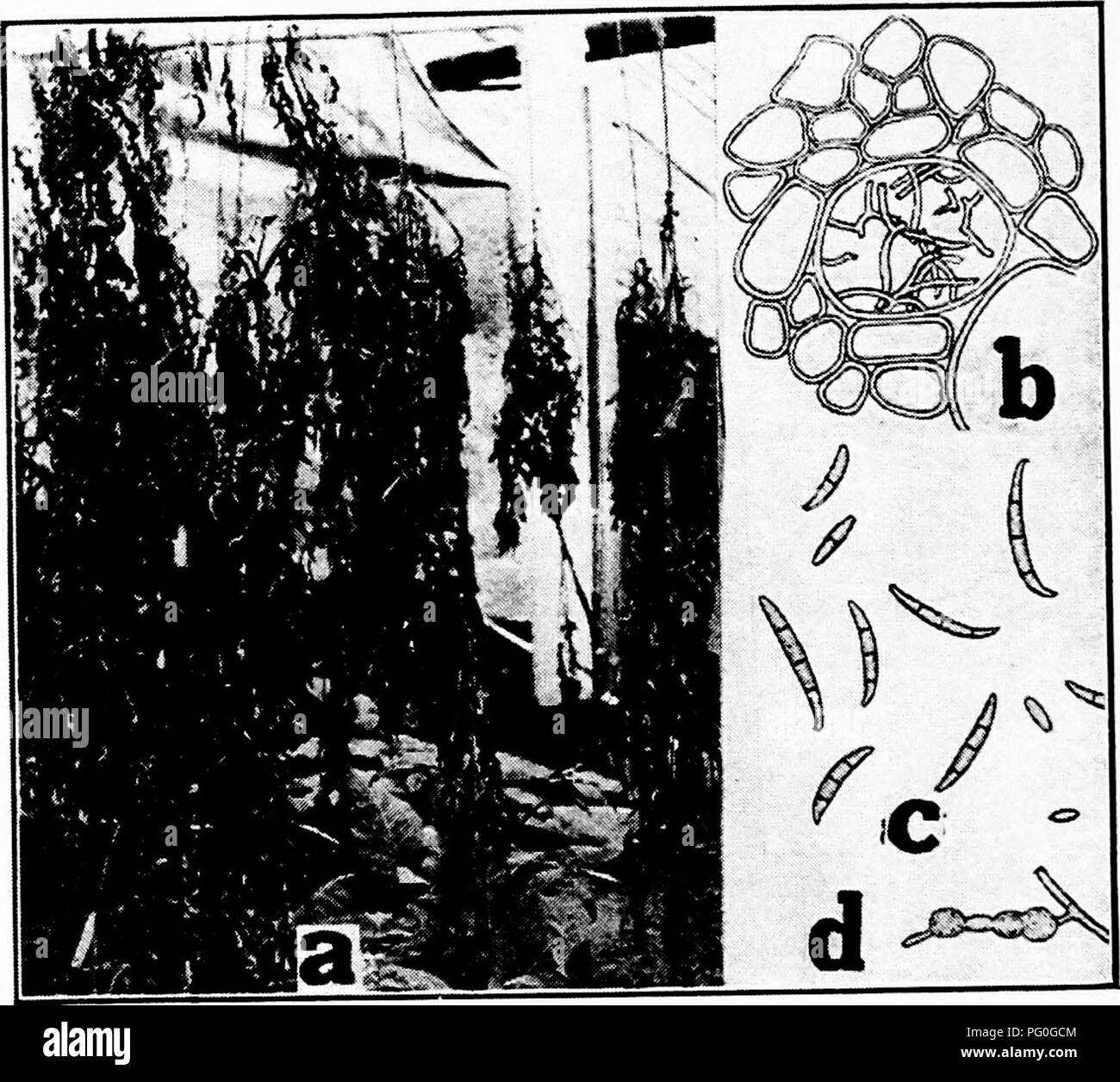 . Diseases of greenhouse crops and their control . Vegetables; Plant diseases; Plant diseases. Fig. 38. Tomato Diseases. o Sleeping sickness, 6. cross section of fibrovascular bundle of infected tomato stem showing mycelium, c. spores, d. chalmydospores (b-d after Schwarze).. Please note that these images are extracted from scanned page images that may have been digitally enhanced for readability - coloration and appearance of these illustrations may not perfectly resemble the original work.. Taubenhaus, Jacob Joseph, 1884-1937. New York : E. P. Dutton Stock Photohttps://www.alamy.com/image-license-details/?v=1https://www.alamy.com/diseases-of-greenhouse-crops-and-their-control-vegetables-plant-diseases-plant-diseases-fig-38-tomato-diseases-o-sleeping-sickness-6-cross-section-of-fibrovascular-bundle-of-infected-tomato-stem-showing-mycelium-c-spores-d-chalmydospores-b-d-after-schwarze-please-note-that-these-images-are-extracted-from-scanned-page-images-that-may-have-been-digitally-enhanced-for-readability-coloration-and-appearance-of-these-illustrations-may-not-perfectly-resemble-the-original-work-taubenhaus-jacob-joseph-1884-1937-new-york-e-p-dutton-image216371812.html
. Diseases of greenhouse crops and their control . Vegetables; Plant diseases; Plant diseases. Fig. 38. Tomato Diseases. o Sleeping sickness, 6. cross section of fibrovascular bundle of infected tomato stem showing mycelium, c. spores, d. chalmydospores (b-d after Schwarze).. Please note that these images are extracted from scanned page images that may have been digitally enhanced for readability - coloration and appearance of these illustrations may not perfectly resemble the original work.. Taubenhaus, Jacob Joseph, 1884-1937. New York : E. P. Dutton Stock Photohttps://www.alamy.com/image-license-details/?v=1https://www.alamy.com/diseases-of-greenhouse-crops-and-their-control-vegetables-plant-diseases-plant-diseases-fig-38-tomato-diseases-o-sleeping-sickness-6-cross-section-of-fibrovascular-bundle-of-infected-tomato-stem-showing-mycelium-c-spores-d-chalmydospores-b-d-after-schwarze-please-note-that-these-images-are-extracted-from-scanned-page-images-that-may-have-been-digitally-enhanced-for-readability-coloration-and-appearance-of-these-illustrations-may-not-perfectly-resemble-the-original-work-taubenhaus-jacob-joseph-1884-1937-new-york-e-p-dutton-image216371812.htmlRMPG0GCM–. Diseases of greenhouse crops and their control . Vegetables; Plant diseases; Plant diseases. Fig. 38. Tomato Diseases. o Sleeping sickness, 6. cross section of fibrovascular bundle of infected tomato stem showing mycelium, c. spores, d. chalmydospores (b-d after Schwarze).. Please note that these images are extracted from scanned page images that may have been digitally enhanced for readability - coloration and appearance of these illustrations may not perfectly resemble the original work.. Taubenhaus, Jacob Joseph, 1884-1937. New York : E. P. Dutton
RF2AB0KAP–Soil ground icon. Outline soil ground vector icon for web design isolated on white background
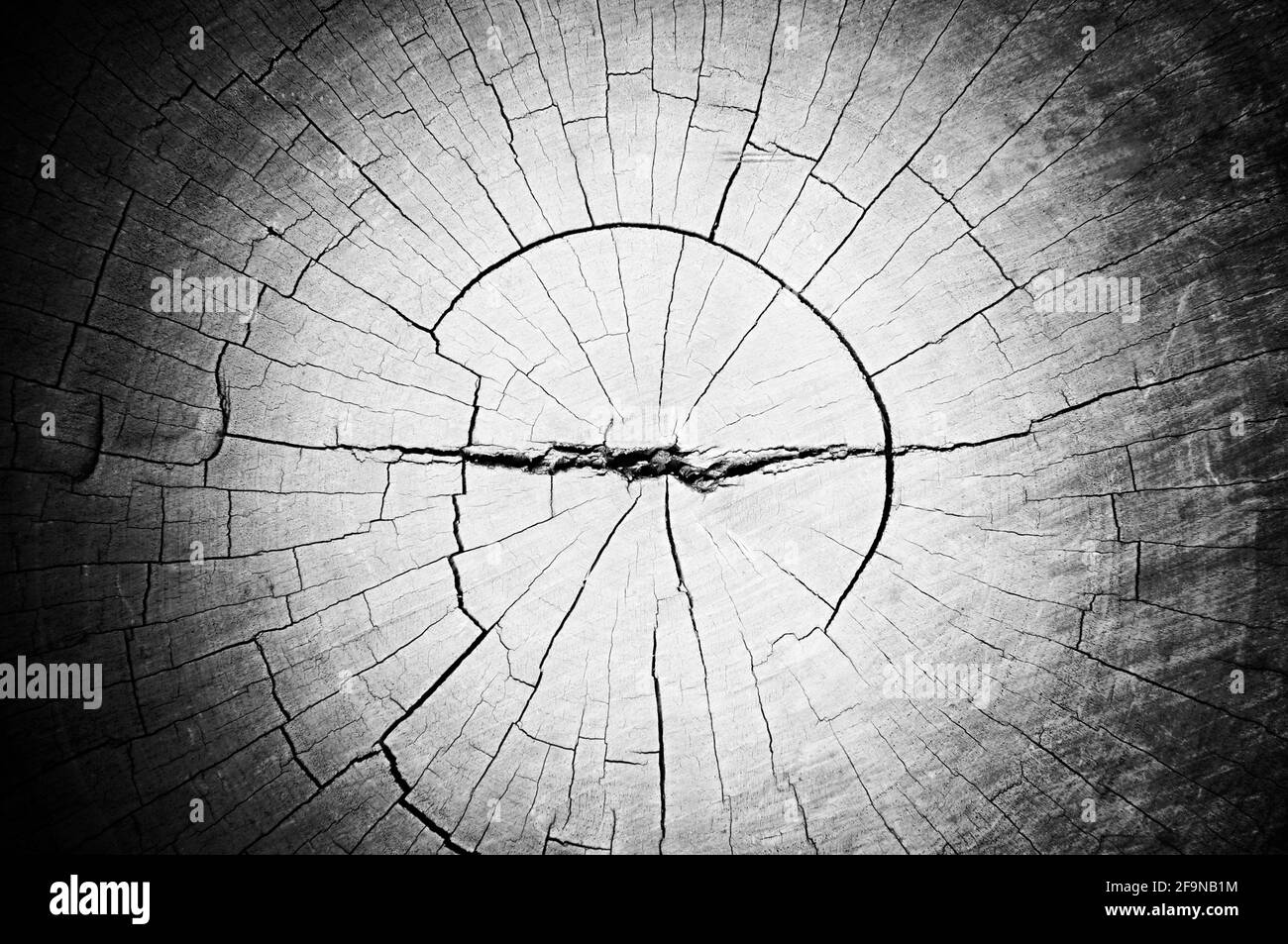 Dry old cracked tree stump texture with lomo effect Stock Photohttps://www.alamy.com/image-license-details/?v=1https://www.alamy.com/dry-old-cracked-tree-stump-texture-with-lomo-effect-image419050400.html
Dry old cracked tree stump texture with lomo effect Stock Photohttps://www.alamy.com/image-license-details/?v=1https://www.alamy.com/dry-old-cracked-tree-stump-texture-with-lomo-effect-image419050400.htmlRF2F9NB1M–Dry old cracked tree stump texture with lomo effect
 Southern field crops (exclusive of forage plants) . Fie. 208. — Cross Section of P,rt of - Stem of Sug.r-c.e. The dark spots inclosing smaller white spots are the bundles whichcontain the tubes and vessels through which liquids circulate ; the greaterpart of this section consists of pith cells. Greatly enlarged. white pith cells that the sugar is contained. Ihe enormouspressure of a mill is required to expel the juice in whichthe sugar is dissolved. 488 SOUTHERN FIELD CROPS At intervals among these pith cells may be found strands oftougher tissue running parallel to the length of the stalk Stock Photohttps://www.alamy.com/image-license-details/?v=1https://www.alamy.com/southern-field-crops-exclusive-of-forage-plants-fie-208-cross-section-of-prt-of-stem-of-sugr-ce-the-dark-spots-inclosing-smaller-white-spots-are-the-bundles-whichcontain-the-tubes-and-vessels-through-which-liquids-circulate-the-greaterpart-of-this-section-consists-of-pith-cells-greatly-enlarged-white-pith-cells-that-the-sugar-is-contained-ihe-enormouspressure-of-a-mill-is-required-to-expel-the-juice-in-whichthe-sugar-is-dissolved-488-southern-field-crops-at-intervals-among-these-pith-cells-may-be-found-strands-oftougher-tissue-running-parallel-to-the-length-of-the-stalk-image338914482.html
Southern field crops (exclusive of forage plants) . Fie. 208. — Cross Section of P,rt of - Stem of Sug.r-c.e. The dark spots inclosing smaller white spots are the bundles whichcontain the tubes and vessels through which liquids circulate ; the greaterpart of this section consists of pith cells. Greatly enlarged. white pith cells that the sugar is contained. Ihe enormouspressure of a mill is required to expel the juice in whichthe sugar is dissolved. 488 SOUTHERN FIELD CROPS At intervals among these pith cells may be found strands oftougher tissue running parallel to the length of the stalk Stock Photohttps://www.alamy.com/image-license-details/?v=1https://www.alamy.com/southern-field-crops-exclusive-of-forage-plants-fie-208-cross-section-of-prt-of-stem-of-sugr-ce-the-dark-spots-inclosing-smaller-white-spots-are-the-bundles-whichcontain-the-tubes-and-vessels-through-which-liquids-circulate-the-greaterpart-of-this-section-consists-of-pith-cells-greatly-enlarged-white-pith-cells-that-the-sugar-is-contained-ihe-enormouspressure-of-a-mill-is-required-to-expel-the-juice-in-whichthe-sugar-is-dissolved-488-southern-field-crops-at-intervals-among-these-pith-cells-may-be-found-strands-oftougher-tissue-running-parallel-to-the-length-of-the-stalk-image338914482.htmlRM2AKATTJ–Southern field crops (exclusive of forage plants) . Fie. 208. — Cross Section of P,rt of - Stem of Sug.r-c.e. The dark spots inclosing smaller white spots are the bundles whichcontain the tubes and vessels through which liquids circulate ; the greaterpart of this section consists of pith cells. Greatly enlarged. white pith cells that the sugar is contained. Ihe enormouspressure of a mill is required to expel the juice in whichthe sugar is dissolved. 488 SOUTHERN FIELD CROPS At intervals among these pith cells may be found strands oftougher tissue running parallel to the length of the stalk
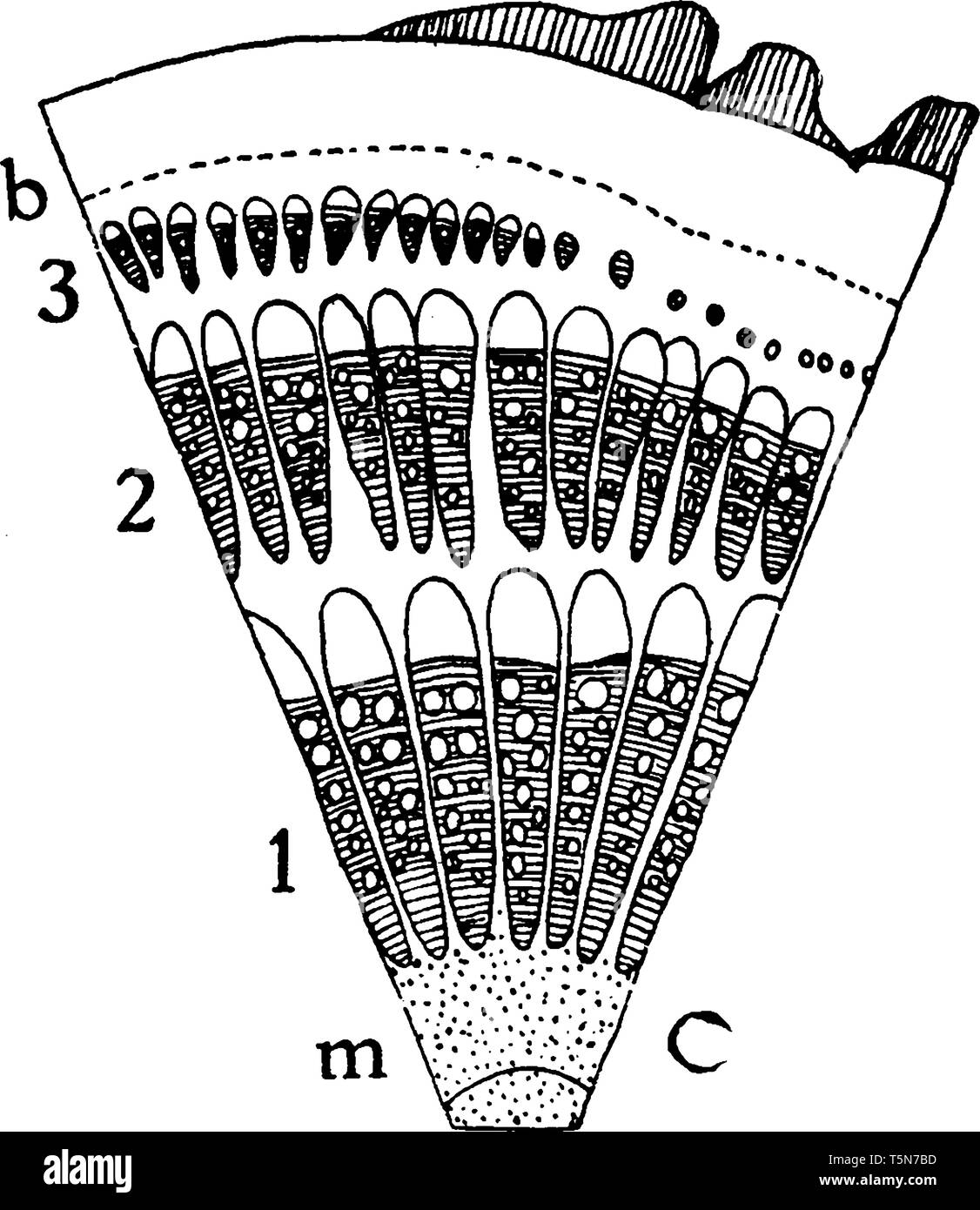 This is a diagram of Unusual Stem Growth which is showing portion of a cross section of stem of Gnetum Scandens, vintage line drawing or engraving ill Stock Vectorhttps://www.alamy.com/image-license-details/?v=1https://www.alamy.com/this-is-a-diagram-of-unusual-stem-growth-which-is-showing-portion-of-a-cross-section-of-stem-of-gnetum-scandens-vintage-line-drawing-or-engraving-ill-image244485233.html
This is a diagram of Unusual Stem Growth which is showing portion of a cross section of stem of Gnetum Scandens, vintage line drawing or engraving ill Stock Vectorhttps://www.alamy.com/image-license-details/?v=1https://www.alamy.com/this-is-a-diagram-of-unusual-stem-growth-which-is-showing-portion-of-a-cross-section-of-stem-of-gnetum-scandens-vintage-line-drawing-or-engraving-ill-image244485233.htmlRFT5N7BD–This is a diagram of Unusual Stem Growth which is showing portion of a cross section of stem of Gnetum Scandens, vintage line drawing or engraving ill
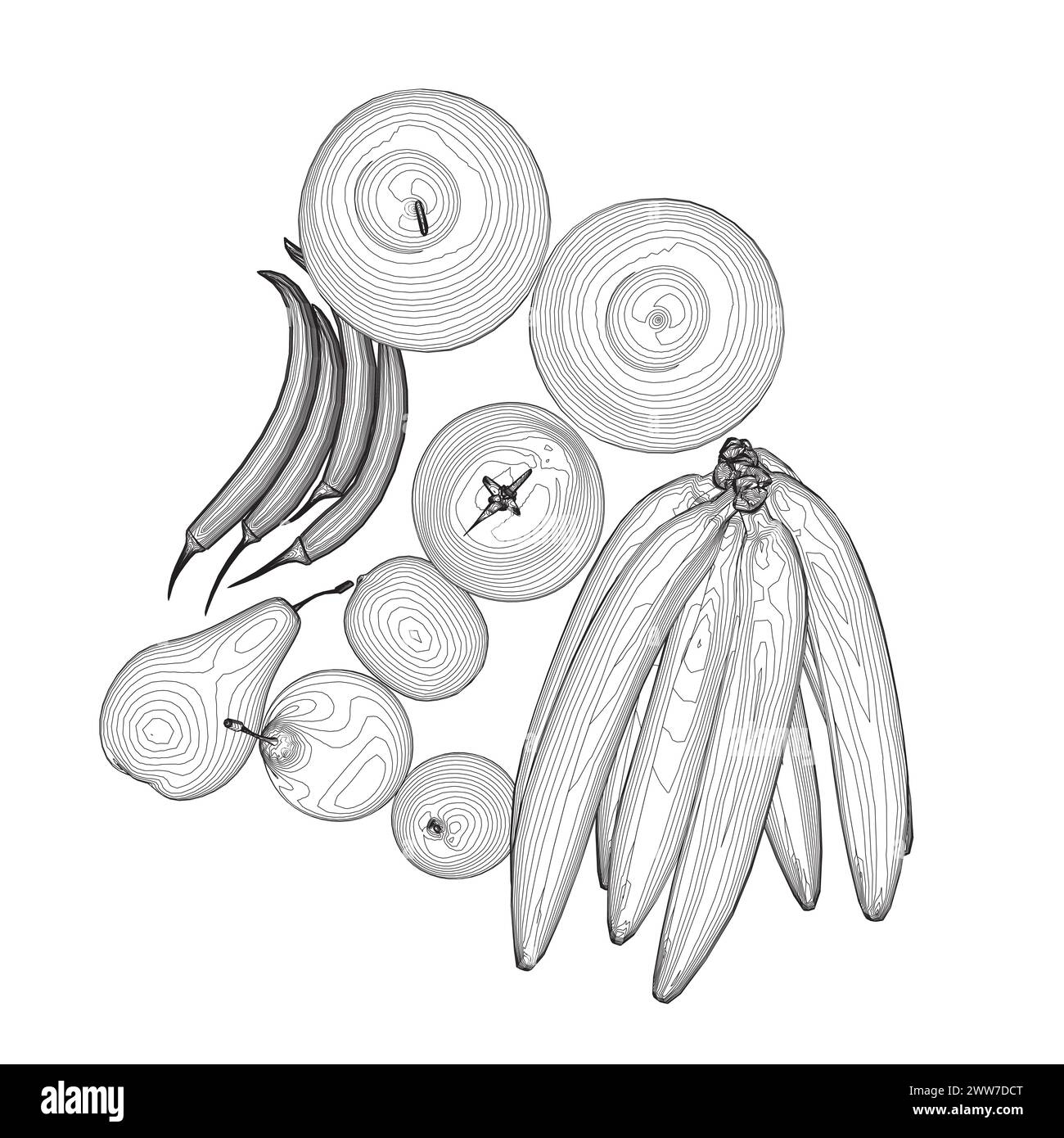 Fruit outline: bananas, apples, pears, peppers, tomato made of black lines isolated on a white background. Vector illustration. Stock Vectorhttps://www.alamy.com/image-license-details/?v=1https://www.alamy.com/fruit-outline-bananas-apples-pears-peppers-tomato-made-of-black-lines-isolated-on-a-white-background-vector-illustration-image600683128.html
Fruit outline: bananas, apples, pears, peppers, tomato made of black lines isolated on a white background. Vector illustration. Stock Vectorhttps://www.alamy.com/image-license-details/?v=1https://www.alamy.com/fruit-outline-bananas-apples-pears-peppers-tomato-made-of-black-lines-isolated-on-a-white-background-vector-illustration-image600683128.htmlRF2WW7DCT–Fruit outline: bananas, apples, pears, peppers, tomato made of black lines isolated on a white background. Vector illustration.
 . Illustration from book . 1891. Paul Hermann Wilhelm Taubert (1862-1897) 76 Bauhinia stem cross section Taub44 Stock Photohttps://www.alamy.com/image-license-details/?v=1https://www.alamy.com/illustration-from-book-1891-paul-hermann-wilhelm-taubert-1862-1897-76-bauhinia-stem-cross-section-taub44-image187673148.html
. Illustration from book . 1891. Paul Hermann Wilhelm Taubert (1862-1897) 76 Bauhinia stem cross section Taub44 Stock Photohttps://www.alamy.com/image-license-details/?v=1https://www.alamy.com/illustration-from-book-1891-paul-hermann-wilhelm-taubert-1862-1897-76-bauhinia-stem-cross-section-taub44-image187673148.htmlRMMW970C–. Illustration from book . 1891. Paul Hermann Wilhelm Taubert (1862-1897) 76 Bauhinia stem cross section Taub44
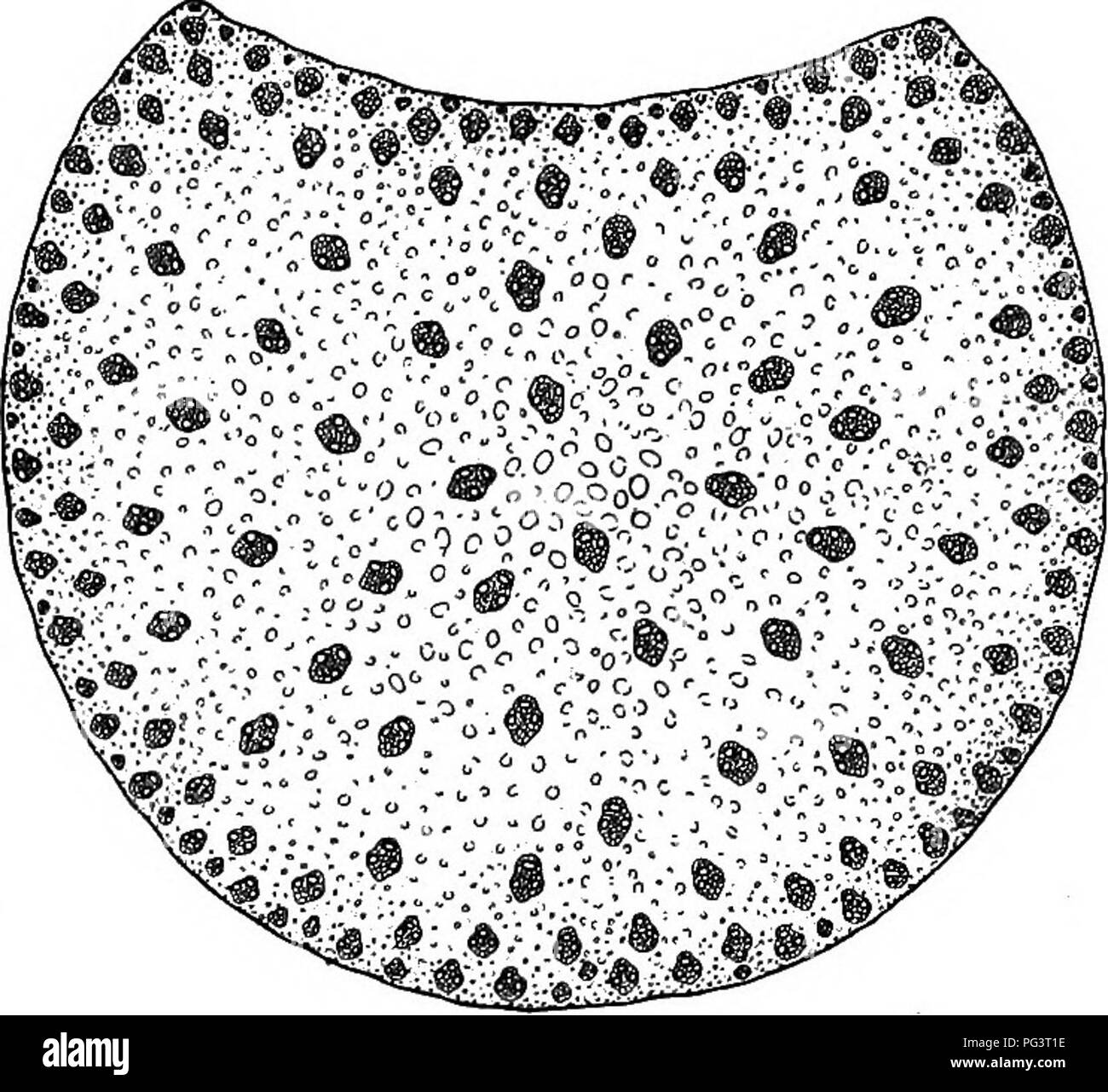 . Plant life and plant uses; an elementary textbook, a foundation for the study of agriculture, domestic science or college botany. Botany. FROM ROOT TO LEAF 83. - Cross section of corn stem showing the scat- tered arrangement of bundles. never become so large and strong as the stems of trees which have their wood in lay- ers. It is not an arrangement which is so well suited to great size and strength. The water as- cends through the xylem of the stems as readily as Fig. 32. through the xylem of the roots. It becomes indistinguishable from the sap , of the plant. It is the sap. • It continues Stock Photohttps://www.alamy.com/image-license-details/?v=1https://www.alamy.com/plant-life-and-plant-uses-an-elementary-textbook-a-foundation-for-the-study-of-agriculture-domestic-science-or-college-botany-botany-from-root-to-leaf-83-cross-section-of-corn-stem-showing-the-scat-tered-arrangement-of-bundles-never-become-so-large-and-strong-as-the-stems-of-trees-which-have-their-wood-in-lay-ers-it-is-not-an-arrangement-which-is-so-well-suited-to-great-size-and-strength-the-water-as-cends-through-the-xylem-of-the-stems-as-readily-as-fig-32-through-the-xylem-of-the-roots-it-becomes-indistinguishable-from-the-sap-of-the-plant-it-is-the-sap-it-continues-image216443626.html
. Plant life and plant uses; an elementary textbook, a foundation for the study of agriculture, domestic science or college botany. Botany. FROM ROOT TO LEAF 83. - Cross section of corn stem showing the scat- tered arrangement of bundles. never become so large and strong as the stems of trees which have their wood in lay- ers. It is not an arrangement which is so well suited to great size and strength. The water as- cends through the xylem of the stems as readily as Fig. 32. through the xylem of the roots. It becomes indistinguishable from the sap , of the plant. It is the sap. • It continues Stock Photohttps://www.alamy.com/image-license-details/?v=1https://www.alamy.com/plant-life-and-plant-uses-an-elementary-textbook-a-foundation-for-the-study-of-agriculture-domestic-science-or-college-botany-botany-from-root-to-leaf-83-cross-section-of-corn-stem-showing-the-scat-tered-arrangement-of-bundles-never-become-so-large-and-strong-as-the-stems-of-trees-which-have-their-wood-in-lay-ers-it-is-not-an-arrangement-which-is-so-well-suited-to-great-size-and-strength-the-water-as-cends-through-the-xylem-of-the-stems-as-readily-as-fig-32-through-the-xylem-of-the-roots-it-becomes-indistinguishable-from-the-sap-of-the-plant-it-is-the-sap-it-continues-image216443626.htmlRMPG3T1E–. Plant life and plant uses; an elementary textbook, a foundation for the study of agriculture, domestic science or college botany. Botany. FROM ROOT TO LEAF 83. - Cross section of corn stem showing the scat- tered arrangement of bundles. never become so large and strong as the stems of trees which have their wood in lay- ers. It is not an arrangement which is so well suited to great size and strength. The water as- cends through the xylem of the stems as readily as Fig. 32. through the xylem of the roots. It becomes indistinguishable from the sap , of the plant. It is the sap. • It continues
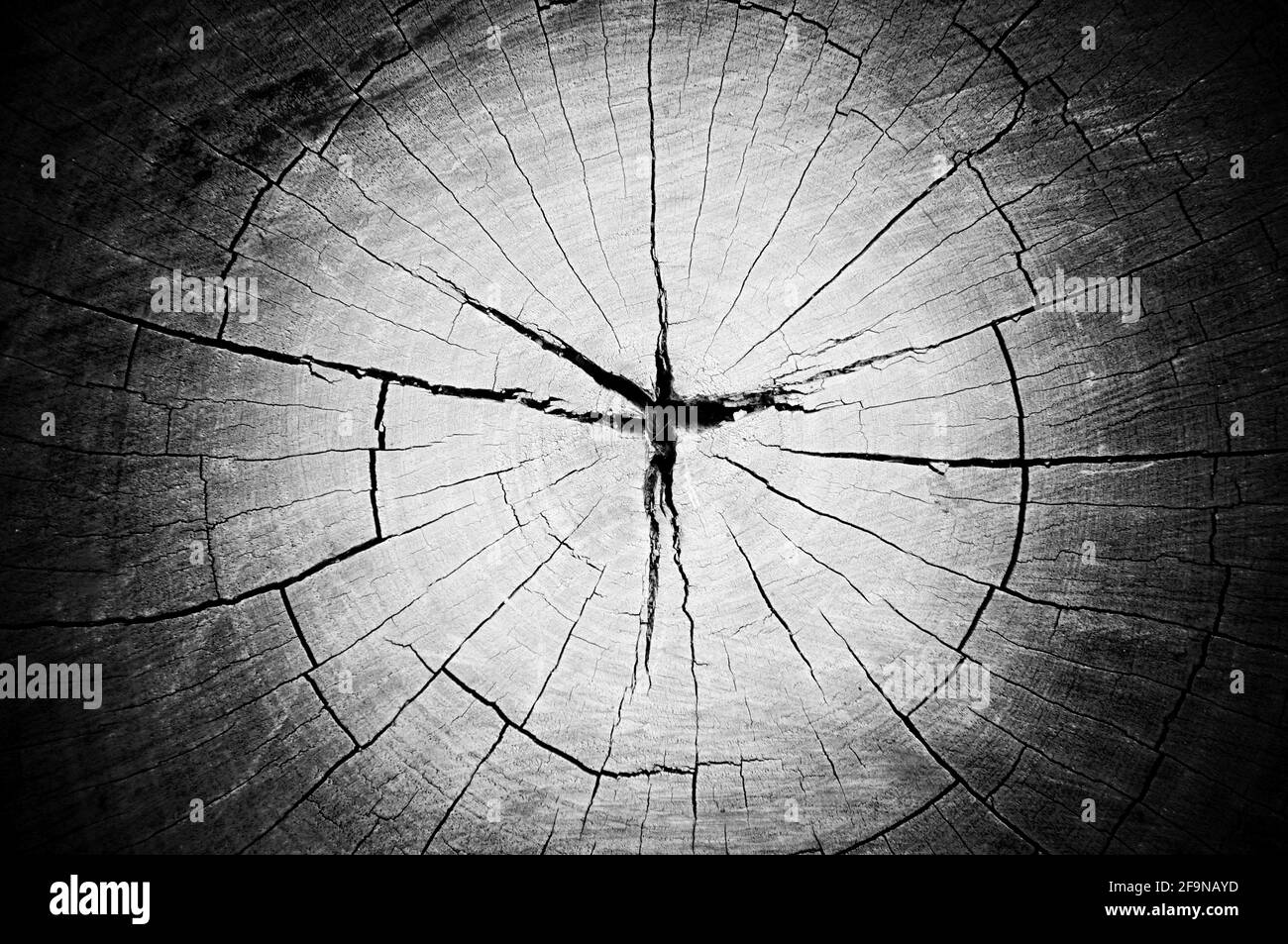 Dry old cracked tree stump texture with lomo effect Stock Photohttps://www.alamy.com/image-license-details/?v=1https://www.alamy.com/dry-old-cracked-tree-stump-texture-with-lomo-effect-image419050337.html
Dry old cracked tree stump texture with lomo effect Stock Photohttps://www.alamy.com/image-license-details/?v=1https://www.alamy.com/dry-old-cracked-tree-stump-texture-with-lomo-effect-image419050337.htmlRF2F9NAYD–Dry old cracked tree stump texture with lomo effect
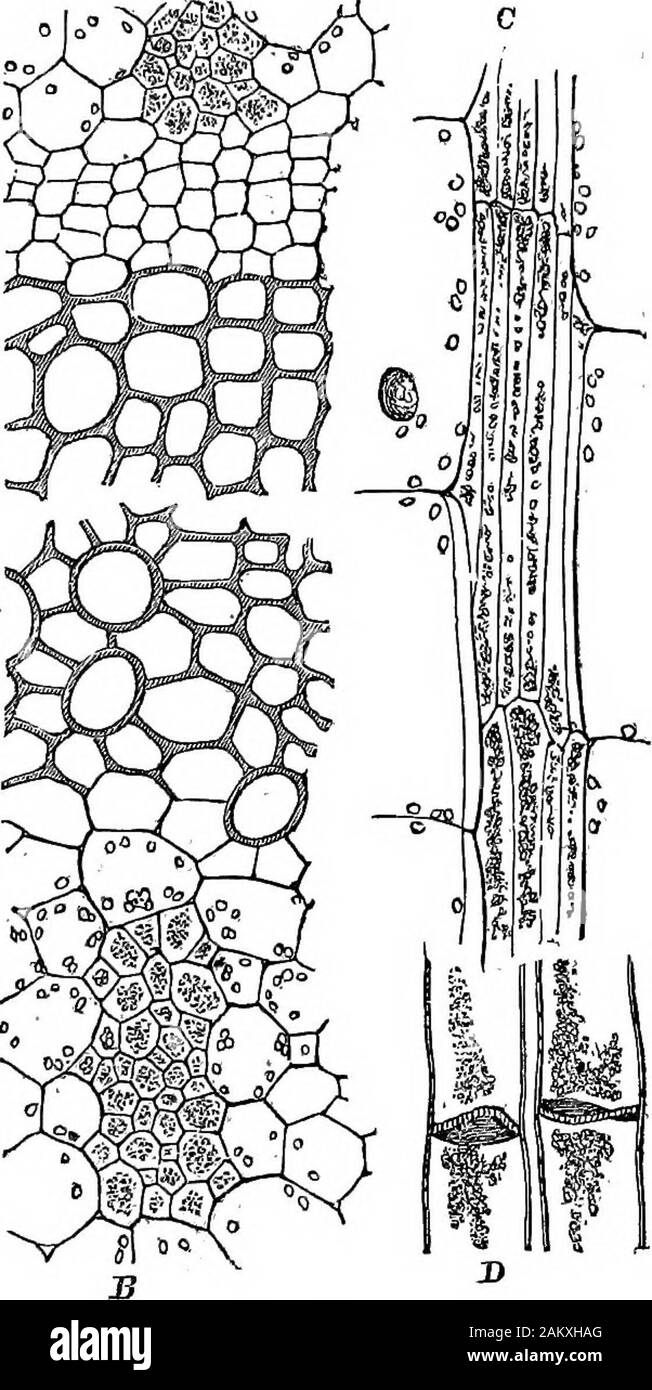 How crops growA treatise on the chemical composition, structure, and life of the plant, for all students of agriculture .. . NS OF PLANTS. 281 a. the sieve-cells in the overground stem of the potato; A,-B, cross-section of parts of vascular bundle—-4, exteriorpart towards rind; ^, interior portion next to pith—a, a,cell-tissue inclosing a the smaller sieve-cells, A, JB, which «contain sap turbidwith minute gran- ules; b, cambiumcells; c, wood-cells(which are absent inthe potato tuber;) d, ^ducts intermingledwith wood-cells. Orepresents a sectionlengthwise of thesieve-ducts; and D,more highly Stock Photohttps://www.alamy.com/image-license-details/?v=1https://www.alamy.com/how-crops-growa-treatise-on-the-chemical-composition-structure-and-life-of-the-plant-for-all-students-of-agriculture-ns-of-plants-281-a-the-sieve-cells-in-the-overground-stem-of-the-potato-a-b-cross-section-of-parts-of-vascular-bundle-4-exteriorpart-towards-rind-interior-portion-next-to-pitha-acell-tissue-inclosing-a-the-smaller-sieve-cells-a-jb-which-contain-sap-turbidwith-minute-gran-ules-b-cambiumcells-c-wood-cellswhich-are-absent-inthe-potato-tuber-d-ducts-intermingledwith-wood-cells-orepresents-a-sectionlengthwise-of-thesieve-ducts-and-dmore-highly-image339259832.html
How crops growA treatise on the chemical composition, structure, and life of the plant, for all students of agriculture .. . NS OF PLANTS. 281 a. the sieve-cells in the overground stem of the potato; A,-B, cross-section of parts of vascular bundle—-4, exteriorpart towards rind; ^, interior portion next to pith—a, a,cell-tissue inclosing a the smaller sieve-cells, A, JB, which «contain sap turbidwith minute gran- ules; b, cambiumcells; c, wood-cells(which are absent inthe potato tuber;) d, ^ducts intermingledwith wood-cells. Orepresents a sectionlengthwise of thesieve-ducts; and D,more highly Stock Photohttps://www.alamy.com/image-license-details/?v=1https://www.alamy.com/how-crops-growa-treatise-on-the-chemical-composition-structure-and-life-of-the-plant-for-all-students-of-agriculture-ns-of-plants-281-a-the-sieve-cells-in-the-overground-stem-of-the-potato-a-b-cross-section-of-parts-of-vascular-bundle-4-exteriorpart-towards-rind-interior-portion-next-to-pitha-acell-tissue-inclosing-a-the-smaller-sieve-cells-a-jb-which-contain-sap-turbidwith-minute-gran-ules-b-cambiumcells-c-wood-cellswhich-are-absent-inthe-potato-tuber-d-ducts-intermingledwith-wood-cells-orepresents-a-sectionlengthwise-of-thesieve-ducts-and-dmore-highly-image339259832.htmlRM2AKXHAG–How crops growA treatise on the chemical composition, structure, and life of the plant, for all students of agriculture .. . NS OF PLANTS. 281 a. the sieve-cells in the overground stem of the potato; A,-B, cross-section of parts of vascular bundle—-4, exteriorpart towards rind; ^, interior portion next to pith—a, a,cell-tissue inclosing a the smaller sieve-cells, A, JB, which «contain sap turbidwith minute gran- ules; b, cambiumcells; c, wood-cells(which are absent inthe potato tuber;) d, ^ducts intermingledwith wood-cells. Orepresents a sectionlengthwise of thesieve-ducts; and D,more highly
 A diagram of Cross section of a portion of palm stem. The xylem tissue is produced on the inside of the cambium layer, vintage line drawing or engravi Stock Vectorhttps://www.alamy.com/image-license-details/?v=1https://www.alamy.com/a-diagram-of-cross-section-of-a-portion-of-palm-stem-the-xylem-tissue-is-produced-on-the-inside-of-the-cambium-layer-vintage-line-drawing-or-engravi-image244484710.html
A diagram of Cross section of a portion of palm stem. The xylem tissue is produced on the inside of the cambium layer, vintage line drawing or engravi Stock Vectorhttps://www.alamy.com/image-license-details/?v=1https://www.alamy.com/a-diagram-of-cross-section-of-a-portion-of-palm-stem-the-xylem-tissue-is-produced-on-the-inside-of-the-cambium-layer-vintage-line-drawing-or-engravi-image244484710.htmlRFT5N6MP–A diagram of Cross section of a portion of palm stem. The xylem tissue is produced on the inside of the cambium layer, vintage line drawing or engravi
 Fruit outline: bananas, apples, pears, peppers, tomato made of black lines isolated on a white background. Vector illustration. Stock Vectorhttps://www.alamy.com/image-license-details/?v=1https://www.alamy.com/fruit-outline-bananas-apples-pears-peppers-tomato-made-of-black-lines-isolated-on-a-white-background-vector-illustration-image600683111.html
Fruit outline: bananas, apples, pears, peppers, tomato made of black lines isolated on a white background. Vector illustration. Stock Vectorhttps://www.alamy.com/image-license-details/?v=1https://www.alamy.com/fruit-outline-bananas-apples-pears-peppers-tomato-made-of-black-lines-isolated-on-a-white-background-vector-illustration-image600683111.htmlRF2WW7DC7–Fruit outline: bananas, apples, pears, peppers, tomato made of black lines isolated on a white background. Vector illustration.
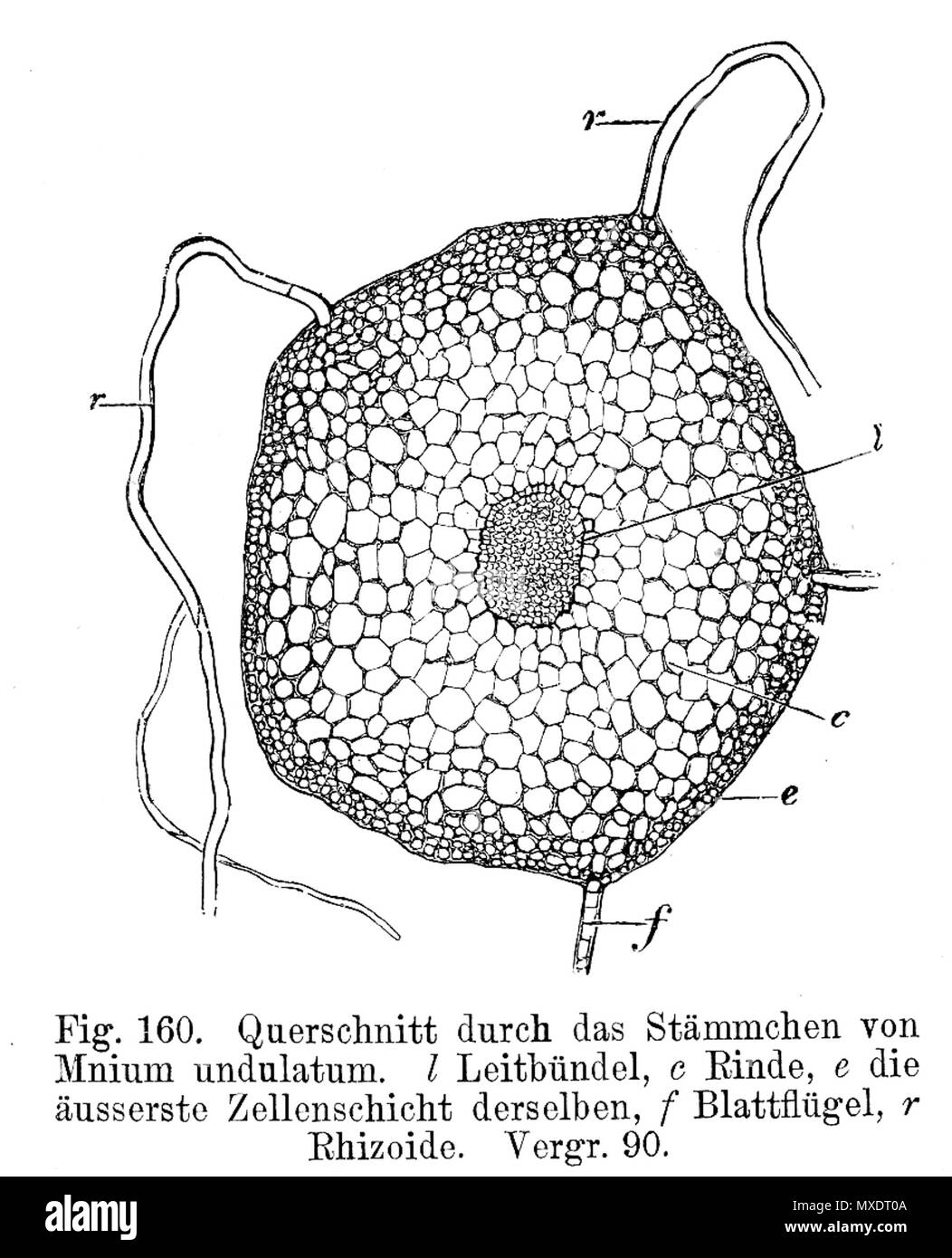 . Mnium undulatum, cross section of stem . 1900. E. Strasburger 421 Mnium undulatum Strasburger1900 Stock Photohttps://www.alamy.com/image-license-details/?v=1https://www.alamy.com/mnium-undulatum-cross-section-of-stem-1900-e-strasburger-421-mnium-undulatum-strasburger1900-image188388938.html
. Mnium undulatum, cross section of stem . 1900. E. Strasburger 421 Mnium undulatum Strasburger1900 Stock Photohttps://www.alamy.com/image-license-details/?v=1https://www.alamy.com/mnium-undulatum-cross-section-of-stem-1900-e-strasburger-421-mnium-undulatum-strasburger1900-image188388938.htmlRMMXDT0A–. Mnium undulatum, cross section of stem . 1900. E. Strasburger 421 Mnium undulatum Strasburger1900
 . Plant life and plant uses; an elementary textbook, a foundation for the study of agriculture, domestic science or college botany. Botany. AERIAL STEMS MS 47. Aerial Stems. — We may classify aerial stems as to their general character or as to their internal structure. As to internal structure they fall into two great classes based on the arrangements of vascular bun- dles which have just been men- tioned. These will be considered in the section on the structure and growth of stems (Section 50). As to their general 1 , . 1 Fig. 48. — Cross section of the stem of an annual plant character, ther Stock Photohttps://www.alamy.com/image-license-details/?v=1https://www.alamy.com/plant-life-and-plant-uses-an-elementary-textbook-a-foundation-for-the-study-of-agriculture-domestic-science-or-college-botany-botany-aerial-stems-ms-47-aerial-stems-we-may-classify-aerial-stems-as-to-their-general-character-or-as-to-their-internal-structure-as-to-internal-structure-they-fall-into-two-great-classes-based-on-the-arrangements-of-vascular-bun-dles-which-have-just-been-men-tioned-these-will-be-considered-in-the-section-on-the-structure-and-growth-of-stems-section-50-as-to-their-general-1-1-fig-48-cross-section-of-the-stem-of-an-annual-plant-character-ther-image216443560.html
. Plant life and plant uses; an elementary textbook, a foundation for the study of agriculture, domestic science or college botany. Botany. AERIAL STEMS MS 47. Aerial Stems. — We may classify aerial stems as to their general character or as to their internal structure. As to internal structure they fall into two great classes based on the arrangements of vascular bun- dles which have just been men- tioned. These will be considered in the section on the structure and growth of stems (Section 50). As to their general 1 , . 1 Fig. 48. — Cross section of the stem of an annual plant character, ther Stock Photohttps://www.alamy.com/image-license-details/?v=1https://www.alamy.com/plant-life-and-plant-uses-an-elementary-textbook-a-foundation-for-the-study-of-agriculture-domestic-science-or-college-botany-botany-aerial-stems-ms-47-aerial-stems-we-may-classify-aerial-stems-as-to-their-general-character-or-as-to-their-internal-structure-as-to-internal-structure-they-fall-into-two-great-classes-based-on-the-arrangements-of-vascular-bun-dles-which-have-just-been-men-tioned-these-will-be-considered-in-the-section-on-the-structure-and-growth-of-stems-section-50-as-to-their-general-1-1-fig-48-cross-section-of-the-stem-of-an-annual-plant-character-ther-image216443560.htmlRMPG3RY4–. Plant life and plant uses; an elementary textbook, a foundation for the study of agriculture, domestic science or college botany. Botany. AERIAL STEMS MS 47. Aerial Stems. — We may classify aerial stems as to their general character or as to their internal structure. As to internal structure they fall into two great classes based on the arrangements of vascular bun- dles which have just been men- tioned. These will be considered in the section on the structure and growth of stems (Section 50). As to their general 1 , . 1 Fig. 48. — Cross section of the stem of an annual plant character, ther
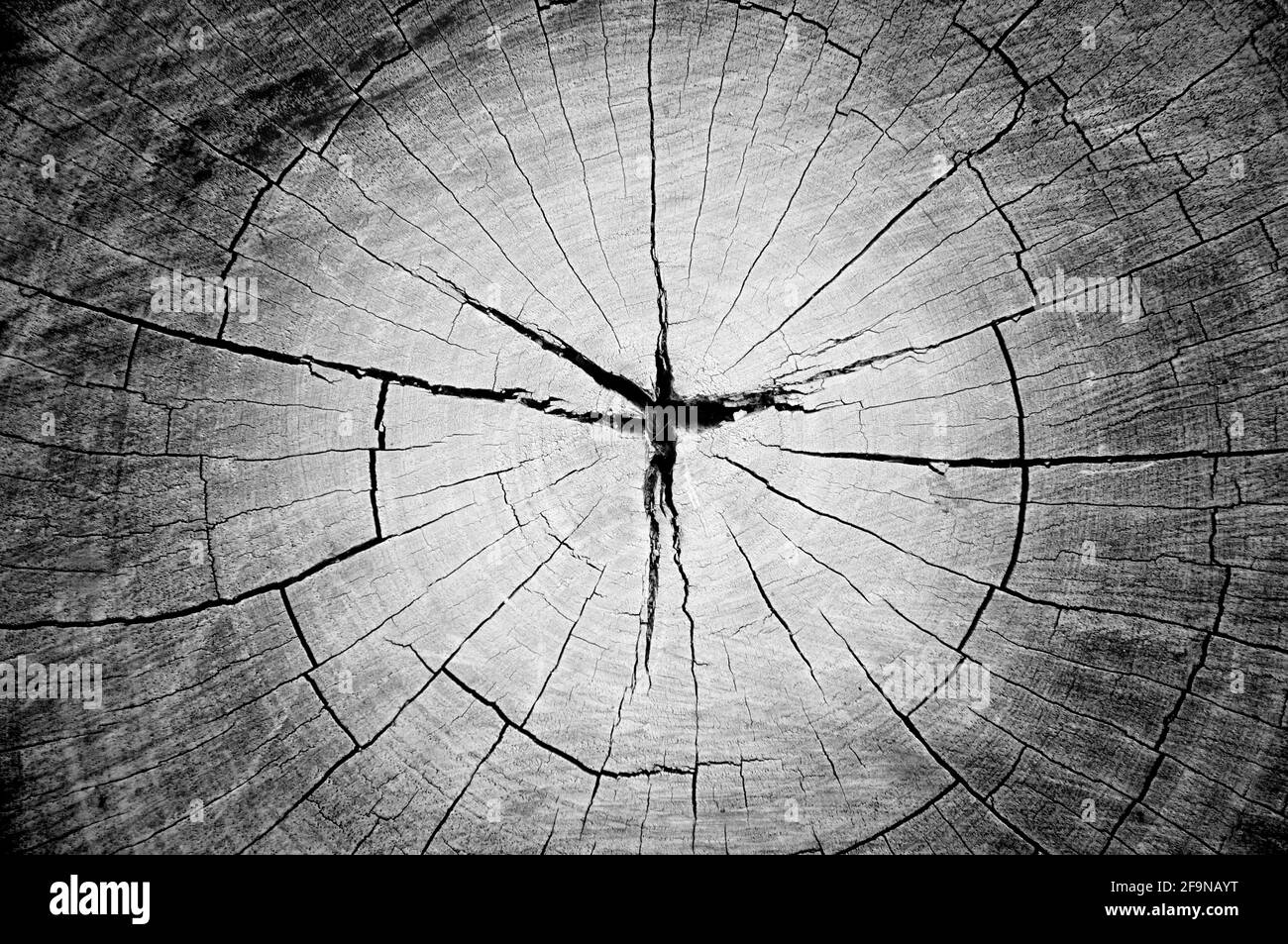 Dry old cracked tree stump texture Stock Photohttps://www.alamy.com/image-license-details/?v=1https://www.alamy.com/dry-old-cracked-tree-stump-texture-image419050348.html
Dry old cracked tree stump texture Stock Photohttps://www.alamy.com/image-license-details/?v=1https://www.alamy.com/dry-old-cracked-tree-stump-texture-image419050348.htmlRF2F9NAYT–Dry old cracked tree stump texture
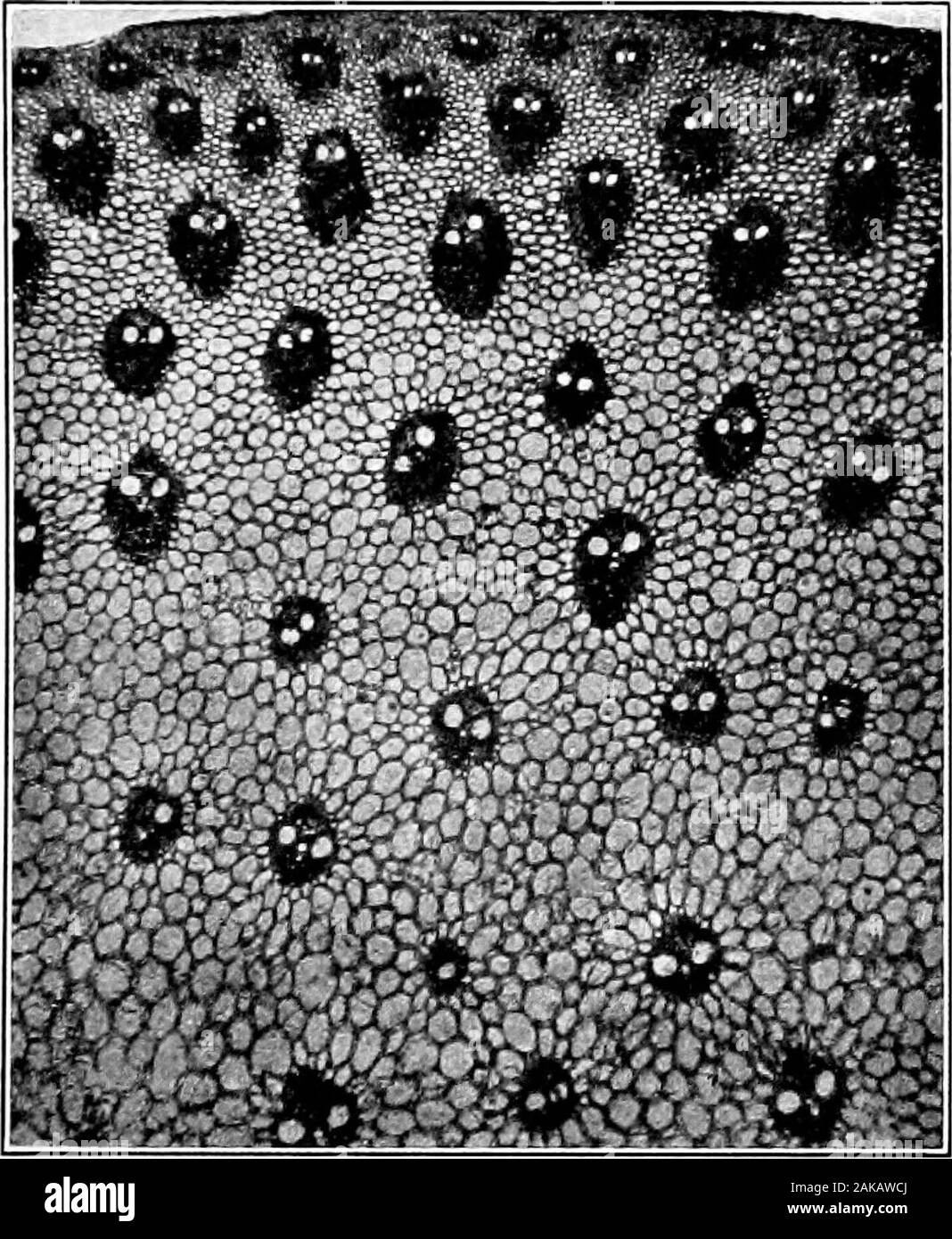 Southern field crops (exclusive of forage plants) . Fig. 207. —Part of aStem of Sug.ar-cane. A, buds or eyes ; B,joints : C, nodes ; Z>, in-ternodes ; X, dots whereroots may originate. SUGAE-CANE 487 467. Structure of the stem. — On cutting across a stalkof cane, one finds the greater part of the space mthin therind occupied by white pith cells. It is within these. Fie. 208. — Cross Section of P,rt of - Stem of Sug.r-c.e. The dark spots inclosing smaller white spots are the bundles whichcontain the tubes and vessels through which liquids circulate ; the greaterpart of this section consis Stock Photohttps://www.alamy.com/image-license-details/?v=1https://www.alamy.com/southern-field-crops-exclusive-of-forage-plants-fig-207-part-of-astem-of-sugar-cane-a-buds-or-eyes-bjoints-c-nodes-zgt-in-ternodes-x-dots-whereroots-may-originate-sugae-cane-487-467-structure-of-the-stem-on-cutting-across-a-stalkof-cane-one-finds-the-greater-part-of-the-space-mthin-therind-occupied-by-white-pith-cells-it-is-within-these-fie-208-cross-section-of-prt-of-stem-of-sugr-ce-the-dark-spots-inclosing-smaller-white-spots-are-the-bundles-whichcontain-the-tubes-and-vessels-through-which-liquids-circulate-the-greaterpart-of-this-section-consis-image338914930.html
Southern field crops (exclusive of forage plants) . Fig. 207. —Part of aStem of Sug.ar-cane. A, buds or eyes ; B,joints : C, nodes ; Z>, in-ternodes ; X, dots whereroots may originate. SUGAE-CANE 487 467. Structure of the stem. — On cutting across a stalkof cane, one finds the greater part of the space mthin therind occupied by white pith cells. It is within these. Fie. 208. — Cross Section of P,rt of - Stem of Sug.r-c.e. The dark spots inclosing smaller white spots are the bundles whichcontain the tubes and vessels through which liquids circulate ; the greaterpart of this section consis Stock Photohttps://www.alamy.com/image-license-details/?v=1https://www.alamy.com/southern-field-crops-exclusive-of-forage-plants-fig-207-part-of-astem-of-sugar-cane-a-buds-or-eyes-bjoints-c-nodes-zgt-in-ternodes-x-dots-whereroots-may-originate-sugae-cane-487-467-structure-of-the-stem-on-cutting-across-a-stalkof-cane-one-finds-the-greater-part-of-the-space-mthin-therind-occupied-by-white-pith-cells-it-is-within-these-fie-208-cross-section-of-prt-of-stem-of-sugr-ce-the-dark-spots-inclosing-smaller-white-spots-are-the-bundles-whichcontain-the-tubes-and-vessels-through-which-liquids-circulate-the-greaterpart-of-this-section-consis-image338914930.htmlRM2AKAWCJ–Southern field crops (exclusive of forage plants) . Fig. 207. —Part of aStem of Sug.ar-cane. A, buds or eyes ; B,joints : C, nodes ; Z>, in-ternodes ; X, dots whereroots may originate. SUGAE-CANE 487 467. Structure of the stem. — On cutting across a stalkof cane, one finds the greater part of the space mthin therind occupied by white pith cells. It is within these. Fie. 208. — Cross Section of P,rt of - Stem of Sug.r-c.e. The dark spots inclosing smaller white spots are the bundles whichcontain the tubes and vessels through which liquids circulate ; the greaterpart of this section consis
 The image showing cross section of Water Cress Stem Tissue. And its size is equal to water cress, vintage line drawing or engraving illustration. Stock Vectorhttps://www.alamy.com/image-license-details/?v=1https://www.alamy.com/the-image-showing-cross-section-of-water-cress-stem-tissue-and-its-size-is-equal-to-water-cress-vintage-line-drawing-or-engraving-illustration-image244636581.html
The image showing cross section of Water Cress Stem Tissue. And its size is equal to water cress, vintage line drawing or engraving illustration. Stock Vectorhttps://www.alamy.com/image-license-details/?v=1https://www.alamy.com/the-image-showing-cross-section-of-water-cress-stem-tissue-and-its-size-is-equal-to-water-cress-vintage-line-drawing-or-engraving-illustration-image244636581.htmlRFT604CN–The image showing cross section of Water Cress Stem Tissue. And its size is equal to water cress, vintage line drawing or engraving illustration.
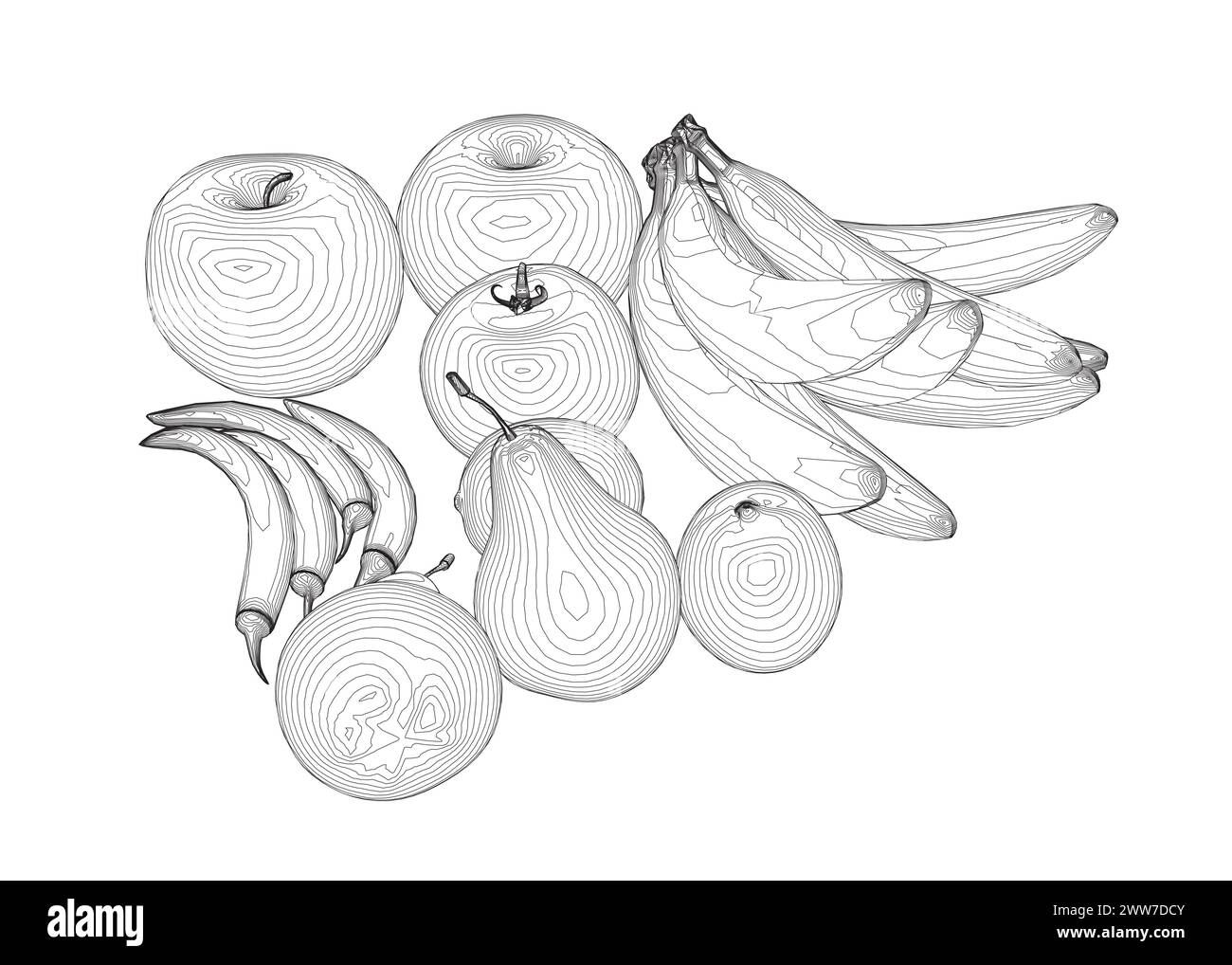 Fruit outline: bananas, apples, pears, peppers, tomato made of black lines isolated on a white background. Vector illustration. Stock Vectorhttps://www.alamy.com/image-license-details/?v=1https://www.alamy.com/fruit-outline-bananas-apples-pears-peppers-tomato-made-of-black-lines-isolated-on-a-white-background-vector-illustration-image600683131.html
Fruit outline: bananas, apples, pears, peppers, tomato made of black lines isolated on a white background. Vector illustration. Stock Vectorhttps://www.alamy.com/image-license-details/?v=1https://www.alamy.com/fruit-outline-bananas-apples-pears-peppers-tomato-made-of-black-lines-isolated-on-a-white-background-vector-illustration-image600683131.htmlRF2WW7DCY–Fruit outline: bananas, apples, pears, peppers, tomato made of black lines isolated on a white background. Vector illustration.
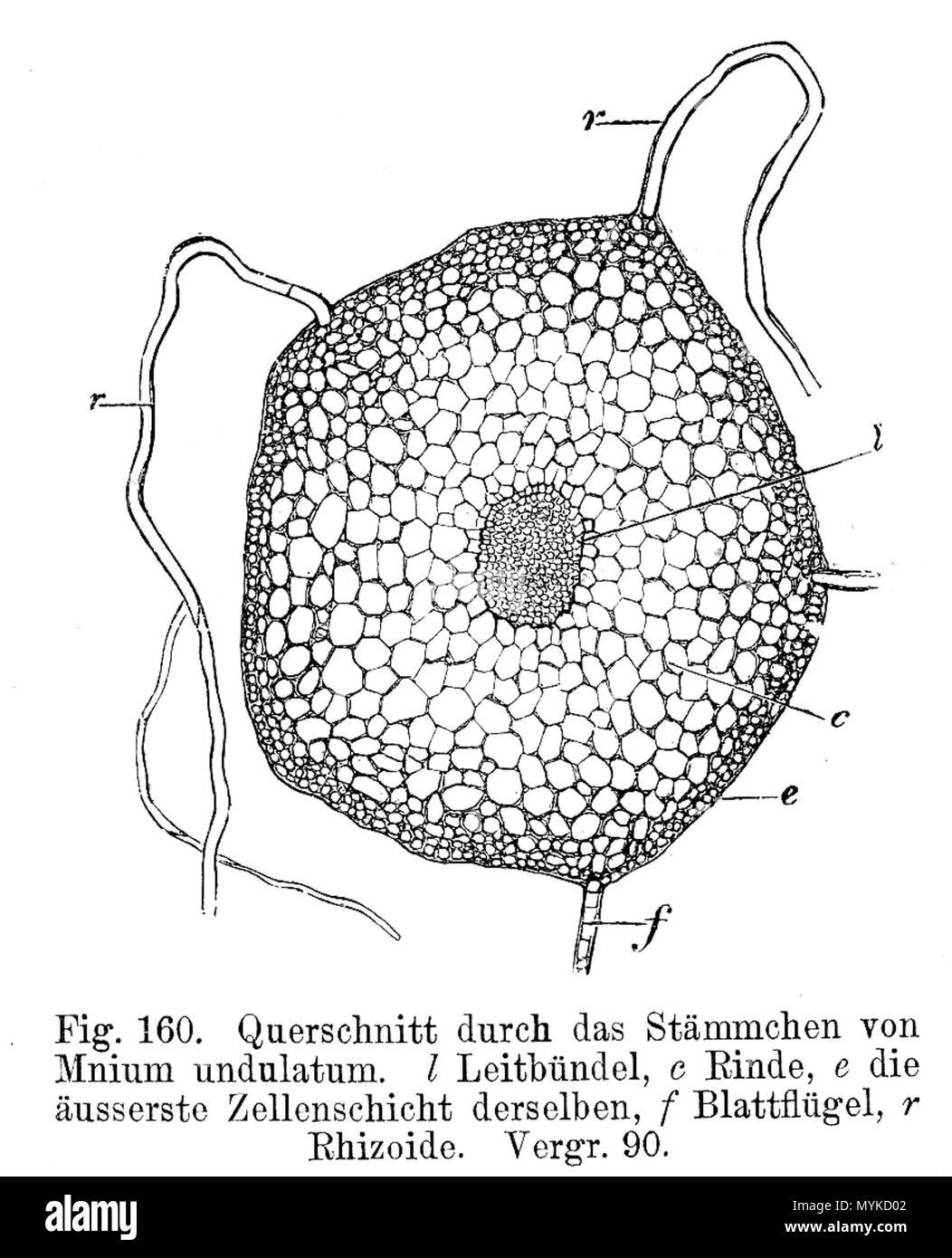 . Mnium undulatum, cross section of stem . 1900. E. Strasburger 367 Mnium undulatum Strasburger1900 Stock Photohttps://www.alamy.com/image-license-details/?v=1https://www.alamy.com/mnium-undulatum-cross-section-of-stem-1900-e-strasburger-367-mnium-undulatum-strasburger1900-image189126674.html
. Mnium undulatum, cross section of stem . 1900. E. Strasburger 367 Mnium undulatum Strasburger1900 Stock Photohttps://www.alamy.com/image-license-details/?v=1https://www.alamy.com/mnium-undulatum-cross-section-of-stem-1900-e-strasburger-367-mnium-undulatum-strasburger1900-image189126674.htmlRMMYKD02–. Mnium undulatum, cross section of stem . 1900. E. Strasburger 367 Mnium undulatum Strasburger1900
 . Diseases of economic plants . Plant diseases. Fig. 205. — Stomata or breathing pores in the epidermis. From Strasburger's textbook.. Fig. 206. — Diagram of cross section of stem showing circle of veins, m. pith; i. /. c, cambium ring. The portion of the vein inside the ring is the wood and contains large ducts. The portion outside of cam- bium ring is the bark. From Strasburger*a textbook.. Please note that these images are extracted from scanned page images that may have been digitally enhanced for readability - coloration and appearance of these illustrations may not perfectly resemble the Stock Photohttps://www.alamy.com/image-license-details/?v=1https://www.alamy.com/diseases-of-economic-plants-plant-diseases-fig-205-stomata-or-breathing-pores-in-the-epidermis-from-strasburgers-textbook-fig-206-diagram-of-cross-section-of-stem-showing-circle-of-veins-m-pith-i-c-cambium-ring-the-portion-of-the-vein-inside-the-ring-is-the-wood-and-contains-large-ducts-the-portion-outside-of-cam-bium-ring-is-the-bark-from-strasburgera-textbook-please-note-that-these-images-are-extracted-from-scanned-page-images-that-may-have-been-digitally-enhanced-for-readability-coloration-and-appearance-of-these-illustrations-may-not-perfectly-resemble-the-image216450924.html
. Diseases of economic plants . Plant diseases. Fig. 205. — Stomata or breathing pores in the epidermis. From Strasburger's textbook.. Fig. 206. — Diagram of cross section of stem showing circle of veins, m. pith; i. /. c, cambium ring. The portion of the vein inside the ring is the wood and contains large ducts. The portion outside of cam- bium ring is the bark. From Strasburger*a textbook.. Please note that these images are extracted from scanned page images that may have been digitally enhanced for readability - coloration and appearance of these illustrations may not perfectly resemble the Stock Photohttps://www.alamy.com/image-license-details/?v=1https://www.alamy.com/diseases-of-economic-plants-plant-diseases-fig-205-stomata-or-breathing-pores-in-the-epidermis-from-strasburgers-textbook-fig-206-diagram-of-cross-section-of-stem-showing-circle-of-veins-m-pith-i-c-cambium-ring-the-portion-of-the-vein-inside-the-ring-is-the-wood-and-contains-large-ducts-the-portion-outside-of-cam-bium-ring-is-the-bark-from-strasburgera-textbook-please-note-that-these-images-are-extracted-from-scanned-page-images-that-may-have-been-digitally-enhanced-for-readability-coloration-and-appearance-of-these-illustrations-may-not-perfectly-resemble-the-image216450924.htmlRMPG45A4–. Diseases of economic plants . Plant diseases. Fig. 205. — Stomata or breathing pores in the epidermis. From Strasburger's textbook.. Fig. 206. — Diagram of cross section of stem showing circle of veins, m. pith; i. /. c, cambium ring. The portion of the vein inside the ring is the wood and contains large ducts. The portion outside of cam- bium ring is the bark. From Strasburger*a textbook.. Please note that these images are extracted from scanned page images that may have been digitally enhanced for readability - coloration and appearance of these illustrations may not perfectly resemble the
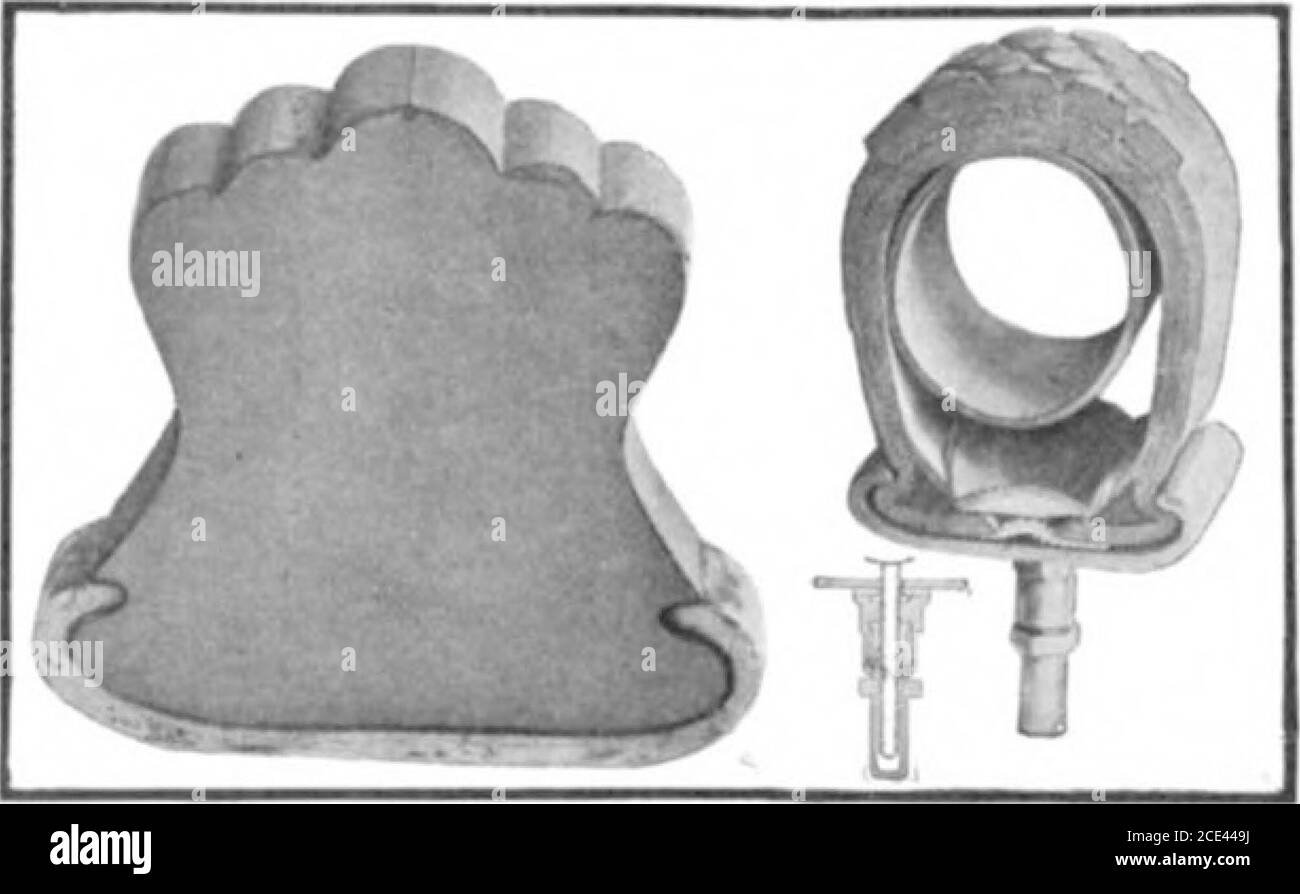 . Scientific American Volume 92 Number 04 (January 1905) . ds. Nor isthere any loss of power from slipping wheels.A new- type of double bronze nut and lock nut,shown in cross-section in the illustration, isused for securing the lugs on the Goodrichtires. Being made of brass, these nuts willnot rust and be difficult of removal. Further-more, as the inner end of the lock nut islarger than the hole in the first nut,through which the lock nut stem ispassed, it cannot separate from the nut proper andbecome lost, although it can be unscrewed separately. A typical non-skidding tire built on the lines Stock Photohttps://www.alamy.com/image-license-details/?v=1https://www.alamy.com/scientific-american-volume-92-number-04-january-1905-ds-nor-isthere-any-loss-of-power-from-slipping-wheelsa-new-type-of-double-bronze-nut-and-lock-nutshown-in-cross-section-in-the-illustration-isused-for-securing-the-lugs-on-the-goodrichtires-being-made-of-brass-these-nuts-willnot-rust-and-be-difficult-of-removal-further-more-as-the-inner-end-of-the-lock-nut-islarger-than-the-hole-in-the-first-nutthrough-which-the-lock-nut-stem-ispassed-it-cannot-separate-from-the-nut-proper-andbecome-lost-although-it-can-be-unscrewed-separately-a-typical-non-skidding-tire-built-on-the-lines-image370114126.html
. Scientific American Volume 92 Number 04 (January 1905) . ds. Nor isthere any loss of power from slipping wheels.A new- type of double bronze nut and lock nut,shown in cross-section in the illustration, isused for securing the lugs on the Goodrichtires. Being made of brass, these nuts willnot rust and be difficult of removal. Further-more, as the inner end of the lock nut islarger than the hole in the first nut,through which the lock nut stem ispassed, it cannot separate from the nut proper andbecome lost, although it can be unscrewed separately. A typical non-skidding tire built on the lines Stock Photohttps://www.alamy.com/image-license-details/?v=1https://www.alamy.com/scientific-american-volume-92-number-04-january-1905-ds-nor-isthere-any-loss-of-power-from-slipping-wheelsa-new-type-of-double-bronze-nut-and-lock-nutshown-in-cross-section-in-the-illustration-isused-for-securing-the-lugs-on-the-goodrichtires-being-made-of-brass-these-nuts-willnot-rust-and-be-difficult-of-removal-further-more-as-the-inner-end-of-the-lock-nut-islarger-than-the-hole-in-the-first-nutthrough-which-the-lock-nut-stem-ispassed-it-cannot-separate-from-the-nut-proper-andbecome-lost-although-it-can-be-unscrewed-separately-a-typical-non-skidding-tire-built-on-the-lines-image370114126.htmlRM2CE449J–. Scientific American Volume 92 Number 04 (January 1905) . ds. Nor isthere any loss of power from slipping wheels.A new- type of double bronze nut and lock nut,shown in cross-section in the illustration, isused for securing the lugs on the Goodrichtires. Being made of brass, these nuts willnot rust and be difficult of removal. Further-more, as the inner end of the lock nut islarger than the hole in the first nut,through which the lock nut stem ispassed, it cannot separate from the nut proper andbecome lost, although it can be unscrewed separately. A typical non-skidding tire built on the lines
 A picture showing cross section of castor oil plant stem, vintage line drawing or engraving illustration. Stock Vectorhttps://www.alamy.com/image-license-details/?v=1https://www.alamy.com/a-picture-showing-cross-section-of-castor-oil-plant-stem-vintage-line-drawing-or-engraving-illustration-image244669178.html
A picture showing cross section of castor oil plant stem, vintage line drawing or engraving illustration. Stock Vectorhttps://www.alamy.com/image-license-details/?v=1https://www.alamy.com/a-picture-showing-cross-section-of-castor-oil-plant-stem-vintage-line-drawing-or-engraving-illustration-image244669178.htmlRFT61J0X–A picture showing cross section of castor oil plant stem, vintage line drawing or engraving illustration.
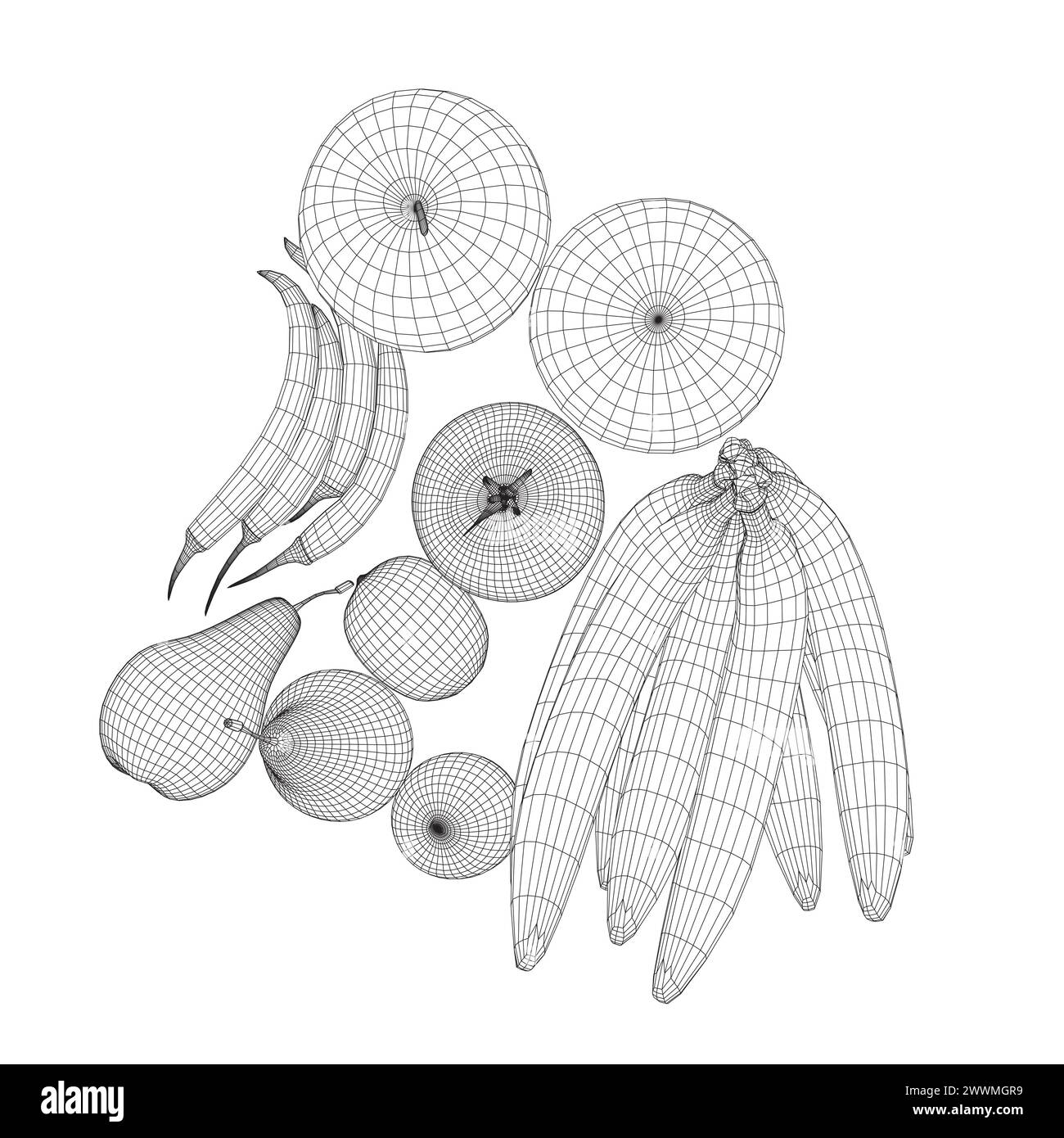 Fruit wireframe: bananas, apples, pears, peppers, tomato made of black lines isolated on a white background. Vector illustration. 3D. Stock Vectorhttps://www.alamy.com/image-license-details/?v=1https://www.alamy.com/fruit-wireframe-bananas-apples-pears-peppers-tomato-made-of-black-lines-isolated-on-a-white-background-vector-illustration-3d-image600971149.html
Fruit wireframe: bananas, apples, pears, peppers, tomato made of black lines isolated on a white background. Vector illustration. 3D. Stock Vectorhttps://www.alamy.com/image-license-details/?v=1https://www.alamy.com/fruit-wireframe-bananas-apples-pears-peppers-tomato-made-of-black-lines-isolated-on-a-white-background-vector-illustration-3d-image600971149.htmlRF2WWMGR9–Fruit wireframe: bananas, apples, pears, peppers, tomato made of black lines isolated on a white background. Vector illustration. 3D.
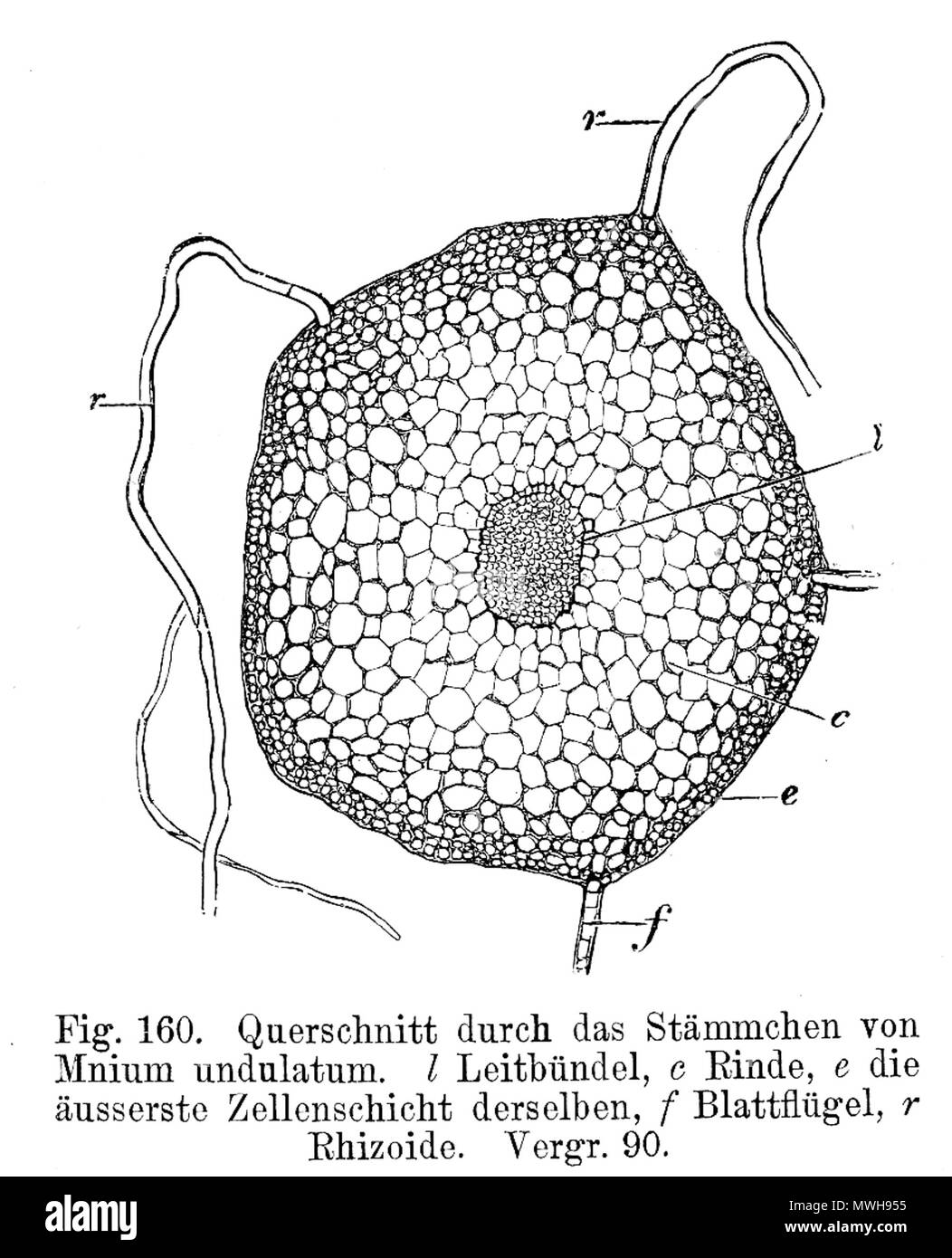 . Mnium undulatum, cross section of stem . 1900. E. Strasburger 421 Mnium undulatum Strasburger1900 Stock Photohttps://www.alamy.com/image-license-details/?v=1https://www.alamy.com/mnium-undulatum-cross-section-of-stem-1900-e-strasburger-421-mnium-undulatum-strasburger1900-image187850465.html
. Mnium undulatum, cross section of stem . 1900. E. Strasburger 421 Mnium undulatum Strasburger1900 Stock Photohttps://www.alamy.com/image-license-details/?v=1https://www.alamy.com/mnium-undulatum-cross-section-of-stem-1900-e-strasburger-421-mnium-undulatum-strasburger1900-image187850465.htmlRMMWH955–. Mnium undulatum, cross section of stem . 1900. E. Strasburger 421 Mnium undulatum Strasburger1900
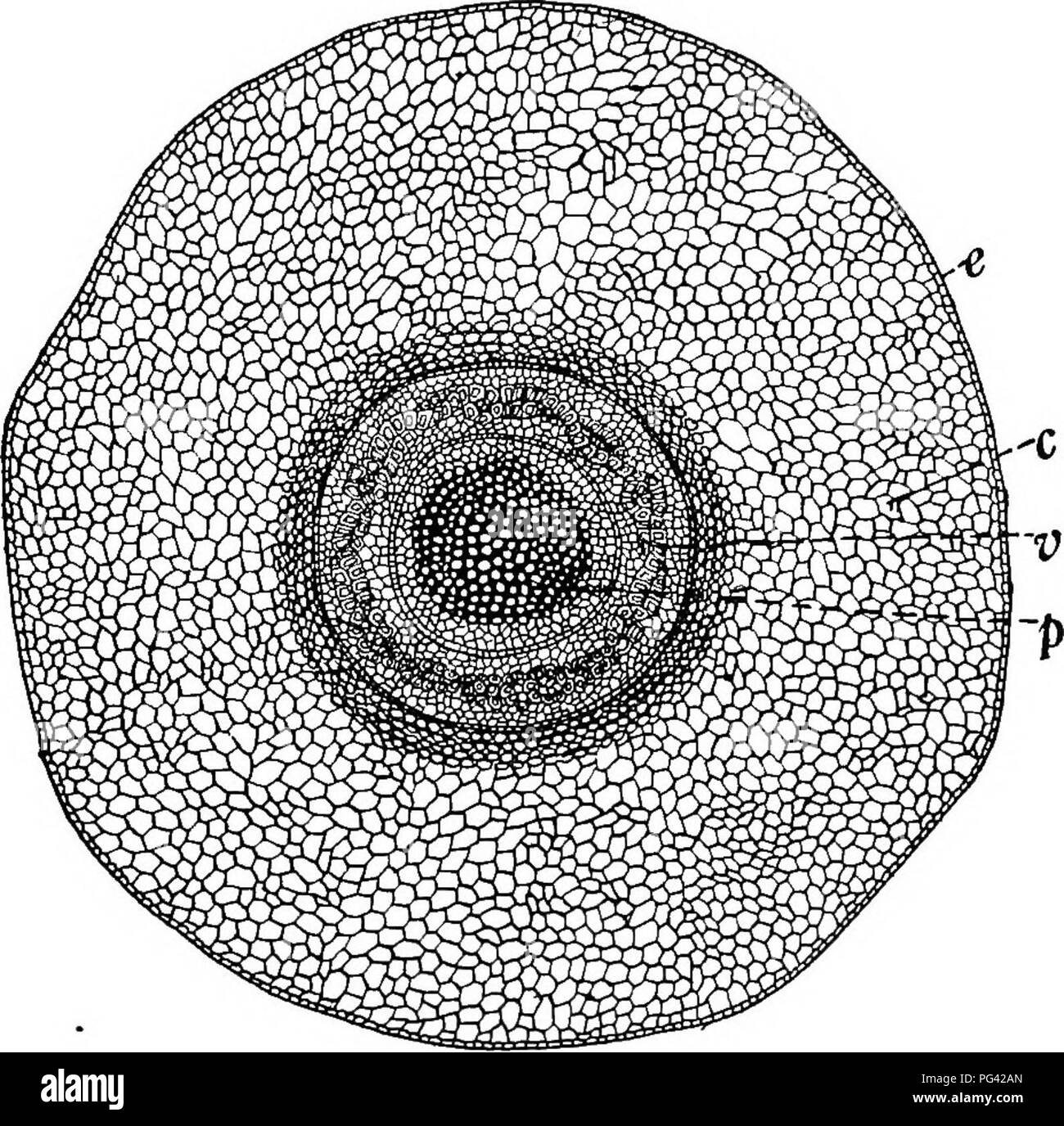 . Botany for agricultural students . Botany. SPOROPHYTE 429 {dichotomous branching); and the leaves develop in the spring by unrolling from the base, much like unrolling a bolt of cloth, until their final length is reached [circinate vernation). They have epidermis, stomata, and chlorenchyma or food-making tissue, and through their veins run well developed vascular bundles.. Fig. 380. — A cross section of a Fern stem, showing the epidermis (e), the cortex (c), the vascular cyUnder (v), and the pith (p). The sporangia occur in the rusty looking spots, called sori (singular sorus), which are for Stock Photohttps://www.alamy.com/image-license-details/?v=1https://www.alamy.com/botany-for-agricultural-students-botany-sporophyte-429-dichotomous-branching-and-the-leaves-develop-in-the-spring-by-unrolling-from-the-base-much-like-unrolling-a-bolt-of-cloth-until-their-final-length-is-reached-circinate-vernation-they-have-epidermis-stomata-and-chlorenchyma-or-food-making-tissue-and-through-their-veins-run-well-developed-vascular-bundles-fig-380-a-cross-section-of-a-fern-stem-showing-the-epidermis-e-the-cortex-c-the-vascular-cyunder-v-and-the-pith-p-the-sporangia-occur-in-the-rusty-looking-spots-called-sori-singular-sorus-which-are-for-image216448589.html
. Botany for agricultural students . Botany. SPOROPHYTE 429 {dichotomous branching); and the leaves develop in the spring by unrolling from the base, much like unrolling a bolt of cloth, until their final length is reached [circinate vernation). They have epidermis, stomata, and chlorenchyma or food-making tissue, and through their veins run well developed vascular bundles.. Fig. 380. — A cross section of a Fern stem, showing the epidermis (e), the cortex (c), the vascular cyUnder (v), and the pith (p). The sporangia occur in the rusty looking spots, called sori (singular sorus), which are for Stock Photohttps://www.alamy.com/image-license-details/?v=1https://www.alamy.com/botany-for-agricultural-students-botany-sporophyte-429-dichotomous-branching-and-the-leaves-develop-in-the-spring-by-unrolling-from-the-base-much-like-unrolling-a-bolt-of-cloth-until-their-final-length-is-reached-circinate-vernation-they-have-epidermis-stomata-and-chlorenchyma-or-food-making-tissue-and-through-their-veins-run-well-developed-vascular-bundles-fig-380-a-cross-section-of-a-fern-stem-showing-the-epidermis-e-the-cortex-c-the-vascular-cyunder-v-and-the-pith-p-the-sporangia-occur-in-the-rusty-looking-spots-called-sori-singular-sorus-which-are-for-image216448589.htmlRMPG42AN–. Botany for agricultural students . Botany. SPOROPHYTE 429 {dichotomous branching); and the leaves develop in the spring by unrolling from the base, much like unrolling a bolt of cloth, until their final length is reached [circinate vernation). They have epidermis, stomata, and chlorenchyma or food-making tissue, and through their veins run well developed vascular bundles.. Fig. 380. — A cross section of a Fern stem, showing the epidermis (e), the cortex (c), the vascular cyUnder (v), and the pith (p). The sporangia occur in the rusty looking spots, called sori (singular sorus), which are for
![. A monograph of the North American species of the genus Polygonum. Polygonum. iPU ^^a^H:.--'. CROSS SECTION STEM OF POLYGONUM BISTORTOIDES PURSH,. Please note that these images are extracted from scanned page images that may have been digitally enhanced for readability - coloration and appearance of these illustrations may not perfectly resemble the original work.. Small, John Kunkel, 1869-1938. [Lancaster, Pa. , The New Era Print] Stock Photo . A monograph of the North American species of the genus Polygonum. Polygonum. iPU ^^a^H:.--'. CROSS SECTION STEM OF POLYGONUM BISTORTOIDES PURSH,. Please note that these images are extracted from scanned page images that may have been digitally enhanced for readability - coloration and appearance of these illustrations may not perfectly resemble the original work.. Small, John Kunkel, 1869-1938. [Lancaster, Pa. , The New Era Print] Stock Photo](https://c8.alamy.com/comp/RE2MK1/a-monograph-of-the-north-american-species-of-the-genus-polygonum-polygonum-ipu-ah-cross-section-stem-of-polygonum-bistortoides-pursh-please-note-that-these-images-are-extracted-from-scanned-page-images-that-may-have-been-digitally-enhanced-for-readability-coloration-and-appearance-of-these-illustrations-may-not-perfectly-resemble-the-original-work-small-john-kunkel-1869-1938-lancaster-pa-the-new-era-print-RE2MK1.jpg) . A monograph of the North American species of the genus Polygonum. Polygonum. iPU ^^a^H:.--'. CROSS SECTION STEM OF POLYGONUM BISTORTOIDES PURSH,. Please note that these images are extracted from scanned page images that may have been digitally enhanced for readability - coloration and appearance of these illustrations may not perfectly resemble the original work.. Small, John Kunkel, 1869-1938. [Lancaster, Pa. , The New Era Print] Stock Photohttps://www.alamy.com/image-license-details/?v=1https://www.alamy.com/a-monograph-of-the-north-american-species-of-the-genus-polygonum-polygonum-ipu-ah-cross-section-stem-of-polygonum-bistortoides-pursh-please-note-that-these-images-are-extracted-from-scanned-page-images-that-may-have-been-digitally-enhanced-for-readability-coloration-and-appearance-of-these-illustrations-may-not-perfectly-resemble-the-original-work-small-john-kunkel-1869-1938-lancaster-pa-the-new-era-print-image232400085.html
. A monograph of the North American species of the genus Polygonum. Polygonum. iPU ^^a^H:.--'. CROSS SECTION STEM OF POLYGONUM BISTORTOIDES PURSH,. Please note that these images are extracted from scanned page images that may have been digitally enhanced for readability - coloration and appearance of these illustrations may not perfectly resemble the original work.. Small, John Kunkel, 1869-1938. [Lancaster, Pa. , The New Era Print] Stock Photohttps://www.alamy.com/image-license-details/?v=1https://www.alamy.com/a-monograph-of-the-north-american-species-of-the-genus-polygonum-polygonum-ipu-ah-cross-section-stem-of-polygonum-bistortoides-pursh-please-note-that-these-images-are-extracted-from-scanned-page-images-that-may-have-been-digitally-enhanced-for-readability-coloration-and-appearance-of-these-illustrations-may-not-perfectly-resemble-the-original-work-small-john-kunkel-1869-1938-lancaster-pa-the-new-era-print-image232400085.htmlRMRE2MK1–. A monograph of the North American species of the genus Polygonum. Polygonum. iPU ^^a^H:.--'. CROSS SECTION STEM OF POLYGONUM BISTORTOIDES PURSH,. Please note that these images are extracted from scanned page images that may have been digitally enhanced for readability - coloration and appearance of these illustrations may not perfectly resemble the original work.. Small, John Kunkel, 1869-1938. [Lancaster, Pa. , The New Era Print]
 This is image cross-section of stem of Indian corn where cv, fibro-vascular bundles; gc, pithy material between bundles, vintage line drawing or engra Stock Vectorhttps://www.alamy.com/image-license-details/?v=1https://www.alamy.com/this-is-image-cross-section-of-stem-of-indian-corn-where-cv-fibro-vascular-bundles-gc-pithy-material-between-bundles-vintage-line-drawing-or-engra-image244594020.html
This is image cross-section of stem of Indian corn where cv, fibro-vascular bundles; gc, pithy material between bundles, vintage line drawing or engra Stock Vectorhttps://www.alamy.com/image-license-details/?v=1https://www.alamy.com/this-is-image-cross-section-of-stem-of-indian-corn-where-cv-fibro-vascular-bundles-gc-pithy-material-between-bundles-vintage-line-drawing-or-engra-image244594020.htmlRFT5X64M–This is image cross-section of stem of Indian corn where cv, fibro-vascular bundles; gc, pithy material between bundles, vintage line drawing or engra
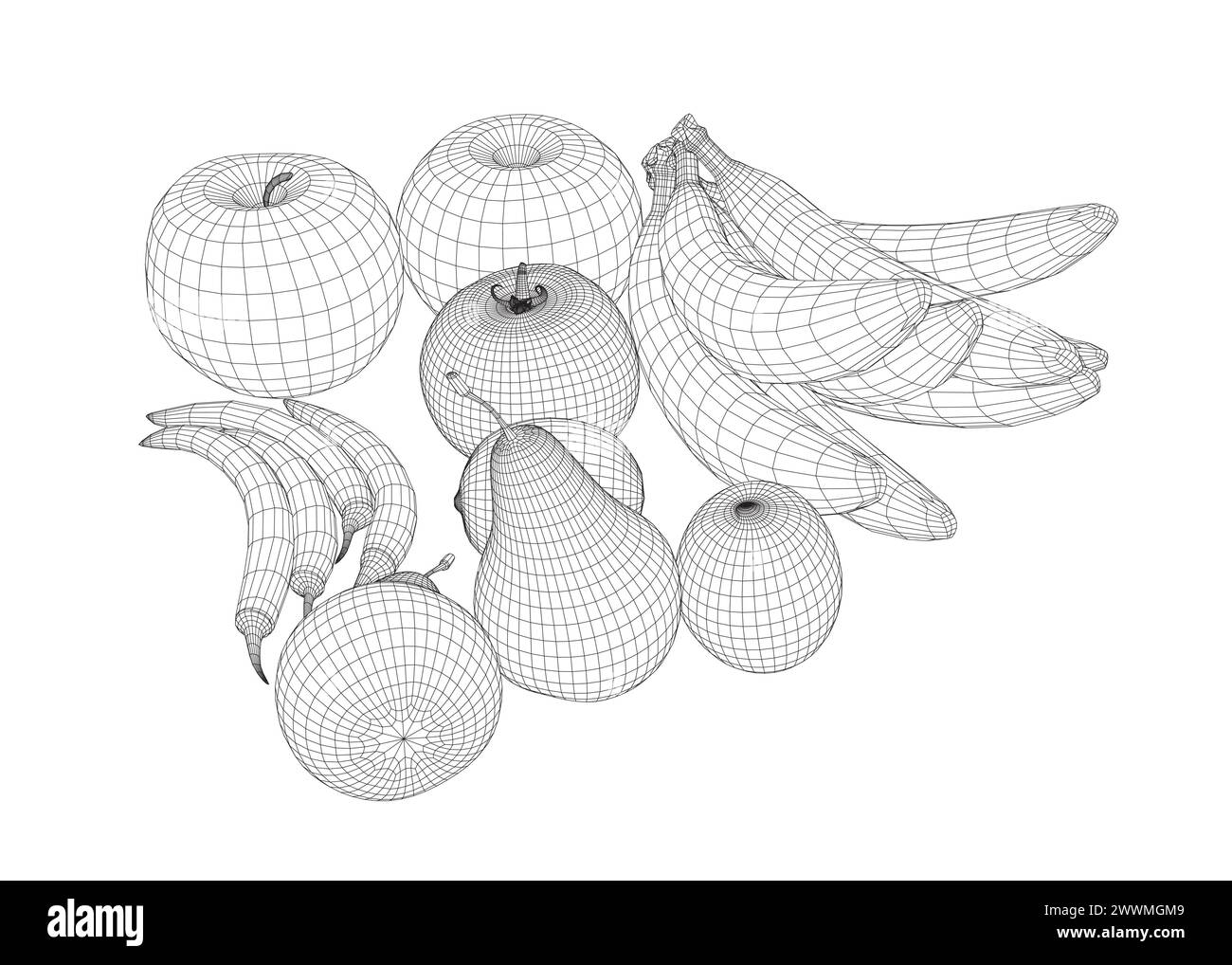 Fruit wireframe: bananas, apples, pears, peppers, tomato made of black lines isolated on a white background. Vector illustration. 3D. Stock Vectorhttps://www.alamy.com/image-license-details/?v=1https://www.alamy.com/fruit-wireframe-bananas-apples-pears-peppers-tomato-made-of-black-lines-isolated-on-a-white-background-vector-illustration-3d-image600971065.html
Fruit wireframe: bananas, apples, pears, peppers, tomato made of black lines isolated on a white background. Vector illustration. 3D. Stock Vectorhttps://www.alamy.com/image-license-details/?v=1https://www.alamy.com/fruit-wireframe-bananas-apples-pears-peppers-tomato-made-of-black-lines-isolated-on-a-white-background-vector-illustration-3d-image600971065.htmlRF2WWMGM9–Fruit wireframe: bananas, apples, pears, peppers, tomato made of black lines isolated on a white background. Vector illustration. 3D.
 . Botany for agricultural students . Botany. Fig. 111. — A, lengthwise section through a tip of a stem, showing the apical meristem (to) from which branches (h) are arising and from which cam- bium (c) and other tissues are being formed below. B, cross section of a stem, showing the cambium and its position in reference to other tissues. Tissues Connected with Growth. — Since the cells of most tis- sues are no longer capable of growth and division after completing their modifications, there must be provided at certain places in the plant groups or bands of cells which retain their ability to g Stock Photohttps://www.alamy.com/image-license-details/?v=1https://www.alamy.com/botany-for-agricultural-students-botany-fig-111-a-lengthwise-section-through-a-tip-of-a-stem-showing-the-apical-meristem-to-from-which-branches-h-are-arising-and-from-which-cam-bium-c-and-other-tissues-are-being-formed-below-b-cross-section-of-a-stem-showing-the-cambium-and-its-position-in-reference-to-other-tissues-tissues-connected-with-growth-since-the-cells-of-most-tis-sues-are-no-longer-capable-of-growth-and-division-after-completing-their-modifications-there-must-be-provided-at-certain-places-in-the-plant-groups-or-bands-of-cells-which-retain-their-ability-to-g-image216449129.html
. Botany for agricultural students . Botany. Fig. 111. — A, lengthwise section through a tip of a stem, showing the apical meristem (to) from which branches (h) are arising and from which cam- bium (c) and other tissues are being formed below. B, cross section of a stem, showing the cambium and its position in reference to other tissues. Tissues Connected with Growth. — Since the cells of most tis- sues are no longer capable of growth and division after completing their modifications, there must be provided at certain places in the plant groups or bands of cells which retain their ability to g Stock Photohttps://www.alamy.com/image-license-details/?v=1https://www.alamy.com/botany-for-agricultural-students-botany-fig-111-a-lengthwise-section-through-a-tip-of-a-stem-showing-the-apical-meristem-to-from-which-branches-h-are-arising-and-from-which-cam-bium-c-and-other-tissues-are-being-formed-below-b-cross-section-of-a-stem-showing-the-cambium-and-its-position-in-reference-to-other-tissues-tissues-connected-with-growth-since-the-cells-of-most-tis-sues-are-no-longer-capable-of-growth-and-division-after-completing-their-modifications-there-must-be-provided-at-certain-places-in-the-plant-groups-or-bands-of-cells-which-retain-their-ability-to-g-image216449129.htmlRMPG4321–. Botany for agricultural students . Botany. Fig. 111. — A, lengthwise section through a tip of a stem, showing the apical meristem (to) from which branches (h) are arising and from which cam- bium (c) and other tissues are being formed below. B, cross section of a stem, showing the cambium and its position in reference to other tissues. Tissues Connected with Growth. — Since the cells of most tis- sues are no longer capable of growth and division after completing their modifications, there must be provided at certain places in the plant groups or bands of cells which retain their ability to g
![. A monograph of the North American species of the genus Polygonum. Polygonum. hA^CJ morcm.. Oft "^M CROSS SECTION STEM OF POLYGONUM ARIFOLIUM LINNAEUS.. Please note that these images are extracted from scanned page images that may have been digitally enhanced for readability - coloration and appearance of these illustrations may not perfectly resemble the original work.. Small, John Kunkel, 1869-1938. [Lancaster, Pa. , The New Era Print] Stock Photo . A monograph of the North American species of the genus Polygonum. Polygonum. hA^CJ morcm.. Oft "^M CROSS SECTION STEM OF POLYGONUM ARIFOLIUM LINNAEUS.. Please note that these images are extracted from scanned page images that may have been digitally enhanced for readability - coloration and appearance of these illustrations may not perfectly resemble the original work.. Small, John Kunkel, 1869-1938. [Lancaster, Pa. , The New Era Print] Stock Photo](https://c8.alamy.com/comp/RE2MDY/a-monograph-of-the-north-american-species-of-the-genus-polygonum-polygonum-hacj-morcm-oft-quotm-cross-section-stem-of-polygonum-arifolium-linnaeus-please-note-that-these-images-are-extracted-from-scanned-page-images-that-may-have-been-digitally-enhanced-for-readability-coloration-and-appearance-of-these-illustrations-may-not-perfectly-resemble-the-original-work-small-john-kunkel-1869-1938-lancaster-pa-the-new-era-print-RE2MDY.jpg) . A monograph of the North American species of the genus Polygonum. Polygonum. hA^CJ morcm.. Oft "^M CROSS SECTION STEM OF POLYGONUM ARIFOLIUM LINNAEUS.. Please note that these images are extracted from scanned page images that may have been digitally enhanced for readability - coloration and appearance of these illustrations may not perfectly resemble the original work.. Small, John Kunkel, 1869-1938. [Lancaster, Pa. , The New Era Print] Stock Photohttps://www.alamy.com/image-license-details/?v=1https://www.alamy.com/a-monograph-of-the-north-american-species-of-the-genus-polygonum-polygonum-hacj-morcm-oft-quotm-cross-section-stem-of-polygonum-arifolium-linnaeus-please-note-that-these-images-are-extracted-from-scanned-page-images-that-may-have-been-digitally-enhanced-for-readability-coloration-and-appearance-of-these-illustrations-may-not-perfectly-resemble-the-original-work-small-john-kunkel-1869-1938-lancaster-pa-the-new-era-print-image232399943.html
. A monograph of the North American species of the genus Polygonum. Polygonum. hA^CJ morcm.. Oft "^M CROSS SECTION STEM OF POLYGONUM ARIFOLIUM LINNAEUS.. Please note that these images are extracted from scanned page images that may have been digitally enhanced for readability - coloration and appearance of these illustrations may not perfectly resemble the original work.. Small, John Kunkel, 1869-1938. [Lancaster, Pa. , The New Era Print] Stock Photohttps://www.alamy.com/image-license-details/?v=1https://www.alamy.com/a-monograph-of-the-north-american-species-of-the-genus-polygonum-polygonum-hacj-morcm-oft-quotm-cross-section-stem-of-polygonum-arifolium-linnaeus-please-note-that-these-images-are-extracted-from-scanned-page-images-that-may-have-been-digitally-enhanced-for-readability-coloration-and-appearance-of-these-illustrations-may-not-perfectly-resemble-the-original-work-small-john-kunkel-1869-1938-lancaster-pa-the-new-era-print-image232399943.htmlRMRE2MDY–. A monograph of the North American species of the genus Polygonum. Polygonum. hA^CJ morcm.. Oft "^M CROSS SECTION STEM OF POLYGONUM ARIFOLIUM LINNAEUS.. Please note that these images are extracted from scanned page images that may have been digitally enhanced for readability - coloration and appearance of these illustrations may not perfectly resemble the original work.. Small, John Kunkel, 1869-1938. [Lancaster, Pa. , The New Era Print]
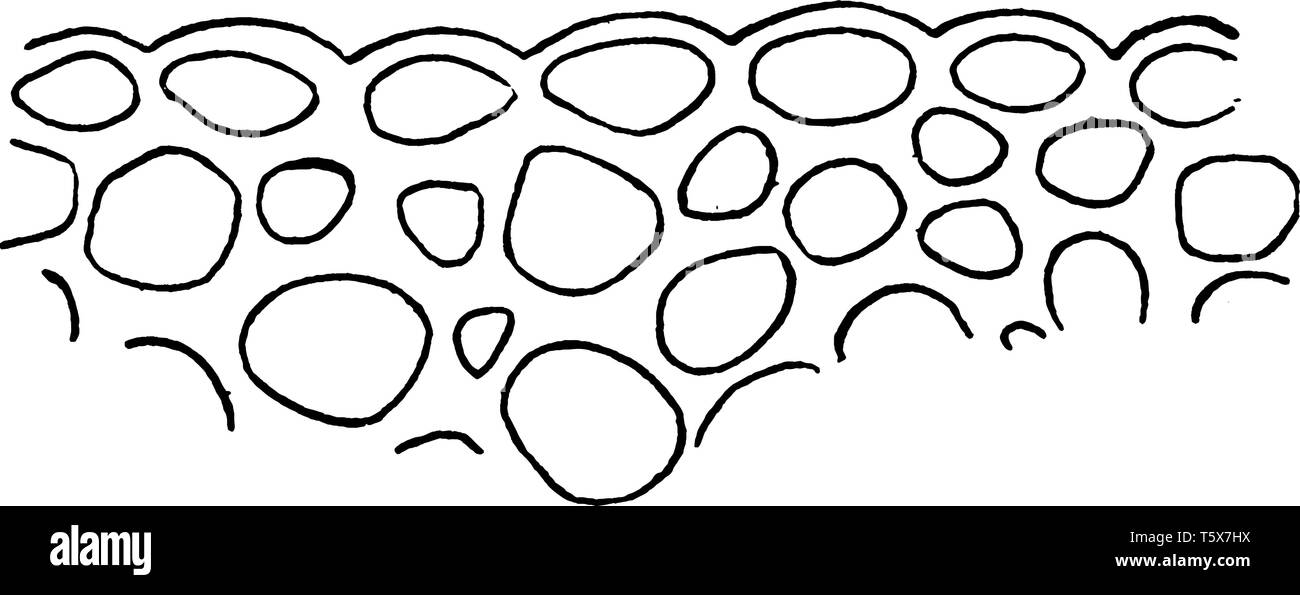 A picture of N. Odorata epidermis showing portion of cross section of submerged stem of Nymphaea odorata, where there is no cutinized layer and the cu Stock Vectorhttps://www.alamy.com/image-license-details/?v=1https://www.alamy.com/a-picture-of-n-odorata-epidermis-showing-portion-of-cross-section-of-submerged-stem-of-nymphaea-odorata-where-there-is-no-cutinized-layer-and-the-cu-image244595174.html
A picture of N. Odorata epidermis showing portion of cross section of submerged stem of Nymphaea odorata, where there is no cutinized layer and the cu Stock Vectorhttps://www.alamy.com/image-license-details/?v=1https://www.alamy.com/a-picture-of-n-odorata-epidermis-showing-portion-of-cross-section-of-submerged-stem-of-nymphaea-odorata-where-there-is-no-cutinized-layer-and-the-cu-image244595174.htmlRFT5X7HX–A picture of N. Odorata epidermis showing portion of cross section of submerged stem of Nymphaea odorata, where there is no cutinized layer and the cu
 A picture showing Lardizabala. 1 is petals and stems of male flower; 2 is carpels; 3 is fruit of a lardizabala; 4 is a cross section of it; 5 is a see Stock Vectorhttps://www.alamy.com/image-license-details/?v=1https://www.alamy.com/a-picture-showing-lardizabala-1-is-petals-and-stems-of-male-flower-2-is-carpels-3-is-fruit-of-a-lardizabala-4-is-a-cross-section-of-it-5-is-a-see-image244631763.html
A picture showing Lardizabala. 1 is petals and stems of male flower; 2 is carpels; 3 is fruit of a lardizabala; 4 is a cross section of it; 5 is a see Stock Vectorhttps://www.alamy.com/image-license-details/?v=1https://www.alamy.com/a-picture-showing-lardizabala-1-is-petals-and-stems-of-male-flower-2-is-carpels-3-is-fruit-of-a-lardizabala-4-is-a-cross-section-of-it-5-is-a-see-image244631763.htmlRFT5YX8K–A picture showing Lardizabala. 1 is petals and stems of male flower; 2 is carpels; 3 is fruit of a lardizabala; 4 is a cross section of it; 5 is a see
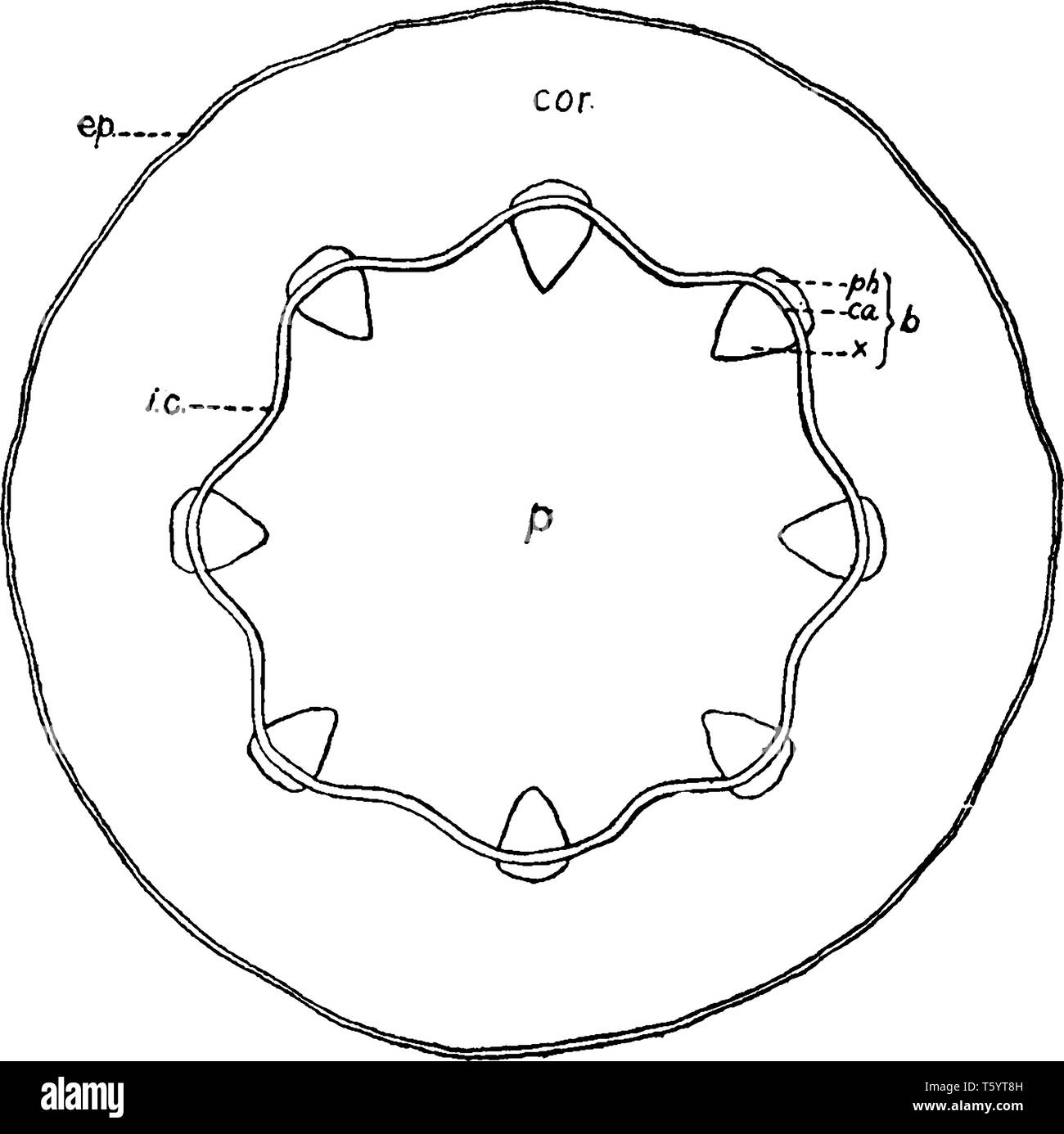 A diagram showing tissue-systems in young stem of castor-oil plant, vintage line drawing or engraving illustration. Stock Vectorhttps://www.alamy.com/image-license-details/?v=1https://www.alamy.com/a-diagram-showing-tissue-systems-in-young-stem-of-castor-oil-plant-vintage-line-drawing-or-engraving-illustration-image244630193.html
A diagram showing tissue-systems in young stem of castor-oil plant, vintage line drawing or engraving illustration. Stock Vectorhttps://www.alamy.com/image-license-details/?v=1https://www.alamy.com/a-diagram-showing-tissue-systems-in-young-stem-of-castor-oil-plant-vintage-line-drawing-or-engraving-illustration-image244630193.htmlRFT5YT8H–A diagram showing tissue-systems in young stem of castor-oil plant, vintage line drawing or engraving illustration.
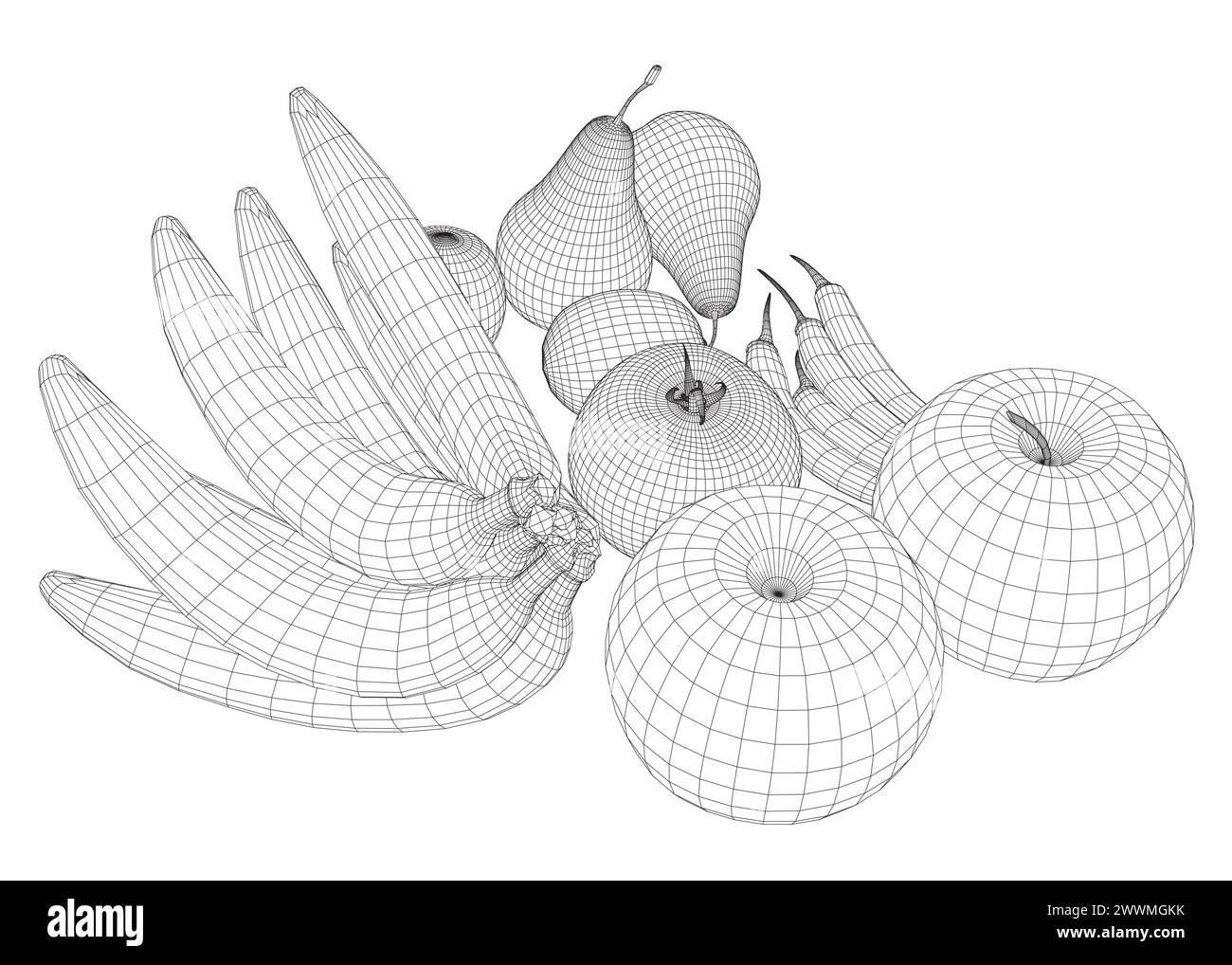 Fruit wireframe: bananas, apples, pears, peppers, tomato made of black lines isolated on a white background. Vector illustration. 3D. Stock Vectorhttps://www.alamy.com/image-license-details/?v=1https://www.alamy.com/fruit-wireframe-bananas-apples-pears-peppers-tomato-made-of-black-lines-isolated-on-a-white-background-vector-illustration-3d-image600971047.html
Fruit wireframe: bananas, apples, pears, peppers, tomato made of black lines isolated on a white background. Vector illustration. 3D. Stock Vectorhttps://www.alamy.com/image-license-details/?v=1https://www.alamy.com/fruit-wireframe-bananas-apples-pears-peppers-tomato-made-of-black-lines-isolated-on-a-white-background-vector-illustration-3d-image600971047.htmlRF2WWMGKK–Fruit wireframe: bananas, apples, pears, peppers, tomato made of black lines isolated on a white background. Vector illustration. 3D.
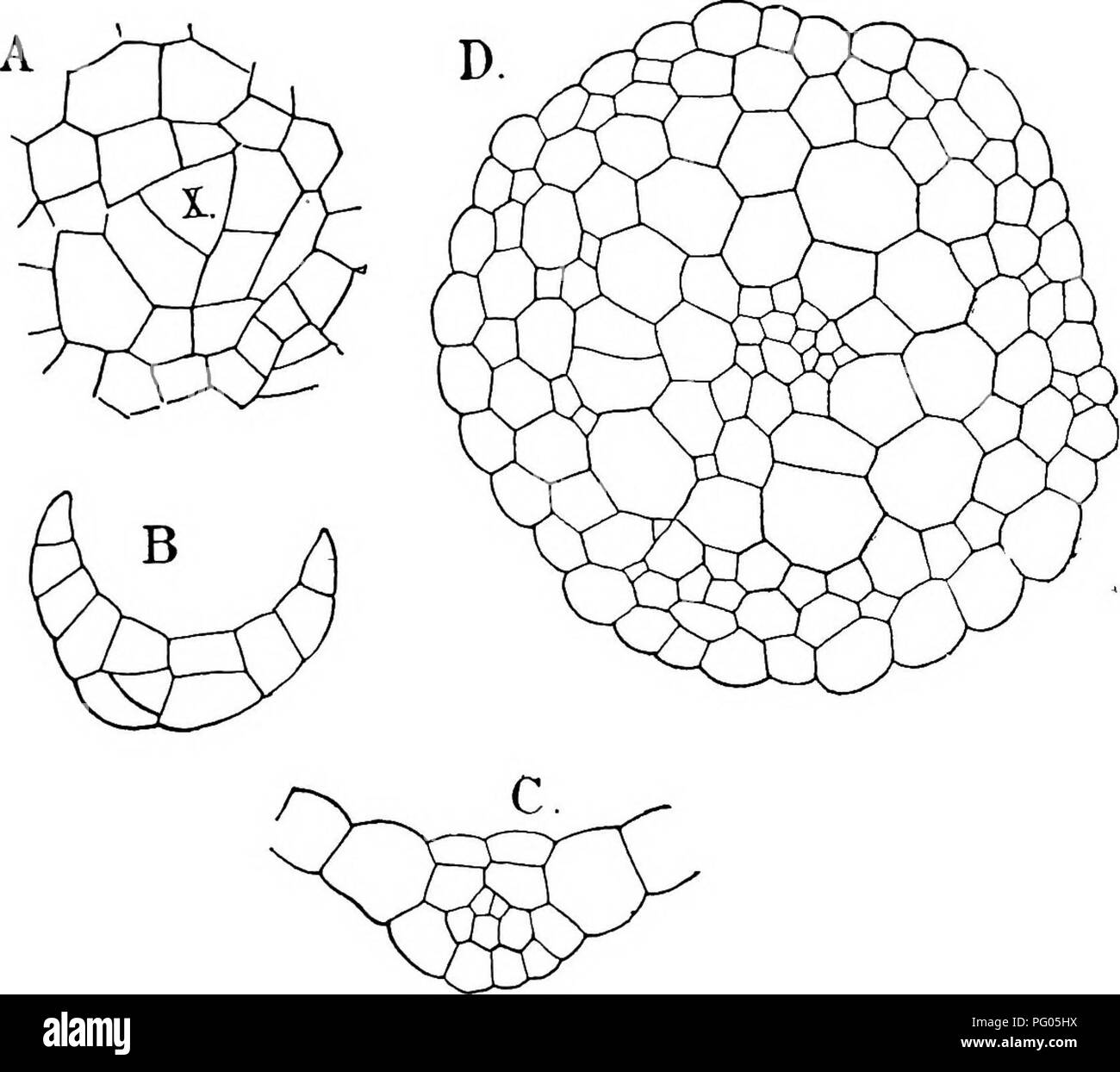 . The structure and development of mosses and ferns (Archegoniatae). Plant morphology; Mosses; Ferns. VI. THE BRYALES 193 to multiply by division after the cells are fully grown. The marginal cells in the leaf of Funaria are much narrower than those between them and the midrib, and their forward ends. Fig. 100.—FuTiarta hygrometrica. A, Transverse section of the apex of a young shoot, X515: B, C, cross-sections of young leaves, X515; D, cross-section of the stem, X257. often project somewhat, giving the margin of the leaf a serrate outline, which is also common in many other Mosses. The Branch Stock Photohttps://www.alamy.com/image-license-details/?v=1https://www.alamy.com/the-structure-and-development-of-mosses-and-ferns-archegoniatae-plant-morphology-mosses-ferns-vi-the-bryales-193-to-multiply-by-division-after-the-cells-are-fully-grown-the-marginal-cells-in-the-leaf-of-funaria-are-much-narrower-than-those-between-them-and-the-midrib-and-their-forward-ends-fig-100futiarta-hygrometrica-a-transverse-section-of-the-apex-of-a-young-shoot-x515-b-c-cross-sections-of-young-leaves-x515-d-cross-section-of-the-stem-x257-often-project-somewhat-giving-the-margin-of-the-leaf-a-serrate-outline-which-is-also-common-in-many-other-mosses-the-branch-image216363334.html
. The structure and development of mosses and ferns (Archegoniatae). Plant morphology; Mosses; Ferns. VI. THE BRYALES 193 to multiply by division after the cells are fully grown. The marginal cells in the leaf of Funaria are much narrower than those between them and the midrib, and their forward ends. Fig. 100.—FuTiarta hygrometrica. A, Transverse section of the apex of a young shoot, X515: B, C, cross-sections of young leaves, X515; D, cross-section of the stem, X257. often project somewhat, giving the margin of the leaf a serrate outline, which is also common in many other Mosses. The Branch Stock Photohttps://www.alamy.com/image-license-details/?v=1https://www.alamy.com/the-structure-and-development-of-mosses-and-ferns-archegoniatae-plant-morphology-mosses-ferns-vi-the-bryales-193-to-multiply-by-division-after-the-cells-are-fully-grown-the-marginal-cells-in-the-leaf-of-funaria-are-much-narrower-than-those-between-them-and-the-midrib-and-their-forward-ends-fig-100futiarta-hygrometrica-a-transverse-section-of-the-apex-of-a-young-shoot-x515-b-c-cross-sections-of-young-leaves-x515-d-cross-section-of-the-stem-x257-often-project-somewhat-giving-the-margin-of-the-leaf-a-serrate-outline-which-is-also-common-in-many-other-mosses-the-branch-image216363334.htmlRMPG05HX–. The structure and development of mosses and ferns (Archegoniatae). Plant morphology; Mosses; Ferns. VI. THE BRYALES 193 to multiply by division after the cells are fully grown. The marginal cells in the leaf of Funaria are much narrower than those between them and the midrib, and their forward ends. Fig. 100.—FuTiarta hygrometrica. A, Transverse section of the apex of a young shoot, X515: B, C, cross-sections of young leaves, X515; D, cross-section of the stem, X257. often project somewhat, giving the margin of the leaf a serrate outline, which is also common in many other Mosses. The Branch
![. A monograph of the North American species of the genus Polygonum [microform]. Botany; Dicotyledons; Botanique; Dicotyledones. V'^lSk. CROSS SECTION STEM OF POLYGONUM PENNSYLVANICUM LINNAEUS. Please note that these images are extracted from scanned page images that may have been digitally enhanced for readability - coloration and appearance of these illustrations may not perfectly resemble the original work.. Small, John K. (John Kunkel), 1869-1938. [Lancaster, Pa. ? : s. n. Stock Photo . A monograph of the North American species of the genus Polygonum [microform]. Botany; Dicotyledons; Botanique; Dicotyledones. V'^lSk. CROSS SECTION STEM OF POLYGONUM PENNSYLVANICUM LINNAEUS. Please note that these images are extracted from scanned page images that may have been digitally enhanced for readability - coloration and appearance of these illustrations may not perfectly resemble the original work.. Small, John K. (John Kunkel), 1869-1938. [Lancaster, Pa. ? : s. n. Stock Photo](https://c8.alamy.com/comp/RJ405P/a-monograph-of-the-north-american-species-of-the-genus-polygonum-microform-botany-dicotyledons-botanique-dicotyledones-vlsk-cross-section-stem-of-polygonum-pennsylvanicum-linnaeus-please-note-that-these-images-are-extracted-from-scanned-page-images-that-may-have-been-digitally-enhanced-for-readability-coloration-and-appearance-of-these-illustrations-may-not-perfectly-resemble-the-original-work-small-john-k-john-kunkel-1869-1938-lancaster-pa-s-n-RJ405P.jpg) . A monograph of the North American species of the genus Polygonum [microform]. Botany; Dicotyledons; Botanique; Dicotyledones. V'^lSk. CROSS SECTION STEM OF POLYGONUM PENNSYLVANICUM LINNAEUS. Please note that these images are extracted from scanned page images that may have been digitally enhanced for readability - coloration and appearance of these illustrations may not perfectly resemble the original work.. Small, John K. (John Kunkel), 1869-1938. [Lancaster, Pa. ? : s. n. Stock Photohttps://www.alamy.com/image-license-details/?v=1https://www.alamy.com/a-monograph-of-the-north-american-species-of-the-genus-polygonum-microform-botany-dicotyledons-botanique-dicotyledones-vlsk-cross-section-stem-of-polygonum-pennsylvanicum-linnaeus-please-note-that-these-images-are-extracted-from-scanned-page-images-that-may-have-been-digitally-enhanced-for-readability-coloration-and-appearance-of-these-illustrations-may-not-perfectly-resemble-the-original-work-small-john-k-john-kunkel-1869-1938-lancaster-pa-s-n-image234886562.html
. A monograph of the North American species of the genus Polygonum [microform]. Botany; Dicotyledons; Botanique; Dicotyledones. V'^lSk. CROSS SECTION STEM OF POLYGONUM PENNSYLVANICUM LINNAEUS. Please note that these images are extracted from scanned page images that may have been digitally enhanced for readability - coloration and appearance of these illustrations may not perfectly resemble the original work.. Small, John K. (John Kunkel), 1869-1938. [Lancaster, Pa. ? : s. n. Stock Photohttps://www.alamy.com/image-license-details/?v=1https://www.alamy.com/a-monograph-of-the-north-american-species-of-the-genus-polygonum-microform-botany-dicotyledons-botanique-dicotyledones-vlsk-cross-section-stem-of-polygonum-pennsylvanicum-linnaeus-please-note-that-these-images-are-extracted-from-scanned-page-images-that-may-have-been-digitally-enhanced-for-readability-coloration-and-appearance-of-these-illustrations-may-not-perfectly-resemble-the-original-work-small-john-k-john-kunkel-1869-1938-lancaster-pa-s-n-image234886562.htmlRMRJ405P–. A monograph of the North American species of the genus Polygonum [microform]. Botany; Dicotyledons; Botanique; Dicotyledones. V'^lSk. CROSS SECTION STEM OF POLYGONUM PENNSYLVANICUM LINNAEUS. Please note that these images are extracted from scanned page images that may have been digitally enhanced for readability - coloration and appearance of these illustrations may not perfectly resemble the original work.. Small, John K. (John Kunkel), 1869-1938. [Lancaster, Pa. ? : s. n.
 . Plant life and plant uses; an elementary textbook, a foundation for the study of agriculture, domestic science or college botany. Botany. FERNS 4ig gonium is often only a small part of it. Sporangia, on the other hand, are exclusively devoted to producing spores,. Fig. 210. — Adiantum, the maidenhair fern. Cross section of the stem. The fol- lowing tissues are evident: epidermis, a thick cortex, outer phloem, xylem r (thick-walled cells), inner phloem, pith. The phloem, the xylem, arid the pith, taken together, constitute the stele. and they are only a very small part of the whole sporophyte Stock Photohttps://www.alamy.com/image-license-details/?v=1https://www.alamy.com/plant-life-and-plant-uses-an-elementary-textbook-a-foundation-for-the-study-of-agriculture-domestic-science-or-college-botany-botany-ferns-4ig-gonium-is-often-only-a-small-part-of-it-sporangia-on-the-other-hand-are-exclusively-devoted-to-producing-spores-fig-210-adiantum-the-maidenhair-fern-cross-section-of-the-stem-the-fol-lowing-tissues-are-evident-epidermis-a-thick-cortex-outer-phloem-xylem-r-thick-walled-cells-inner-phloem-pith-the-phloem-the-xylem-arid-the-pith-taken-together-constitute-the-stele-and-they-are-only-a-very-small-part-of-the-whole-sporophyte-image216447211.html
. Plant life and plant uses; an elementary textbook, a foundation for the study of agriculture, domestic science or college botany. Botany. FERNS 4ig gonium is often only a small part of it. Sporangia, on the other hand, are exclusively devoted to producing spores,. Fig. 210. — Adiantum, the maidenhair fern. Cross section of the stem. The fol- lowing tissues are evident: epidermis, a thick cortex, outer phloem, xylem r (thick-walled cells), inner phloem, pith. The phloem, the xylem, arid the pith, taken together, constitute the stele. and they are only a very small part of the whole sporophyte Stock Photohttps://www.alamy.com/image-license-details/?v=1https://www.alamy.com/plant-life-and-plant-uses-an-elementary-textbook-a-foundation-for-the-study-of-agriculture-domestic-science-or-college-botany-botany-ferns-4ig-gonium-is-often-only-a-small-part-of-it-sporangia-on-the-other-hand-are-exclusively-devoted-to-producing-spores-fig-210-adiantum-the-maidenhair-fern-cross-section-of-the-stem-the-fol-lowing-tissues-are-evident-epidermis-a-thick-cortex-outer-phloem-xylem-r-thick-walled-cells-inner-phloem-pith-the-phloem-the-xylem-arid-the-pith-taken-together-constitute-the-stele-and-they-are-only-a-very-small-part-of-the-whole-sporophyte-image216447211.htmlRMPG40HF–. Plant life and plant uses; an elementary textbook, a foundation for the study of agriculture, domestic science or college botany. Botany. FERNS 4ig gonium is often only a small part of it. Sporangia, on the other hand, are exclusively devoted to producing spores,. Fig. 210. — Adiantum, the maidenhair fern. Cross section of the stem. The fol- lowing tissues are evident: epidermis, a thick cortex, outer phloem, xylem r (thick-walled cells), inner phloem, pith. The phloem, the xylem, arid the pith, taken together, constitute the stele. and they are only a very small part of the whole sporophyte
![. A monograph of the North American species of the genus Polygonum. Polygonum. CROSS SECTION STEM OF POLYGONUM CALIFORNICUM Meisner. FIG. 2.. LONG SECTION STEM OF POLYGONUM CALIFORNICUM Meisner.. Please note that these images are extracted from scanned page images that may have been digitally enhanced for readability - coloration and appearance of these illustrations may not perfectly resemble the original work.. Small, John Kunkel, 1869-1938. [Lancaster, Pa. , The New Era Print] Stock Photo . A monograph of the North American species of the genus Polygonum. Polygonum. CROSS SECTION STEM OF POLYGONUM CALIFORNICUM Meisner. FIG. 2.. LONG SECTION STEM OF POLYGONUM CALIFORNICUM Meisner.. Please note that these images are extracted from scanned page images that may have been digitally enhanced for readability - coloration and appearance of these illustrations may not perfectly resemble the original work.. Small, John Kunkel, 1869-1938. [Lancaster, Pa. , The New Era Print] Stock Photo](https://c8.alamy.com/comp/RE2MF1/a-monograph-of-the-north-american-species-of-the-genus-polygonum-polygonum-cross-section-stem-of-polygonum-californicum-meisner-fig-2-long-section-stem-of-polygonum-californicum-meisner-please-note-that-these-images-are-extracted-from-scanned-page-images-that-may-have-been-digitally-enhanced-for-readability-coloration-and-appearance-of-these-illustrations-may-not-perfectly-resemble-the-original-work-small-john-kunkel-1869-1938-lancaster-pa-the-new-era-print-RE2MF1.jpg) . A monograph of the North American species of the genus Polygonum. Polygonum. CROSS SECTION STEM OF POLYGONUM CALIFORNICUM Meisner. FIG. 2.. LONG SECTION STEM OF POLYGONUM CALIFORNICUM Meisner.. Please note that these images are extracted from scanned page images that may have been digitally enhanced for readability - coloration and appearance of these illustrations may not perfectly resemble the original work.. Small, John Kunkel, 1869-1938. [Lancaster, Pa. , The New Era Print] Stock Photohttps://www.alamy.com/image-license-details/?v=1https://www.alamy.com/a-monograph-of-the-north-american-species-of-the-genus-polygonum-polygonum-cross-section-stem-of-polygonum-californicum-meisner-fig-2-long-section-stem-of-polygonum-californicum-meisner-please-note-that-these-images-are-extracted-from-scanned-page-images-that-may-have-been-digitally-enhanced-for-readability-coloration-and-appearance-of-these-illustrations-may-not-perfectly-resemble-the-original-work-small-john-kunkel-1869-1938-lancaster-pa-the-new-era-print-image232399973.html
. A monograph of the North American species of the genus Polygonum. Polygonum. CROSS SECTION STEM OF POLYGONUM CALIFORNICUM Meisner. FIG. 2.. LONG SECTION STEM OF POLYGONUM CALIFORNICUM Meisner.. Please note that these images are extracted from scanned page images that may have been digitally enhanced for readability - coloration and appearance of these illustrations may not perfectly resemble the original work.. Small, John Kunkel, 1869-1938. [Lancaster, Pa. , The New Era Print] Stock Photohttps://www.alamy.com/image-license-details/?v=1https://www.alamy.com/a-monograph-of-the-north-american-species-of-the-genus-polygonum-polygonum-cross-section-stem-of-polygonum-californicum-meisner-fig-2-long-section-stem-of-polygonum-californicum-meisner-please-note-that-these-images-are-extracted-from-scanned-page-images-that-may-have-been-digitally-enhanced-for-readability-coloration-and-appearance-of-these-illustrations-may-not-perfectly-resemble-the-original-work-small-john-kunkel-1869-1938-lancaster-pa-the-new-era-print-image232399973.htmlRMRE2MF1–. A monograph of the North American species of the genus Polygonum. Polygonum. CROSS SECTION STEM OF POLYGONUM CALIFORNICUM Meisner. FIG. 2.. LONG SECTION STEM OF POLYGONUM CALIFORNICUM Meisner.. Please note that these images are extracted from scanned page images that may have been digitally enhanced for readability - coloration and appearance of these illustrations may not perfectly resemble the original work.. Small, John Kunkel, 1869-1938. [Lancaster, Pa. , The New Era Print]
 . A textbook of botany for colleges and universities ... Botany. STEMS 701. Fig. 1027. — A diagrammatic cross section of a carnation stem {Dianthus Caryophylltis), showing the develop- ment of a mechanical cylinder (m) out- side the vascular tract (v); c, c', cortical parenchyma; p, central pith. gram per square millimeter, some of the strongest bast has within its limits of elasticity a tensile strength of twelve to twenty-five kilograms per square millimeter, the higher figure being twice that of wrought iron and about equal to that of German steel; however, the breaking point of steel is mu Stock Photohttps://www.alamy.com/image-license-details/?v=1https://www.alamy.com/a-textbook-of-botany-for-colleges-and-universities-botany-stems-701-fig-1027-a-diagrammatic-cross-section-of-a-carnation-stem-dianthus-caryophylltis-showing-the-develop-ment-of-a-mechanical-cylinder-m-out-side-the-vascular-tract-v-c-c-cortical-parenchyma-p-central-pith-gram-per-square-millimeter-some-of-the-strongest-bast-has-within-its-limits-of-elasticity-a-tensile-strength-of-twelve-to-twenty-five-kilograms-per-square-millimeter-the-higher-figure-being-twice-that-of-wrought-iron-and-about-equal-to-that-of-german-steel-however-the-breaking-point-of-steel-is-mu-image216437184.html
. A textbook of botany for colleges and universities ... Botany. STEMS 701. Fig. 1027. — A diagrammatic cross section of a carnation stem {Dianthus Caryophylltis), showing the develop- ment of a mechanical cylinder (m) out- side the vascular tract (v); c, c', cortical parenchyma; p, central pith. gram per square millimeter, some of the strongest bast has within its limits of elasticity a tensile strength of twelve to twenty-five kilograms per square millimeter, the higher figure being twice that of wrought iron and about equal to that of German steel; however, the breaking point of steel is mu Stock Photohttps://www.alamy.com/image-license-details/?v=1https://www.alamy.com/a-textbook-of-botany-for-colleges-and-universities-botany-stems-701-fig-1027-a-diagrammatic-cross-section-of-a-carnation-stem-dianthus-caryophylltis-showing-the-develop-ment-of-a-mechanical-cylinder-m-out-side-the-vascular-tract-v-c-c-cortical-parenchyma-p-central-pith-gram-per-square-millimeter-some-of-the-strongest-bast-has-within-its-limits-of-elasticity-a-tensile-strength-of-twelve-to-twenty-five-kilograms-per-square-millimeter-the-higher-figure-being-twice-that-of-wrought-iron-and-about-equal-to-that-of-german-steel-however-the-breaking-point-of-steel-is-mu-image216437184.htmlRMPG3FRC–. A textbook of botany for colleges and universities ... Botany. STEMS 701. Fig. 1027. — A diagrammatic cross section of a carnation stem {Dianthus Caryophylltis), showing the develop- ment of a mechanical cylinder (m) out- side the vascular tract (v); c, c', cortical parenchyma; p, central pith. gram per square millimeter, some of the strongest bast has within its limits of elasticity a tensile strength of twelve to twenty-five kilograms per square millimeter, the higher figure being twice that of wrought iron and about equal to that of German steel; however, the breaking point of steel is mu
![. A monograph of the North American species of the genus Polygonum. Polygonum. Memoirs Department of Botany Columbia College. Vol. 1. Plate 76.. CROSS SECTION STEM OF POLYGONUM VIRGINIANUM LINNAEUS.. Please note that these images are extracted from scanned page images that may have been digitally enhanced for readability - coloration and appearance of these illustrations may not perfectly resemble the original work.. Small, John Kunkel, 1869-1938. [Lancaster, Pa. , The New Era Print] Stock Photo . A monograph of the North American species of the genus Polygonum. Polygonum. Memoirs Department of Botany Columbia College. Vol. 1. Plate 76.. CROSS SECTION STEM OF POLYGONUM VIRGINIANUM LINNAEUS.. Please note that these images are extracted from scanned page images that may have been digitally enhanced for readability - coloration and appearance of these illustrations may not perfectly resemble the original work.. Small, John Kunkel, 1869-1938. [Lancaster, Pa. , The New Era Print] Stock Photo](https://c8.alamy.com/comp/RE2MGA/a-monograph-of-the-north-american-species-of-the-genus-polygonum-polygonum-memoirs-department-of-botany-columbia-college-vol-1-plate-76-cross-section-stem-of-polygonum-virginianum-linnaeus-please-note-that-these-images-are-extracted-from-scanned-page-images-that-may-have-been-digitally-enhanced-for-readability-coloration-and-appearance-of-these-illustrations-may-not-perfectly-resemble-the-original-work-small-john-kunkel-1869-1938-lancaster-pa-the-new-era-print-RE2MGA.jpg) . A monograph of the North American species of the genus Polygonum. Polygonum. Memoirs Department of Botany Columbia College. Vol. 1. Plate 76.. CROSS SECTION STEM OF POLYGONUM VIRGINIANUM LINNAEUS.. Please note that these images are extracted from scanned page images that may have been digitally enhanced for readability - coloration and appearance of these illustrations may not perfectly resemble the original work.. Small, John Kunkel, 1869-1938. [Lancaster, Pa. , The New Era Print] Stock Photohttps://www.alamy.com/image-license-details/?v=1https://www.alamy.com/a-monograph-of-the-north-american-species-of-the-genus-polygonum-polygonum-memoirs-department-of-botany-columbia-college-vol-1-plate-76-cross-section-stem-of-polygonum-virginianum-linnaeus-please-note-that-these-images-are-extracted-from-scanned-page-images-that-may-have-been-digitally-enhanced-for-readability-coloration-and-appearance-of-these-illustrations-may-not-perfectly-resemble-the-original-work-small-john-kunkel-1869-1938-lancaster-pa-the-new-era-print-image232400010.html
. A monograph of the North American species of the genus Polygonum. Polygonum. Memoirs Department of Botany Columbia College. Vol. 1. Plate 76.. CROSS SECTION STEM OF POLYGONUM VIRGINIANUM LINNAEUS.. Please note that these images are extracted from scanned page images that may have been digitally enhanced for readability - coloration and appearance of these illustrations may not perfectly resemble the original work.. Small, John Kunkel, 1869-1938. [Lancaster, Pa. , The New Era Print] Stock Photohttps://www.alamy.com/image-license-details/?v=1https://www.alamy.com/a-monograph-of-the-north-american-species-of-the-genus-polygonum-polygonum-memoirs-department-of-botany-columbia-college-vol-1-plate-76-cross-section-stem-of-polygonum-virginianum-linnaeus-please-note-that-these-images-are-extracted-from-scanned-page-images-that-may-have-been-digitally-enhanced-for-readability-coloration-and-appearance-of-these-illustrations-may-not-perfectly-resemble-the-original-work-small-john-kunkel-1869-1938-lancaster-pa-the-new-era-print-image232400010.htmlRMRE2MGA–. A monograph of the North American species of the genus Polygonum. Polygonum. Memoirs Department of Botany Columbia College. Vol. 1. Plate 76.. CROSS SECTION STEM OF POLYGONUM VIRGINIANUM LINNAEUS.. Please note that these images are extracted from scanned page images that may have been digitally enhanced for readability - coloration and appearance of these illustrations may not perfectly resemble the original work.. Small, John Kunkel, 1869-1938. [Lancaster, Pa. , The New Era Print]
 . A text-book of botany for secondary schools. Botany. FERNS 189 highest, is felt to be the one between Bryophytes and Pteridophytes. On account of the vascular system and other resistant structures, the remains of ferns have been. Fig. 181.—Cross-section of the stem (rootstock) of a, fern, showing the peculiar vascular axis, the large xylem vessels being completely surrounded by the phloem. preserved in great abundance in the rocks. These records show that the ferns are a very ancient group, occurring in special abundance during the Coal-measures. Another striking fact about this leafy body o Stock Photohttps://www.alamy.com/image-license-details/?v=1https://www.alamy.com/a-text-book-of-botany-for-secondary-schools-botany-ferns-189-highest-is-felt-to-be-the-one-between-bryophytes-and-pteridophytes-on-account-of-the-vascular-system-and-other-resistant-structures-the-remains-of-ferns-have-been-fig-181cross-section-of-the-stem-rootstock-of-a-fern-showing-the-peculiar-vascular-axis-the-large-xylem-vessels-being-completely-surrounded-by-the-phloem-preserved-in-great-abundance-in-the-rocks-these-records-show-that-the-ferns-are-a-very-ancient-group-occurring-in-special-abundance-during-the-coal-measures-another-striking-fact-about-this-leafy-body-o-image216348297.html
. A text-book of botany for secondary schools. Botany. FERNS 189 highest, is felt to be the one between Bryophytes and Pteridophytes. On account of the vascular system and other resistant structures, the remains of ferns have been. Fig. 181.—Cross-section of the stem (rootstock) of a, fern, showing the peculiar vascular axis, the large xylem vessels being completely surrounded by the phloem. preserved in great abundance in the rocks. These records show that the ferns are a very ancient group, occurring in special abundance during the Coal-measures. Another striking fact about this leafy body o Stock Photohttps://www.alamy.com/image-license-details/?v=1https://www.alamy.com/a-text-book-of-botany-for-secondary-schools-botany-ferns-189-highest-is-felt-to-be-the-one-between-bryophytes-and-pteridophytes-on-account-of-the-vascular-system-and-other-resistant-structures-the-remains-of-ferns-have-been-fig-181cross-section-of-the-stem-rootstock-of-a-fern-showing-the-peculiar-vascular-axis-the-large-xylem-vessels-being-completely-surrounded-by-the-phloem-preserved-in-great-abundance-in-the-rocks-these-records-show-that-the-ferns-are-a-very-ancient-group-occurring-in-special-abundance-during-the-coal-measures-another-striking-fact-about-this-leafy-body-o-image216348297.htmlRMPFYECW–. A text-book of botany for secondary schools. Botany. FERNS 189 highest, is felt to be the one between Bryophytes and Pteridophytes. On account of the vascular system and other resistant structures, the remains of ferns have been. Fig. 181.—Cross-section of the stem (rootstock) of a, fern, showing the peculiar vascular axis, the large xylem vessels being completely surrounded by the phloem. preserved in great abundance in the rocks. These records show that the ferns are a very ancient group, occurring in special abundance during the Coal-measures. Another striking fact about this leafy body o
![. A monograph of the North American species of the genus Polygonum. Polygonum. Memoirs Department of Botany Columbia College, Vol. 1. Plate 72.. CROSS SECTION STEM OF POLYGONUM ALPINUM ALLIONI.. Please note that these images are extracted from scanned page images that may have been digitally enhanced for readability - coloration and appearance of these illustrations may not perfectly resemble the original work.. Small, John Kunkel, 1869-1938. [Lancaster, Pa. , The New Era Print] Stock Photo . A monograph of the North American species of the genus Polygonum. Polygonum. Memoirs Department of Botany Columbia College, Vol. 1. Plate 72.. CROSS SECTION STEM OF POLYGONUM ALPINUM ALLIONI.. Please note that these images are extracted from scanned page images that may have been digitally enhanced for readability - coloration and appearance of these illustrations may not perfectly resemble the original work.. Small, John Kunkel, 1869-1938. [Lancaster, Pa. , The New Era Print] Stock Photo](https://c8.alamy.com/comp/RE2MJC/a-monograph-of-the-north-american-species-of-the-genus-polygonum-polygonum-memoirs-department-of-botany-columbia-college-vol-1-plate-72-cross-section-stem-of-polygonum-alpinum-allioni-please-note-that-these-images-are-extracted-from-scanned-page-images-that-may-have-been-digitally-enhanced-for-readability-coloration-and-appearance-of-these-illustrations-may-not-perfectly-resemble-the-original-work-small-john-kunkel-1869-1938-lancaster-pa-the-new-era-print-RE2MJC.jpg) . A monograph of the North American species of the genus Polygonum. Polygonum. Memoirs Department of Botany Columbia College, Vol. 1. Plate 72.. CROSS SECTION STEM OF POLYGONUM ALPINUM ALLIONI.. Please note that these images are extracted from scanned page images that may have been digitally enhanced for readability - coloration and appearance of these illustrations may not perfectly resemble the original work.. Small, John Kunkel, 1869-1938. [Lancaster, Pa. , The New Era Print] Stock Photohttps://www.alamy.com/image-license-details/?v=1https://www.alamy.com/a-monograph-of-the-north-american-species-of-the-genus-polygonum-polygonum-memoirs-department-of-botany-columbia-college-vol-1-plate-72-cross-section-stem-of-polygonum-alpinum-allioni-please-note-that-these-images-are-extracted-from-scanned-page-images-that-may-have-been-digitally-enhanced-for-readability-coloration-and-appearance-of-these-illustrations-may-not-perfectly-resemble-the-original-work-small-john-kunkel-1869-1938-lancaster-pa-the-new-era-print-image232400068.html
. A monograph of the North American species of the genus Polygonum. Polygonum. Memoirs Department of Botany Columbia College, Vol. 1. Plate 72.. CROSS SECTION STEM OF POLYGONUM ALPINUM ALLIONI.. Please note that these images are extracted from scanned page images that may have been digitally enhanced for readability - coloration and appearance of these illustrations may not perfectly resemble the original work.. Small, John Kunkel, 1869-1938. [Lancaster, Pa. , The New Era Print] Stock Photohttps://www.alamy.com/image-license-details/?v=1https://www.alamy.com/a-monograph-of-the-north-american-species-of-the-genus-polygonum-polygonum-memoirs-department-of-botany-columbia-college-vol-1-plate-72-cross-section-stem-of-polygonum-alpinum-allioni-please-note-that-these-images-are-extracted-from-scanned-page-images-that-may-have-been-digitally-enhanced-for-readability-coloration-and-appearance-of-these-illustrations-may-not-perfectly-resemble-the-original-work-small-john-kunkel-1869-1938-lancaster-pa-the-new-era-print-image232400068.htmlRMRE2MJC–. A monograph of the North American species of the genus Polygonum. Polygonum. Memoirs Department of Botany Columbia College, Vol. 1. Plate 72.. CROSS SECTION STEM OF POLYGONUM ALPINUM ALLIONI.. Please note that these images are extracted from scanned page images that may have been digitally enhanced for readability - coloration and appearance of these illustrations may not perfectly resemble the original work.. Small, John Kunkel, 1869-1938. [Lancaster, Pa. , The New Era Print]
 . How crops grow. A treatise on the chemical composition, structure, and life of the plant, for all students of agriculture ... Agricultural chemistry; Growth (Plants). 270 HOW OEOPS GEOW. magnifiad sections of a Vascular Bundle or fiber from the maize-stalk. As before remarked, the stem is composed of a ground-work of delicate cell-tissue, in which bundles of vascular tissue are distributed. Fig. 48 represents a cross section of one of these bundles, <-, g, A, as well as. Fig. 48. of a portion of the surrounding cell-tissue, a, a. The latter consists of quite large cells, which, being but Stock Photohttps://www.alamy.com/image-license-details/?v=1https://www.alamy.com/how-crops-grow-a-treatise-on-the-chemical-composition-structure-and-life-of-the-plant-for-all-students-of-agriculture-agricultural-chemistry-growth-plants-270-how-oeops-geow-magnifiad-sections-of-a-vascular-bundle-or-fiber-from-the-maize-stalk-as-before-remarked-the-stem-is-composed-of-a-ground-work-of-delicate-cell-tissue-in-which-bundles-of-vascular-tissue-are-distributed-fig-48-represents-a-cross-section-of-one-of-these-bundles-lt-g-a-as-well-as-fig-48-of-a-portion-of-the-surrounding-cell-tissue-a-a-the-latter-consists-of-quite-large-cells-which-being-but-image216440144.html
. How crops grow. A treatise on the chemical composition, structure, and life of the plant, for all students of agriculture ... Agricultural chemistry; Growth (Plants). 270 HOW OEOPS GEOW. magnifiad sections of a Vascular Bundle or fiber from the maize-stalk. As before remarked, the stem is composed of a ground-work of delicate cell-tissue, in which bundles of vascular tissue are distributed. Fig. 48 represents a cross section of one of these bundles, <-, g, A, as well as. Fig. 48. of a portion of the surrounding cell-tissue, a, a. The latter consists of quite large cells, which, being but Stock Photohttps://www.alamy.com/image-license-details/?v=1https://www.alamy.com/how-crops-grow-a-treatise-on-the-chemical-composition-structure-and-life-of-the-plant-for-all-students-of-agriculture-agricultural-chemistry-growth-plants-270-how-oeops-geow-magnifiad-sections-of-a-vascular-bundle-or-fiber-from-the-maize-stalk-as-before-remarked-the-stem-is-composed-of-a-ground-work-of-delicate-cell-tissue-in-which-bundles-of-vascular-tissue-are-distributed-fig-48-represents-a-cross-section-of-one-of-these-bundles-lt-g-a-as-well-as-fig-48-of-a-portion-of-the-surrounding-cell-tissue-a-a-the-latter-consists-of-quite-large-cells-which-being-but-image216440144.htmlRMPG3KH4–. How crops grow. A treatise on the chemical composition, structure, and life of the plant, for all students of agriculture ... Agricultural chemistry; Growth (Plants). 270 HOW OEOPS GEOW. magnifiad sections of a Vascular Bundle or fiber from the maize-stalk. As before remarked, the stem is composed of a ground-work of delicate cell-tissue, in which bundles of vascular tissue are distributed. Fig. 48 represents a cross section of one of these bundles, <-, g, A, as well as. Fig. 48. of a portion of the surrounding cell-tissue, a, a. The latter consists of quite large cells, which, being but
![. A monograph of the North American species of the genus Polygonum. Polygonum. Memoirs Department of Botany Columbia College. Vol. 1. Plate 74. A. CROSS SECTION STEM OF POLYGONUM PENNSYLVANICUM LINNAEUS. Please note that these images are extracted from scanned page images that may have been digitally enhanced for readability - coloration and appearance of these illustrations may not perfectly resemble the original work.. Small, John Kunkel, 1869-1938. [Lancaster, Pa. , The New Era Print] Stock Photo . A monograph of the North American species of the genus Polygonum. Polygonum. Memoirs Department of Botany Columbia College. Vol. 1. Plate 74. A. CROSS SECTION STEM OF POLYGONUM PENNSYLVANICUM LINNAEUS. Please note that these images are extracted from scanned page images that may have been digitally enhanced for readability - coloration and appearance of these illustrations may not perfectly resemble the original work.. Small, John Kunkel, 1869-1938. [Lancaster, Pa. , The New Era Print] Stock Photo](https://c8.alamy.com/comp/RE2MH9/a-monograph-of-the-north-american-species-of-the-genus-polygonum-polygonum-memoirs-department-of-botany-columbia-college-vol-1-plate-74-a-cross-section-stem-of-polygonum-pennsylvanicum-linnaeus-please-note-that-these-images-are-extracted-from-scanned-page-images-that-may-have-been-digitally-enhanced-for-readability-coloration-and-appearance-of-these-illustrations-may-not-perfectly-resemble-the-original-work-small-john-kunkel-1869-1938-lancaster-pa-the-new-era-print-RE2MH9.jpg) . A monograph of the North American species of the genus Polygonum. Polygonum. Memoirs Department of Botany Columbia College. Vol. 1. Plate 74. A. CROSS SECTION STEM OF POLYGONUM PENNSYLVANICUM LINNAEUS. Please note that these images are extracted from scanned page images that may have been digitally enhanced for readability - coloration and appearance of these illustrations may not perfectly resemble the original work.. Small, John Kunkel, 1869-1938. [Lancaster, Pa. , The New Era Print] Stock Photohttps://www.alamy.com/image-license-details/?v=1https://www.alamy.com/a-monograph-of-the-north-american-species-of-the-genus-polygonum-polygonum-memoirs-department-of-botany-columbia-college-vol-1-plate-74-a-cross-section-stem-of-polygonum-pennsylvanicum-linnaeus-please-note-that-these-images-are-extracted-from-scanned-page-images-that-may-have-been-digitally-enhanced-for-readability-coloration-and-appearance-of-these-illustrations-may-not-perfectly-resemble-the-original-work-small-john-kunkel-1869-1938-lancaster-pa-the-new-era-print-image232400037.html
. A monograph of the North American species of the genus Polygonum. Polygonum. Memoirs Department of Botany Columbia College. Vol. 1. Plate 74. A. CROSS SECTION STEM OF POLYGONUM PENNSYLVANICUM LINNAEUS. Please note that these images are extracted from scanned page images that may have been digitally enhanced for readability - coloration and appearance of these illustrations may not perfectly resemble the original work.. Small, John Kunkel, 1869-1938. [Lancaster, Pa. , The New Era Print] Stock Photohttps://www.alamy.com/image-license-details/?v=1https://www.alamy.com/a-monograph-of-the-north-american-species-of-the-genus-polygonum-polygonum-memoirs-department-of-botany-columbia-college-vol-1-plate-74-a-cross-section-stem-of-polygonum-pennsylvanicum-linnaeus-please-note-that-these-images-are-extracted-from-scanned-page-images-that-may-have-been-digitally-enhanced-for-readability-coloration-and-appearance-of-these-illustrations-may-not-perfectly-resemble-the-original-work-small-john-kunkel-1869-1938-lancaster-pa-the-new-era-print-image232400037.htmlRMRE2MH9–. A monograph of the North American species of the genus Polygonum. Polygonum. Memoirs Department of Botany Columbia College. Vol. 1. Plate 74. A. CROSS SECTION STEM OF POLYGONUM PENNSYLVANICUM LINNAEUS. Please note that these images are extracted from scanned page images that may have been digitally enhanced for readability - coloration and appearance of these illustrations may not perfectly resemble the original work.. Small, John Kunkel, 1869-1938. [Lancaster, Pa. , The New Era Print]
 . A textbook of botany for colleges and universities ... Botany. Fig. 1027. — A diagrammatic cross section of a carnation stem {Dianthus Caryophylltis), showing the develop- ment of a mechanical cylinder (m) out- side the vascular tract (v); c, c', cortical parenchyma; p, central pith. gram per square millimeter, some of the strongest bast has within its limits of elasticity a tensile strength of twelve to twenty-five kilograms per square millimeter, the higher figure being twice that of wrought iron and about equal to that of German steel; however, the breaking point of steel is much beyond t Stock Photohttps://www.alamy.com/image-license-details/?v=1https://www.alamy.com/a-textbook-of-botany-for-colleges-and-universities-botany-fig-1027-a-diagrammatic-cross-section-of-a-carnation-stem-dianthus-caryophylltis-showing-the-develop-ment-of-a-mechanical-cylinder-m-out-side-the-vascular-tract-v-c-c-cortical-parenchyma-p-central-pith-gram-per-square-millimeter-some-of-the-strongest-bast-has-within-its-limits-of-elasticity-a-tensile-strength-of-twelve-to-twenty-five-kilograms-per-square-millimeter-the-higher-figure-being-twice-that-of-wrought-iron-and-about-equal-to-that-of-german-steel-however-the-breaking-point-of-steel-is-much-beyond-t-image216437179.html
. A textbook of botany for colleges and universities ... Botany. Fig. 1027. — A diagrammatic cross section of a carnation stem {Dianthus Caryophylltis), showing the develop- ment of a mechanical cylinder (m) out- side the vascular tract (v); c, c', cortical parenchyma; p, central pith. gram per square millimeter, some of the strongest bast has within its limits of elasticity a tensile strength of twelve to twenty-five kilograms per square millimeter, the higher figure being twice that of wrought iron and about equal to that of German steel; however, the breaking point of steel is much beyond t Stock Photohttps://www.alamy.com/image-license-details/?v=1https://www.alamy.com/a-textbook-of-botany-for-colleges-and-universities-botany-fig-1027-a-diagrammatic-cross-section-of-a-carnation-stem-dianthus-caryophylltis-showing-the-develop-ment-of-a-mechanical-cylinder-m-out-side-the-vascular-tract-v-c-c-cortical-parenchyma-p-central-pith-gram-per-square-millimeter-some-of-the-strongest-bast-has-within-its-limits-of-elasticity-a-tensile-strength-of-twelve-to-twenty-five-kilograms-per-square-millimeter-the-higher-figure-being-twice-that-of-wrought-iron-and-about-equal-to-that-of-german-steel-however-the-breaking-point-of-steel-is-much-beyond-t-image216437179.htmlRMPG3FR7–. A textbook of botany for colleges and universities ... Botany. Fig. 1027. — A diagrammatic cross section of a carnation stem {Dianthus Caryophylltis), showing the develop- ment of a mechanical cylinder (m) out- side the vascular tract (v); c, c', cortical parenchyma; p, central pith. gram per square millimeter, some of the strongest bast has within its limits of elasticity a tensile strength of twelve to twenty-five kilograms per square millimeter, the higher figure being twice that of wrought iron and about equal to that of German steel; however, the breaking point of steel is much beyond t
![. A monograph of the North American species of the genus Polygonum. Polygonum. Memoirs department of Botany Columbia College, Vol. 1. Plate 78.. cross: section stem of polygonum AVICULARE Linnaeus.. Please note that these images are extracted from scanned page images that may have been digitally enhanced for readability - coloration and appearance of these illustrations may not perfectly resemble the original work.. Small, John Kunkel, 1869-1938. [Lancaster, Pa. , The New Era Print] Stock Photo . A monograph of the North American species of the genus Polygonum. Polygonum. Memoirs department of Botany Columbia College, Vol. 1. Plate 78.. cross: section stem of polygonum AVICULARE Linnaeus.. Please note that these images are extracted from scanned page images that may have been digitally enhanced for readability - coloration and appearance of these illustrations may not perfectly resemble the original work.. Small, John Kunkel, 1869-1938. [Lancaster, Pa. , The New Era Print] Stock Photo](https://c8.alamy.com/comp/RE2MFT/a-monograph-of-the-north-american-species-of-the-genus-polygonum-polygonum-memoirs-department-of-botany-columbia-college-vol-1-plate-78-cross-section-stem-of-polygonum-aviculare-linnaeus-please-note-that-these-images-are-extracted-from-scanned-page-images-that-may-have-been-digitally-enhanced-for-readability-coloration-and-appearance-of-these-illustrations-may-not-perfectly-resemble-the-original-work-small-john-kunkel-1869-1938-lancaster-pa-the-new-era-print-RE2MFT.jpg) . A monograph of the North American species of the genus Polygonum. Polygonum. Memoirs department of Botany Columbia College, Vol. 1. Plate 78.. cross: section stem of polygonum AVICULARE Linnaeus.. Please note that these images are extracted from scanned page images that may have been digitally enhanced for readability - coloration and appearance of these illustrations may not perfectly resemble the original work.. Small, John Kunkel, 1869-1938. [Lancaster, Pa. , The New Era Print] Stock Photohttps://www.alamy.com/image-license-details/?v=1https://www.alamy.com/a-monograph-of-the-north-american-species-of-the-genus-polygonum-polygonum-memoirs-department-of-botany-columbia-college-vol-1-plate-78-cross-section-stem-of-polygonum-aviculare-linnaeus-please-note-that-these-images-are-extracted-from-scanned-page-images-that-may-have-been-digitally-enhanced-for-readability-coloration-and-appearance-of-these-illustrations-may-not-perfectly-resemble-the-original-work-small-john-kunkel-1869-1938-lancaster-pa-the-new-era-print-image232399996.html
. A monograph of the North American species of the genus Polygonum. Polygonum. Memoirs department of Botany Columbia College, Vol. 1. Plate 78.. cross: section stem of polygonum AVICULARE Linnaeus.. Please note that these images are extracted from scanned page images that may have been digitally enhanced for readability - coloration and appearance of these illustrations may not perfectly resemble the original work.. Small, John Kunkel, 1869-1938. [Lancaster, Pa. , The New Era Print] Stock Photohttps://www.alamy.com/image-license-details/?v=1https://www.alamy.com/a-monograph-of-the-north-american-species-of-the-genus-polygonum-polygonum-memoirs-department-of-botany-columbia-college-vol-1-plate-78-cross-section-stem-of-polygonum-aviculare-linnaeus-please-note-that-these-images-are-extracted-from-scanned-page-images-that-may-have-been-digitally-enhanced-for-readability-coloration-and-appearance-of-these-illustrations-may-not-perfectly-resemble-the-original-work-small-john-kunkel-1869-1938-lancaster-pa-the-new-era-print-image232399996.htmlRMRE2MFT–. A monograph of the North American species of the genus Polygonum. Polygonum. Memoirs department of Botany Columbia College, Vol. 1. Plate 78.. cross: section stem of polygonum AVICULARE Linnaeus.. Please note that these images are extracted from scanned page images that may have been digitally enhanced for readability - coloration and appearance of these illustrations may not perfectly resemble the original work.. Small, John Kunkel, 1869-1938. [Lancaster, Pa. , The New Era Print]
 . Foundations of botany. Botany; Botany. STRUCTURE OF THE STEM 89 102. Mechanical Importance of Distribution of Material in the Dicotyledonous Stem. —It is easy to see that those tissues which are tough, like hard bast, and those which are both tough and stiff, like wood fibers, are arranged in a tubular fashion in young dicotyledonous stems as they are in some monocotyledonous ones (Fig. 63). Sometimes the interior of the stem is quite hollow, as, for example,. Via. 58.—Stem of Box-Elder One Year Old. (M^oli magnified.) A, lengthwise (radial) section ; B, cross-section; e, epidermis ; ck, cor Stock Photohttps://www.alamy.com/image-license-details/?v=1https://www.alamy.com/foundations-of-botany-botany-botany-structure-of-the-stem-89-102-mechanical-importance-of-distribution-of-material-in-the-dicotyledonous-stem-it-is-easy-to-see-that-those-tissues-which-are-tough-like-hard-bast-and-those-which-are-both-tough-and-stiff-like-wood-fibers-are-arranged-in-a-tubular-fashion-in-young-dicotyledonous-stems-as-they-are-in-some-monocotyledonous-ones-fig-63-sometimes-the-interior-of-the-stem-is-quite-hollow-as-for-example-via-58stem-of-box-elder-one-year-old-moli-magnified-a-lengthwise-radial-section-b-cross-section-e-epidermis-ck-cor-image216448587.html
. Foundations of botany. Botany; Botany. STRUCTURE OF THE STEM 89 102. Mechanical Importance of Distribution of Material in the Dicotyledonous Stem. —It is easy to see that those tissues which are tough, like hard bast, and those which are both tough and stiff, like wood fibers, are arranged in a tubular fashion in young dicotyledonous stems as they are in some monocotyledonous ones (Fig. 63). Sometimes the interior of the stem is quite hollow, as, for example,. Via. 58.—Stem of Box-Elder One Year Old. (M^oli magnified.) A, lengthwise (radial) section ; B, cross-section; e, epidermis ; ck, cor Stock Photohttps://www.alamy.com/image-license-details/?v=1https://www.alamy.com/foundations-of-botany-botany-botany-structure-of-the-stem-89-102-mechanical-importance-of-distribution-of-material-in-the-dicotyledonous-stem-it-is-easy-to-see-that-those-tissues-which-are-tough-like-hard-bast-and-those-which-are-both-tough-and-stiff-like-wood-fibers-are-arranged-in-a-tubular-fashion-in-young-dicotyledonous-stems-as-they-are-in-some-monocotyledonous-ones-fig-63-sometimes-the-interior-of-the-stem-is-quite-hollow-as-for-example-via-58stem-of-box-elder-one-year-old-moli-magnified-a-lengthwise-radial-section-b-cross-section-e-epidermis-ck-cor-image216448587.htmlRMPG42AK–. Foundations of botany. Botany; Botany. STRUCTURE OF THE STEM 89 102. Mechanical Importance of Distribution of Material in the Dicotyledonous Stem. —It is easy to see that those tissues which are tough, like hard bast, and those which are both tough and stiff, like wood fibers, are arranged in a tubular fashion in young dicotyledonous stems as they are in some monocotyledonous ones (Fig. 63). Sometimes the interior of the stem is quite hollow, as, for example,. Via. 58.—Stem of Box-Elder One Year Old. (M^oli magnified.) A, lengthwise (radial) section ; B, cross-section; e, epidermis ; ck, cor
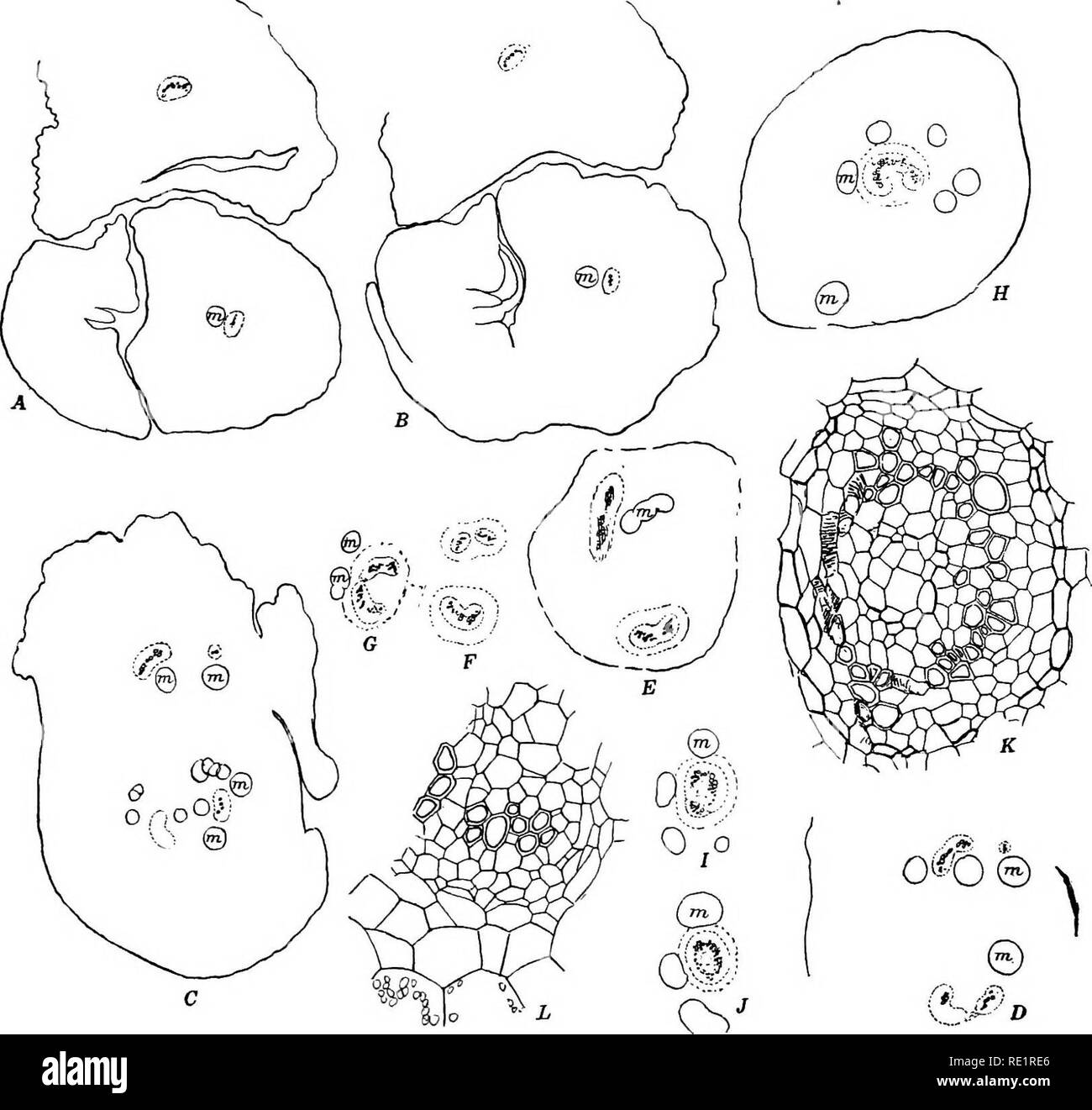 . The Eusporangiatae; the comparative morphology of the Ophioglossaceae and Marattiaceae. Ophioglossaceae; Marattiaceae. 184 THE MARATTIALES than it is in the roots. In the upper region of the stem the leaf traces are further apart, and as the number increases a cross-section of the stem shows a circle of separate bundles closely resembling the arrangement in Ophioglossum. The central "commissural" strand, which is found in the adult stem, had not developed in any of the young sporophytes I examined and evidently arises much later m the history of the sporophyte than it does in the o Stock Photohttps://www.alamy.com/image-license-details/?v=1https://www.alamy.com/the-eusporangiatae-the-comparative-morphology-of-the-ophioglossaceae-and-marattiaceae-ophioglossaceae-marattiaceae-184-the-marattiales-than-it-is-in-the-roots-in-the-upper-region-of-the-stem-the-leaf-traces-are-further-apart-and-as-the-number-increases-a-cross-section-of-the-stem-shows-a-circle-of-separate-bundles-closely-resembling-the-arrangement-in-ophioglossum-the-central-quotcommissuralquot-strand-which-is-found-in-the-adult-stem-had-not-developed-in-any-of-the-young-sporophytes-i-examined-and-evidently-arises-much-later-m-the-history-of-the-sporophyte-than-it-does-in-the-o-image232380350.html
. The Eusporangiatae; the comparative morphology of the Ophioglossaceae and Marattiaceae. Ophioglossaceae; Marattiaceae. 184 THE MARATTIALES than it is in the roots. In the upper region of the stem the leaf traces are further apart, and as the number increases a cross-section of the stem shows a circle of separate bundles closely resembling the arrangement in Ophioglossum. The central "commissural" strand, which is found in the adult stem, had not developed in any of the young sporophytes I examined and evidently arises much later m the history of the sporophyte than it does in the o Stock Photohttps://www.alamy.com/image-license-details/?v=1https://www.alamy.com/the-eusporangiatae-the-comparative-morphology-of-the-ophioglossaceae-and-marattiaceae-ophioglossaceae-marattiaceae-184-the-marattiales-than-it-is-in-the-roots-in-the-upper-region-of-the-stem-the-leaf-traces-are-further-apart-and-as-the-number-increases-a-cross-section-of-the-stem-shows-a-circle-of-separate-bundles-closely-resembling-the-arrangement-in-ophioglossum-the-central-quotcommissuralquot-strand-which-is-found-in-the-adult-stem-had-not-developed-in-any-of-the-young-sporophytes-i-examined-and-evidently-arises-much-later-m-the-history-of-the-sporophyte-than-it-does-in-the-o-image232380350.htmlRMRE1RE6–. The Eusporangiatae; the comparative morphology of the Ophioglossaceae and Marattiaceae. Ophioglossaceae; Marattiaceae. 184 THE MARATTIALES than it is in the roots. In the upper region of the stem the leaf traces are further apart, and as the number increases a cross-section of the stem shows a circle of separate bundles closely resembling the arrangement in Ophioglossum. The central "commissural" strand, which is found in the adult stem, had not developed in any of the young sporophytes I examined and evidently arises much later m the history of the sporophyte than it does in the o
 . A textbook of botany for colleges and universities ... Botany. Fig. 790.—A tangential longitudinal section near the upper surface of a leaf of the century plant (Agave americana), showing palisade cells 'in cross section; note the small intercellular air spaces; highly magnified. Fig. 791. — A cross section through the stem of a water milfoil {Myriophyllum), showing large and symmetrically arranged air chambers; note also the centrally placed con- ductive region (v), whose cells are relatively undifferentiated; considerably magnified. synthesis, involving the absorption of carbon dioxid and Stock Photohttps://www.alamy.com/image-license-details/?v=1https://www.alamy.com/a-textbook-of-botany-for-colleges-and-universities-botany-fig-790a-tangential-longitudinal-section-near-the-upper-surface-of-a-leaf-of-the-century-plant-agave-americana-showing-palisade-cells-in-cross-section-note-the-small-intercellular-air-spaces-highly-magnified-fig-791-a-cross-section-through-the-stem-of-a-water-milfoil-myriophyllum-showing-large-and-symmetrically-arranged-air-chambers-note-also-the-centrally-placed-con-ductive-region-v-whose-cells-are-relatively-undifferentiated-considerably-magnified-synthesis-involving-the-absorption-of-carbon-dioxid-and-image216403741.html
. A textbook of botany for colleges and universities ... Botany. Fig. 790.—A tangential longitudinal section near the upper surface of a leaf of the century plant (Agave americana), showing palisade cells 'in cross section; note the small intercellular air spaces; highly magnified. Fig. 791. — A cross section through the stem of a water milfoil {Myriophyllum), showing large and symmetrically arranged air chambers; note also the centrally placed con- ductive region (v), whose cells are relatively undifferentiated; considerably magnified. synthesis, involving the absorption of carbon dioxid and Stock Photohttps://www.alamy.com/image-license-details/?v=1https://www.alamy.com/a-textbook-of-botany-for-colleges-and-universities-botany-fig-790a-tangential-longitudinal-section-near-the-upper-surface-of-a-leaf-of-the-century-plant-agave-americana-showing-palisade-cells-in-cross-section-note-the-small-intercellular-air-spaces-highly-magnified-fig-791-a-cross-section-through-the-stem-of-a-water-milfoil-myriophyllum-showing-large-and-symmetrically-arranged-air-chambers-note-also-the-centrally-placed-con-ductive-region-v-whose-cells-are-relatively-undifferentiated-considerably-magnified-synthesis-involving-the-absorption-of-carbon-dioxid-and-image216403741.htmlRMPG2151–. A textbook of botany for colleges and universities ... Botany. Fig. 790.—A tangential longitudinal section near the upper surface of a leaf of the century plant (Agave americana), showing palisade cells 'in cross section; note the small intercellular air spaces; highly magnified. Fig. 791. — A cross section through the stem of a water milfoil {Myriophyllum), showing large and symmetrically arranged air chambers; note also the centrally placed con- ductive region (v), whose cells are relatively undifferentiated; considerably magnified. synthesis, involving the absorption of carbon dioxid and
![. A monograph of the North American species of the genus Polygonum. Polygonum. Memoirs Department of Botany Columbia College. Vol, 1. Plate 80.. CROSS SECTION STEM OF POLYGONUM CALIFORNICUM Meisner. FIG. 2.. Please note that these images are extracted from scanned page images that may have been digitally enhanced for readability - coloration and appearance of these illustrations may not perfectly resemble the original work.. Small, John Kunkel, 1869-1938. [Lancaster, Pa. , The New Era Print] Stock Photo . A monograph of the North American species of the genus Polygonum. Polygonum. Memoirs Department of Botany Columbia College. Vol, 1. Plate 80.. CROSS SECTION STEM OF POLYGONUM CALIFORNICUM Meisner. FIG. 2.. Please note that these images are extracted from scanned page images that may have been digitally enhanced for readability - coloration and appearance of these illustrations may not perfectly resemble the original work.. Small, John Kunkel, 1869-1938. [Lancaster, Pa. , The New Era Print] Stock Photo](https://c8.alamy.com/comp/RE2MF7/a-monograph-of-the-north-american-species-of-the-genus-polygonum-polygonum-memoirs-department-of-botany-columbia-college-vol-1-plate-80-cross-section-stem-of-polygonum-californicum-meisner-fig-2-please-note-that-these-images-are-extracted-from-scanned-page-images-that-may-have-been-digitally-enhanced-for-readability-coloration-and-appearance-of-these-illustrations-may-not-perfectly-resemble-the-original-work-small-john-kunkel-1869-1938-lancaster-pa-the-new-era-print-RE2MF7.jpg) . A monograph of the North American species of the genus Polygonum. Polygonum. Memoirs Department of Botany Columbia College. Vol, 1. Plate 80.. CROSS SECTION STEM OF POLYGONUM CALIFORNICUM Meisner. FIG. 2.. Please note that these images are extracted from scanned page images that may have been digitally enhanced for readability - coloration and appearance of these illustrations may not perfectly resemble the original work.. Small, John Kunkel, 1869-1938. [Lancaster, Pa. , The New Era Print] Stock Photohttps://www.alamy.com/image-license-details/?v=1https://www.alamy.com/a-monograph-of-the-north-american-species-of-the-genus-polygonum-polygonum-memoirs-department-of-botany-columbia-college-vol-1-plate-80-cross-section-stem-of-polygonum-californicum-meisner-fig-2-please-note-that-these-images-are-extracted-from-scanned-page-images-that-may-have-been-digitally-enhanced-for-readability-coloration-and-appearance-of-these-illustrations-may-not-perfectly-resemble-the-original-work-small-john-kunkel-1869-1938-lancaster-pa-the-new-era-print-image232399979.html
. A monograph of the North American species of the genus Polygonum. Polygonum. Memoirs Department of Botany Columbia College. Vol, 1. Plate 80.. CROSS SECTION STEM OF POLYGONUM CALIFORNICUM Meisner. FIG. 2.. Please note that these images are extracted from scanned page images that may have been digitally enhanced for readability - coloration and appearance of these illustrations may not perfectly resemble the original work.. Small, John Kunkel, 1869-1938. [Lancaster, Pa. , The New Era Print] Stock Photohttps://www.alamy.com/image-license-details/?v=1https://www.alamy.com/a-monograph-of-the-north-american-species-of-the-genus-polygonum-polygonum-memoirs-department-of-botany-columbia-college-vol-1-plate-80-cross-section-stem-of-polygonum-californicum-meisner-fig-2-please-note-that-these-images-are-extracted-from-scanned-page-images-that-may-have-been-digitally-enhanced-for-readability-coloration-and-appearance-of-these-illustrations-may-not-perfectly-resemble-the-original-work-small-john-kunkel-1869-1938-lancaster-pa-the-new-era-print-image232399979.htmlRMRE2MF7–. A monograph of the North American species of the genus Polygonum. Polygonum. Memoirs Department of Botany Columbia College. Vol, 1. Plate 80.. CROSS SECTION STEM OF POLYGONUM CALIFORNICUM Meisner. FIG. 2.. Please note that these images are extracted from scanned page images that may have been digitally enhanced for readability - coloration and appearance of these illustrations may not perfectly resemble the original work.. Small, John Kunkel, 1869-1938. [Lancaster, Pa. , The New Era Print]
 . Physiological botany; I. Outlines of the histology of phænogamous plants. II. Vegetable physiology. Plant physiology; Plant anatomy. DISTKIBUTION OP THE BUNDLES IN THE STEM. 127 ,,(i>J' Both lateral strands of a leaf in such a case as this run down through one internode, bend outwards at the node below, and attach themselves to the lateral strands belonging there. Suppose, now, that a cross-section of the stem of Clematis is made at the lowest node represented in Fig. 102 ; all the fibro- vascular bundles at that point will be seen in their relative posi- tions, some of them cut squarely Stock Photohttps://www.alamy.com/image-license-details/?v=1https://www.alamy.com/physiological-botany-i-outlines-of-the-histology-of-phnogamous-plants-ii-vegetable-physiology-plant-physiology-plant-anatomy-distkibution-op-the-bundles-in-the-stem-127-igtj-both-lateral-strands-of-a-leaf-in-such-a-case-as-this-run-down-through-one-internode-bend-outwards-at-the-node-below-and-attach-themselves-to-the-lateral-strands-belonging-there-suppose-now-that-a-cross-section-of-the-stem-of-clematis-is-made-at-the-lowest-node-represented-in-fig-102-all-the-fibro-vascular-bundles-at-that-point-will-be-seen-in-their-relative-posi-tions-some-of-them-cut-squarely-image216445459.html
. Physiological botany; I. Outlines of the histology of phænogamous plants. II. Vegetable physiology. Plant physiology; Plant anatomy. DISTKIBUTION OP THE BUNDLES IN THE STEM. 127 ,,(i>J' Both lateral strands of a leaf in such a case as this run down through one internode, bend outwards at the node below, and attach themselves to the lateral strands belonging there. Suppose, now, that a cross-section of the stem of Clematis is made at the lowest node represented in Fig. 102 ; all the fibro- vascular bundles at that point will be seen in their relative posi- tions, some of them cut squarely Stock Photohttps://www.alamy.com/image-license-details/?v=1https://www.alamy.com/physiological-botany-i-outlines-of-the-histology-of-phnogamous-plants-ii-vegetable-physiology-plant-physiology-plant-anatomy-distkibution-op-the-bundles-in-the-stem-127-igtj-both-lateral-strands-of-a-leaf-in-such-a-case-as-this-run-down-through-one-internode-bend-outwards-at-the-node-below-and-attach-themselves-to-the-lateral-strands-belonging-there-suppose-now-that-a-cross-section-of-the-stem-of-clematis-is-made-at-the-lowest-node-represented-in-fig-102-all-the-fibro-vascular-bundles-at-that-point-will-be-seen-in-their-relative-posi-tions-some-of-them-cut-squarely-image216445459.htmlRMPG3XAY–. Physiological botany; I. Outlines of the histology of phænogamous plants. II. Vegetable physiology. Plant physiology; Plant anatomy. DISTKIBUTION OP THE BUNDLES IN THE STEM. 127 ,,(i>J' Both lateral strands of a leaf in such a case as this run down through one internode, bend outwards at the node below, and attach themselves to the lateral strands belonging there. Suppose, now, that a cross-section of the stem of Clematis is made at the lowest node represented in Fig. 102 ; all the fibro- vascular bundles at that point will be seen in their relative posi- tions, some of them cut squarely
![. A monograph of the North American species of the genus Polygonum. Polygonum. MEMOIRS Department of Botany Columbia College. Vol. 1. Plate 81.. ^^>=^zS?Q CROSS SECTION STEM OF POLYGONUM SCANDENS LINNAEUS.. Please note that these images are extracted from scanned page images that may have been digitally enhanced for readability - coloration and appearance of these illustrations may not perfectly resemble the original work.. Small, John Kunkel, 1869-1938. [Lancaster, Pa. , The New Era Print] Stock Photo . A monograph of the North American species of the genus Polygonum. Polygonum. MEMOIRS Department of Botany Columbia College. Vol. 1. Plate 81.. ^^>=^zS?Q CROSS SECTION STEM OF POLYGONUM SCANDENS LINNAEUS.. Please note that these images are extracted from scanned page images that may have been digitally enhanced for readability - coloration and appearance of these illustrations may not perfectly resemble the original work.. Small, John Kunkel, 1869-1938. [Lancaster, Pa. , The New Era Print] Stock Photo](https://c8.alamy.com/comp/RE2MEM/a-monograph-of-the-north-american-species-of-the-genus-polygonum-polygonum-memoirs-department-of-botany-columbia-college-vol-1-plate-81-gt=zsq-cross-section-stem-of-polygonum-scandens-linnaeus-please-note-that-these-images-are-extracted-from-scanned-page-images-that-may-have-been-digitally-enhanced-for-readability-coloration-and-appearance-of-these-illustrations-may-not-perfectly-resemble-the-original-work-small-john-kunkel-1869-1938-lancaster-pa-the-new-era-print-RE2MEM.jpg) . A monograph of the North American species of the genus Polygonum. Polygonum. MEMOIRS Department of Botany Columbia College. Vol. 1. Plate 81.. ^^>=^zS?Q CROSS SECTION STEM OF POLYGONUM SCANDENS LINNAEUS.. Please note that these images are extracted from scanned page images that may have been digitally enhanced for readability - coloration and appearance of these illustrations may not perfectly resemble the original work.. Small, John Kunkel, 1869-1938. [Lancaster, Pa. , The New Era Print] Stock Photohttps://www.alamy.com/image-license-details/?v=1https://www.alamy.com/a-monograph-of-the-north-american-species-of-the-genus-polygonum-polygonum-memoirs-department-of-botany-columbia-college-vol-1-plate-81-gt=zsq-cross-section-stem-of-polygonum-scandens-linnaeus-please-note-that-these-images-are-extracted-from-scanned-page-images-that-may-have-been-digitally-enhanced-for-readability-coloration-and-appearance-of-these-illustrations-may-not-perfectly-resemble-the-original-work-small-john-kunkel-1869-1938-lancaster-pa-the-new-era-print-image232399964.html
. A monograph of the North American species of the genus Polygonum. Polygonum. MEMOIRS Department of Botany Columbia College. Vol. 1. Plate 81.. ^^>=^zS?Q CROSS SECTION STEM OF POLYGONUM SCANDENS LINNAEUS.. Please note that these images are extracted from scanned page images that may have been digitally enhanced for readability - coloration and appearance of these illustrations may not perfectly resemble the original work.. Small, John Kunkel, 1869-1938. [Lancaster, Pa. , The New Era Print] Stock Photohttps://www.alamy.com/image-license-details/?v=1https://www.alamy.com/a-monograph-of-the-north-american-species-of-the-genus-polygonum-polygonum-memoirs-department-of-botany-columbia-college-vol-1-plate-81-gt=zsq-cross-section-stem-of-polygonum-scandens-linnaeus-please-note-that-these-images-are-extracted-from-scanned-page-images-that-may-have-been-digitally-enhanced-for-readability-coloration-and-appearance-of-these-illustrations-may-not-perfectly-resemble-the-original-work-small-john-kunkel-1869-1938-lancaster-pa-the-new-era-print-image232399964.htmlRMRE2MEM–. A monograph of the North American species of the genus Polygonum. Polygonum. MEMOIRS Department of Botany Columbia College. Vol. 1. Plate 81.. ^^>=^zS?Q CROSS SECTION STEM OF POLYGONUM SCANDENS LINNAEUS.. Please note that these images are extracted from scanned page images that may have been digitally enhanced for readability - coloration and appearance of these illustrations may not perfectly resemble the original work.. Small, John Kunkel, 1869-1938. [Lancaster, Pa. , The New Era Print]
 . Southern field crops (exclusive of forage plants). Agriculture. SUGAB-CANE 487 467. Structure of the stem. — On cutting across a stalk of cane, one finds the greater part of the space within the rind occupied by white pith cells. It is- within these. < <^ Fig. 208. — Cross Section of Pakt of a Stem of Sugae-cane. The dark spots inclosing smaller white spots are the bundles which contain the tubes and vessels through which liquids circulate; the greater part of this section consists of pith cells. Greatly enlarged. white pith cells that the sugar is contained. The enormous pressure of a Stock Photohttps://www.alamy.com/image-license-details/?v=1https://www.alamy.com/southern-field-crops-exclusive-of-forage-plants-agriculture-sugab-cane-487-467-structure-of-the-stem-on-cutting-across-a-stalk-of-cane-one-finds-the-greater-part-of-the-space-within-the-rind-occupied-by-white-pith-cells-it-is-within-these-lt-lt-fig-208-cross-section-of-pakt-of-a-stem-of-sugae-cane-the-dark-spots-inclosing-smaller-white-spots-are-the-bundles-which-contain-the-tubes-and-vessels-through-which-liquids-circulate-the-greater-part-of-this-section-consists-of-pith-cells-greatly-enlarged-white-pith-cells-that-the-sugar-is-contained-the-enormous-pressure-of-a-image216395957.html
. Southern field crops (exclusive of forage plants). Agriculture. SUGAB-CANE 487 467. Structure of the stem. — On cutting across a stalk of cane, one finds the greater part of the space within the rind occupied by white pith cells. It is- within these. < <^ Fig. 208. — Cross Section of Pakt of a Stem of Sugae-cane. The dark spots inclosing smaller white spots are the bundles which contain the tubes and vessels through which liquids circulate; the greater part of this section consists of pith cells. Greatly enlarged. white pith cells that the sugar is contained. The enormous pressure of a Stock Photohttps://www.alamy.com/image-license-details/?v=1https://www.alamy.com/southern-field-crops-exclusive-of-forage-plants-agriculture-sugab-cane-487-467-structure-of-the-stem-on-cutting-across-a-stalk-of-cane-one-finds-the-greater-part-of-the-space-within-the-rind-occupied-by-white-pith-cells-it-is-within-these-lt-lt-fig-208-cross-section-of-pakt-of-a-stem-of-sugae-cane-the-dark-spots-inclosing-smaller-white-spots-are-the-bundles-which-contain-the-tubes-and-vessels-through-which-liquids-circulate-the-greater-part-of-this-section-consists-of-pith-cells-greatly-enlarged-white-pith-cells-that-the-sugar-is-contained-the-enormous-pressure-of-a-image216395957.htmlRMPG1K71–. Southern field crops (exclusive of forage plants). Agriculture. SUGAB-CANE 487 467. Structure of the stem. — On cutting across a stalk of cane, one finds the greater part of the space within the rind occupied by white pith cells. It is- within these. < <^ Fig. 208. — Cross Section of Pakt of a Stem of Sugae-cane. The dark spots inclosing smaller white spots are the bundles which contain the tubes and vessels through which liquids circulate; the greater part of this section consists of pith cells. Greatly enlarged. white pith cells that the sugar is contained. The enormous pressure of a
![. A monograph of the North American species of the genus Polygonum [microform]. Botany; Dicotyledons; Botanique; Dicotyledones. CROSS SECTION STEM OF POLYGONUM CALIFOKNICUM Meisner. FIG, 2.. .£!OCw3- k ^^^^fflrj-TTTgljll) XJ^r •• J. Please note that these images are extracted from scanned page images that may have been digitally enhanced for readability - coloration and appearance of these illustrations may not perfectly resemble the original work.. Small, John K. (John Kunkel), 1869-1938. [Lancaster, Pa. ? : s. n. Stock Photo . A monograph of the North American species of the genus Polygonum [microform]. Botany; Dicotyledons; Botanique; Dicotyledones. CROSS SECTION STEM OF POLYGONUM CALIFOKNICUM Meisner. FIG, 2.. .£!OCw3- k ^^^^fflrj-TTTgljll) XJ^r •• J. Please note that these images are extracted from scanned page images that may have been digitally enhanced for readability - coloration and appearance of these illustrations may not perfectly resemble the original work.. Small, John K. (John Kunkel), 1869-1938. [Lancaster, Pa. ? : s. n. Stock Photo](https://c8.alamy.com/comp/RJ4020/a-monograph-of-the-north-american-species-of-the-genus-polygonum-microform-botany-dicotyledons-botanique-dicotyledones-cross-section-stem-of-polygonum-califoknicum-meisner-fig-2-!ocw3-k-fflrj-tttgljll-xjr-j-please-note-that-these-images-are-extracted-from-scanned-page-images-that-may-have-been-digitally-enhanced-for-readability-coloration-and-appearance-of-these-illustrations-may-not-perfectly-resemble-the-original-work-small-john-k-john-kunkel-1869-1938-lancaster-pa-s-n-RJ4020.jpg) . A monograph of the North American species of the genus Polygonum [microform]. Botany; Dicotyledons; Botanique; Dicotyledones. CROSS SECTION STEM OF POLYGONUM CALIFOKNICUM Meisner. FIG, 2.. .£!OCw3- k ^^^^fflrj-TTTgljll) XJ^r •• J. Please note that these images are extracted from scanned page images that may have been digitally enhanced for readability - coloration and appearance of these illustrations may not perfectly resemble the original work.. Small, John K. (John Kunkel), 1869-1938. [Lancaster, Pa. ? : s. n. Stock Photohttps://www.alamy.com/image-license-details/?v=1https://www.alamy.com/a-monograph-of-the-north-american-species-of-the-genus-polygonum-microform-botany-dicotyledons-botanique-dicotyledones-cross-section-stem-of-polygonum-califoknicum-meisner-fig-2-!ocw3-k-fflrj-tttgljll-xjr-j-please-note-that-these-images-are-extracted-from-scanned-page-images-that-may-have-been-digitally-enhanced-for-readability-coloration-and-appearance-of-these-illustrations-may-not-perfectly-resemble-the-original-work-small-john-k-john-kunkel-1869-1938-lancaster-pa-s-n-image234886456.html
. A monograph of the North American species of the genus Polygonum [microform]. Botany; Dicotyledons; Botanique; Dicotyledones. CROSS SECTION STEM OF POLYGONUM CALIFOKNICUM Meisner. FIG, 2.. .£!OCw3- k ^^^^fflrj-TTTgljll) XJ^r •• J. Please note that these images are extracted from scanned page images that may have been digitally enhanced for readability - coloration and appearance of these illustrations may not perfectly resemble the original work.. Small, John K. (John Kunkel), 1869-1938. [Lancaster, Pa. ? : s. n. Stock Photohttps://www.alamy.com/image-license-details/?v=1https://www.alamy.com/a-monograph-of-the-north-american-species-of-the-genus-polygonum-microform-botany-dicotyledons-botanique-dicotyledones-cross-section-stem-of-polygonum-califoknicum-meisner-fig-2-!ocw3-k-fflrj-tttgljll-xjr-j-please-note-that-these-images-are-extracted-from-scanned-page-images-that-may-have-been-digitally-enhanced-for-readability-coloration-and-appearance-of-these-illustrations-may-not-perfectly-resemble-the-original-work-small-john-k-john-kunkel-1869-1938-lancaster-pa-s-n-image234886456.htmlRMRJ4020–. A monograph of the North American species of the genus Polygonum [microform]. Botany; Dicotyledons; Botanique; Dicotyledones. CROSS SECTION STEM OF POLYGONUM CALIFOKNICUM Meisner. FIG, 2.. .£!OCw3- k ^^^^fflrj-TTTgljll) XJ^r •• J. Please note that these images are extracted from scanned page images that may have been digitally enhanced for readability - coloration and appearance of these illustrations may not perfectly resemble the original work.. Small, John K. (John Kunkel), 1869-1938. [Lancaster, Pa. ? : s. n.
 . Handbook of nature-study for teachers and parents, based on the Cornell nature-study leaflets. Nature study. 700 Handbook oj Nature-Study nothing but "trimming," they are so purely ornamental. Each little cup or socket, of the joint or node, in branch or stem, has a row of points around its margin, and these points are terminals of the angles in the branch. If a branch is triangular in cross section, it will have three points at its socket, if quadrangular it will have four points, and the main stem may have six or a dozen, or even more points. The main stem and branches are made u Stock Photohttps://www.alamy.com/image-license-details/?v=1https://www.alamy.com/handbook-of-nature-study-for-teachers-and-parents-based-on-the-cornell-nature-study-leaflets-nature-study-700-handbook-oj-nature-study-nothing-but-quottrimmingquot-they-are-so-purely-ornamental-each-little-cup-or-socket-of-the-joint-or-node-in-branch-or-stem-has-a-row-of-points-around-its-margin-and-these-points-are-terminals-of-the-angles-in-the-branch-if-a-branch-is-triangular-in-cross-section-it-will-have-three-points-at-its-socket-if-quadrangular-it-will-have-four-points-and-the-main-stem-may-have-six-or-a-dozen-or-even-more-points-the-main-stem-and-branches-are-made-u-image216355257.html
. Handbook of nature-study for teachers and parents, based on the Cornell nature-study leaflets. Nature study. 700 Handbook oj Nature-Study nothing but "trimming," they are so purely ornamental. Each little cup or socket, of the joint or node, in branch or stem, has a row of points around its margin, and these points are terminals of the angles in the branch. If a branch is triangular in cross section, it will have three points at its socket, if quadrangular it will have four points, and the main stem may have six or a dozen, or even more points. The main stem and branches are made u Stock Photohttps://www.alamy.com/image-license-details/?v=1https://www.alamy.com/handbook-of-nature-study-for-teachers-and-parents-based-on-the-cornell-nature-study-leaflets-nature-study-700-handbook-oj-nature-study-nothing-but-quottrimmingquot-they-are-so-purely-ornamental-each-little-cup-or-socket-of-the-joint-or-node-in-branch-or-stem-has-a-row-of-points-around-its-margin-and-these-points-are-terminals-of-the-angles-in-the-branch-if-a-branch-is-triangular-in-cross-section-it-will-have-three-points-at-its-socket-if-quadrangular-it-will-have-four-points-and-the-main-stem-may-have-six-or-a-dozen-or-even-more-points-the-main-stem-and-branches-are-made-u-image216355257.htmlRMPFYR9D–. Handbook of nature-study for teachers and parents, based on the Cornell nature-study leaflets. Nature study. 700 Handbook oj Nature-Study nothing but "trimming," they are so purely ornamental. Each little cup or socket, of the joint or node, in branch or stem, has a row of points around its margin, and these points are terminals of the angles in the branch. If a branch is triangular in cross section, it will have three points at its socket, if quadrangular it will have four points, and the main stem may have six or a dozen, or even more points. The main stem and branches are made u
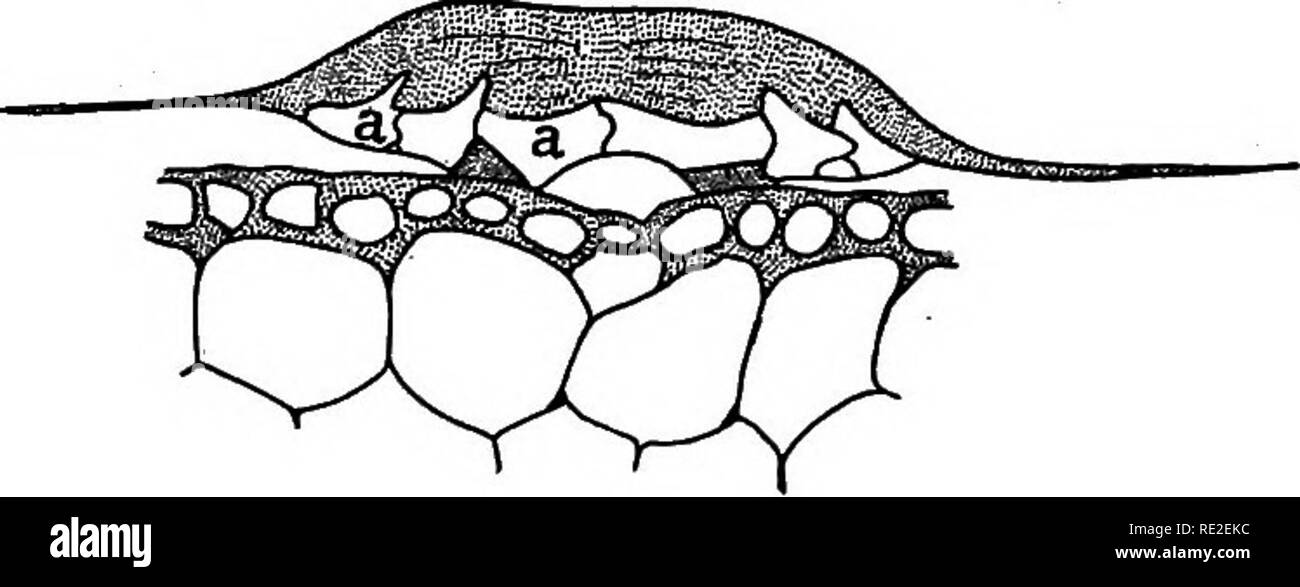 . Plant anatomy from the standpoint of the development and functions of the tissues, and handbook of micro-technic. Plant anatomy. 98 ABSORPTION OF WATER AND MINERALS and both are thickly beset with overlapping scales under which rain and dew gather and find entrance by osmosis into the cell cavities. Here the scales, like the velamen, serve both for the absorption, of water and protection against its loss. The scales when dry are shrunken and lie close against the stem or leaf; but when wet their thicker outer wall swells and bulges outward,. Fig. 47.—Cross section through a water-absorbing s Stock Photohttps://www.alamy.com/image-license-details/?v=1https://www.alamy.com/plant-anatomy-from-the-standpoint-of-the-development-and-functions-of-the-tissues-and-handbook-of-micro-technic-plant-anatomy-98-absorption-of-water-and-minerals-and-both-are-thickly-beset-with-overlapping-scales-under-which-rain-and-dew-gather-and-find-entrance-by-osmosis-into-the-cell-cavities-here-the-scales-like-the-velamen-serve-both-for-the-absorption-of-water-and-protection-against-its-loss-the-scales-when-dry-are-shrunken-and-lie-close-against-the-stem-or-leaf-but-when-wet-their-thicker-outer-wall-swells-and-bulges-outward-fig-47cross-section-through-a-water-absorbing-s-image232395392.html
. Plant anatomy from the standpoint of the development and functions of the tissues, and handbook of micro-technic. Plant anatomy. 98 ABSORPTION OF WATER AND MINERALS and both are thickly beset with overlapping scales under which rain and dew gather and find entrance by osmosis into the cell cavities. Here the scales, like the velamen, serve both for the absorption, of water and protection against its loss. The scales when dry are shrunken and lie close against the stem or leaf; but when wet their thicker outer wall swells and bulges outward,. Fig. 47.—Cross section through a water-absorbing s Stock Photohttps://www.alamy.com/image-license-details/?v=1https://www.alamy.com/plant-anatomy-from-the-standpoint-of-the-development-and-functions-of-the-tissues-and-handbook-of-micro-technic-plant-anatomy-98-absorption-of-water-and-minerals-and-both-are-thickly-beset-with-overlapping-scales-under-which-rain-and-dew-gather-and-find-entrance-by-osmosis-into-the-cell-cavities-here-the-scales-like-the-velamen-serve-both-for-the-absorption-of-water-and-protection-against-its-loss-the-scales-when-dry-are-shrunken-and-lie-close-against-the-stem-or-leaf-but-when-wet-their-thicker-outer-wall-swells-and-bulges-outward-fig-47cross-section-through-a-water-absorbing-s-image232395392.htmlRMRE2EKC–. Plant anatomy from the standpoint of the development and functions of the tissues, and handbook of micro-technic. Plant anatomy. 98 ABSORPTION OF WATER AND MINERALS and both are thickly beset with overlapping scales under which rain and dew gather and find entrance by osmosis into the cell cavities. Here the scales, like the velamen, serve both for the absorption, of water and protection against its loss. The scales when dry are shrunken and lie close against the stem or leaf; but when wet their thicker outer wall swells and bulges outward,. Fig. 47.—Cross section through a water-absorbing s
 . Principles of plant culture : an elementary treatise designed as a text-book for beginners in agriculture and horticulture. Horticulture; Botany. 50 Princrj>Ies of Plant Culture. lets. In the roots, they divide in a similar manner, extend- ing lengthwise through all the branches and branchlets. Fig. 20 shows a cross section of a vascular bundle of the sunflower.. Fig. 19. Showing cross section of a vascular bundle of the common sunflower, (Helianthus annuua). Highly magnified. {After Piantl). See also Fig. 20. The threads in the stalk of Indian corn and the leaf stem of the plantain (Plan Stock Photohttps://www.alamy.com/image-license-details/?v=1https://www.alamy.com/principles-of-plant-culture-an-elementary-treatise-designed-as-a-text-book-for-beginners-in-agriculture-and-horticulture-horticulture-botany-50-princrjgties-of-plant-culture-lets-in-the-roots-they-divide-in-a-similar-manner-extend-ing-lengthwise-through-all-the-branches-and-branchlets-fig-20-shows-a-cross-section-of-a-vascular-bundle-of-the-sunflower-fig-19-showing-cross-section-of-a-vascular-bundle-of-the-common-sunflower-helianthus-annuua-highly-magnified-after-piantl-see-also-fig-20-the-threads-in-the-stalk-of-indian-corn-and-the-leaf-stem-of-the-plantain-plan-image216451352.html
. Principles of plant culture : an elementary treatise designed as a text-book for beginners in agriculture and horticulture. Horticulture; Botany. 50 Princrj>Ies of Plant Culture. lets. In the roots, they divide in a similar manner, extend- ing lengthwise through all the branches and branchlets. Fig. 20 shows a cross section of a vascular bundle of the sunflower.. Fig. 19. Showing cross section of a vascular bundle of the common sunflower, (Helianthus annuua). Highly magnified. {After Piantl). See also Fig. 20. The threads in the stalk of Indian corn and the leaf stem of the plantain (Plan Stock Photohttps://www.alamy.com/image-license-details/?v=1https://www.alamy.com/principles-of-plant-culture-an-elementary-treatise-designed-as-a-text-book-for-beginners-in-agriculture-and-horticulture-horticulture-botany-50-princrjgties-of-plant-culture-lets-in-the-roots-they-divide-in-a-similar-manner-extend-ing-lengthwise-through-all-the-branches-and-branchlets-fig-20-shows-a-cross-section-of-a-vascular-bundle-of-the-sunflower-fig-19-showing-cross-section-of-a-vascular-bundle-of-the-common-sunflower-helianthus-annuua-highly-magnified-after-piantl-see-also-fig-20-the-threads-in-the-stalk-of-indian-corn-and-the-leaf-stem-of-the-plantain-plan-image216451352.htmlRMPG45WC–. Principles of plant culture : an elementary treatise designed as a text-book for beginners in agriculture and horticulture. Horticulture; Botany. 50 Princrj>Ies of Plant Culture. lets. In the roots, they divide in a similar manner, extend- ing lengthwise through all the branches and branchlets. Fig. 20 shows a cross section of a vascular bundle of the sunflower.. Fig. 19. Showing cross section of a vascular bundle of the common sunflower, (Helianthus annuua). Highly magnified. {After Piantl). See also Fig. 20. The threads in the stalk of Indian corn and the leaf stem of the plantain (Plan
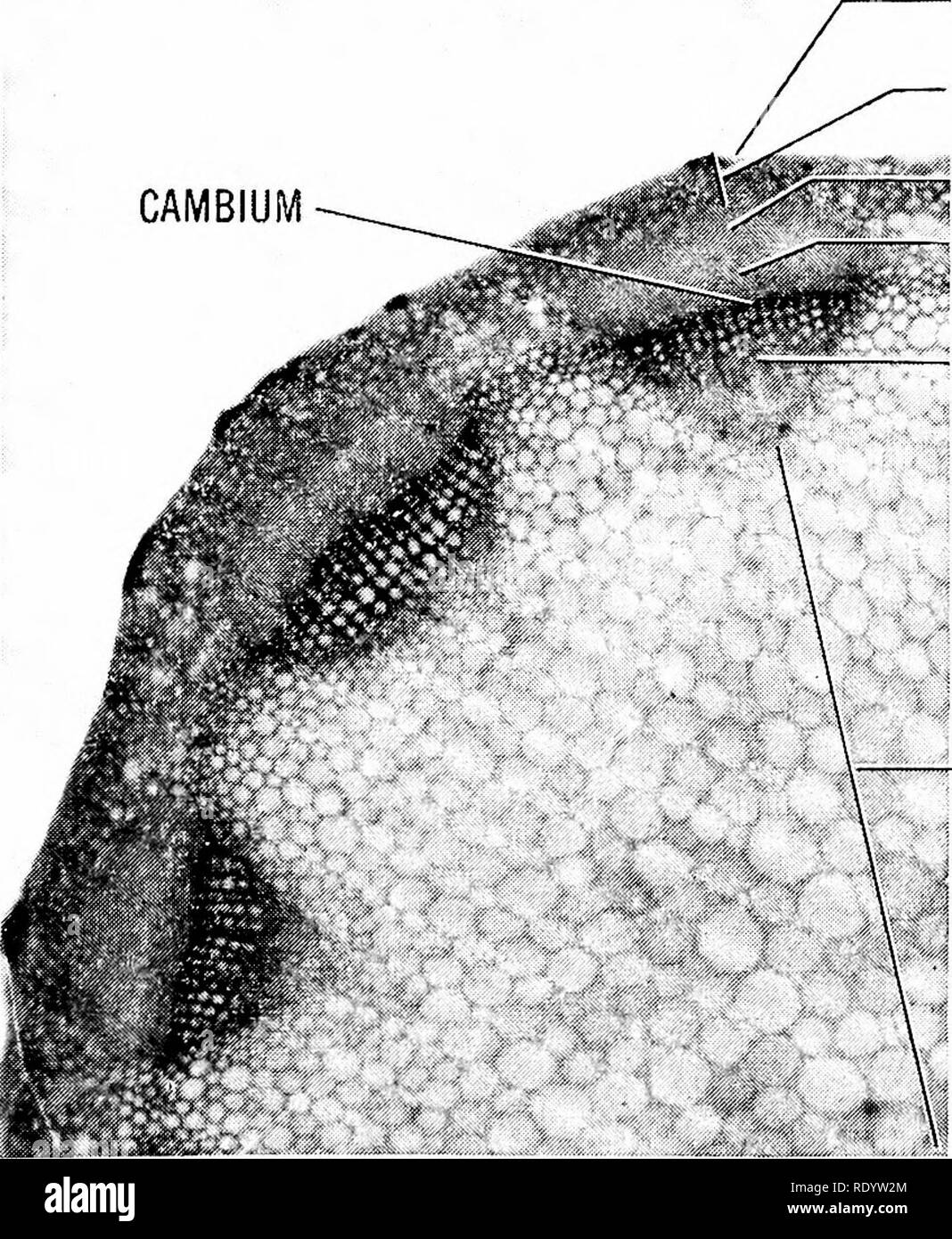 . Principles of modern biology. Biology. EPIDERMIS CORTEX - '^ SCLERENCHYMA j— SIEVE TUBES Was "ducts and sclerenchyma PHLOEM XYLEM VASCULAR BUNDLE PITH Fig. 13-13. Photomicrograph of one quadrant of a cross section of stem of a dicotyledonous plant (clover). Note particularly the circular arrangement of the vascular bundles and the disposition of the cambium.. Please note that these images are extracted from scanned page images that may have been digitally enhanced for readability - coloration and appearance of these illustrations may not perfectly resemble the original work.. Marsland, Stock Photohttps://www.alamy.com/image-license-details/?v=1https://www.alamy.com/principles-of-modern-biology-biology-epidermis-cortex-sclerenchyma-j-sieve-tubes-was-quotducts-and-sclerenchyma-phloem-xylem-vascular-bundle-pith-fig-13-13-photomicrograph-of-one-quadrant-of-a-cross-section-of-stem-of-a-dicotyledonous-plant-clover-note-particularly-the-circular-arrangement-of-the-vascular-bundles-and-the-disposition-of-the-cambium-please-note-that-these-images-are-extracted-from-scanned-page-images-that-may-have-been-digitally-enhanced-for-readability-coloration-and-appearance-of-these-illustrations-may-not-perfectly-resemble-the-original-work-marsland-image232337692.html
. Principles of modern biology. Biology. EPIDERMIS CORTEX - '^ SCLERENCHYMA j— SIEVE TUBES Was "ducts and sclerenchyma PHLOEM XYLEM VASCULAR BUNDLE PITH Fig. 13-13. Photomicrograph of one quadrant of a cross section of stem of a dicotyledonous plant (clover). Note particularly the circular arrangement of the vascular bundles and the disposition of the cambium.. Please note that these images are extracted from scanned page images that may have been digitally enhanced for readability - coloration and appearance of these illustrations may not perfectly resemble the original work.. Marsland, Stock Photohttps://www.alamy.com/image-license-details/?v=1https://www.alamy.com/principles-of-modern-biology-biology-epidermis-cortex-sclerenchyma-j-sieve-tubes-was-quotducts-and-sclerenchyma-phloem-xylem-vascular-bundle-pith-fig-13-13-photomicrograph-of-one-quadrant-of-a-cross-section-of-stem-of-a-dicotyledonous-plant-clover-note-particularly-the-circular-arrangement-of-the-vascular-bundles-and-the-disposition-of-the-cambium-please-note-that-these-images-are-extracted-from-scanned-page-images-that-may-have-been-digitally-enhanced-for-readability-coloration-and-appearance-of-these-illustrations-may-not-perfectly-resemble-the-original-work-marsland-image232337692.htmlRMRDYW2M–. Principles of modern biology. Biology. EPIDERMIS CORTEX - '^ SCLERENCHYMA j— SIEVE TUBES Was "ducts and sclerenchyma PHLOEM XYLEM VASCULAR BUNDLE PITH Fig. 13-13. Photomicrograph of one quadrant of a cross section of stem of a dicotyledonous plant (clover). Note particularly the circular arrangement of the vascular bundles and the disposition of the cambium.. Please note that these images are extracted from scanned page images that may have been digitally enhanced for readability - coloration and appearance of these illustrations may not perfectly resemble the original work.. Marsland,
 . The structure and development of mosses and ferns (Archegoniatae). Plant morphology; Mosses; Ferns. 550 MOSSES AND FERNS CHAP. entiated elements, the rest of the bundle showing only elongated parenchyma, much like the original procambium cells. The axis of growth of the primary root usually coincides with that of the cotyledon, but this is not always the case. In. Fig. 318.—a. Median section of a young sporophyte with the second leaf L* already formed; r^, second root; st, stem-apex, X150; B, cross-section near the base of the cotyledon, showing the intercellular spaces t and the second leaf Stock Photohttps://www.alamy.com/image-license-details/?v=1https://www.alamy.com/the-structure-and-development-of-mosses-and-ferns-archegoniatae-plant-morphology-mosses-ferns-550-mosses-and-ferns-chap-entiated-elements-the-rest-of-the-bundle-showing-only-elongated-parenchyma-much-like-the-original-procambium-cells-the-axis-of-growth-of-the-primary-root-usually-coincides-with-that-of-the-cotyledon-but-this-is-not-always-the-case-in-fig-318a-median-section-of-a-young-sporophyte-with-the-second-leaf-l-already-formed-r-second-root-st-stem-apex-x150-b-cross-section-near-the-base-of-the-cotyledon-showing-the-intercellular-spaces-t-and-the-second-leaf-image216362467.html
. The structure and development of mosses and ferns (Archegoniatae). Plant morphology; Mosses; Ferns. 550 MOSSES AND FERNS CHAP. entiated elements, the rest of the bundle showing only elongated parenchyma, much like the original procambium cells. The axis of growth of the primary root usually coincides with that of the cotyledon, but this is not always the case. In. Fig. 318.—a. Median section of a young sporophyte with the second leaf L* already formed; r^, second root; st, stem-apex, X150; B, cross-section near the base of the cotyledon, showing the intercellular spaces t and the second leaf Stock Photohttps://www.alamy.com/image-license-details/?v=1https://www.alamy.com/the-structure-and-development-of-mosses-and-ferns-archegoniatae-plant-morphology-mosses-ferns-550-mosses-and-ferns-chap-entiated-elements-the-rest-of-the-bundle-showing-only-elongated-parenchyma-much-like-the-original-procambium-cells-the-axis-of-growth-of-the-primary-root-usually-coincides-with-that-of-the-cotyledon-but-this-is-not-always-the-case-in-fig-318a-median-section-of-a-young-sporophyte-with-the-second-leaf-l-already-formed-r-second-root-st-stem-apex-x150-b-cross-section-near-the-base-of-the-cotyledon-showing-the-intercellular-spaces-t-and-the-second-leaf-image216362467.htmlRMPG04EY–. The structure and development of mosses and ferns (Archegoniatae). Plant morphology; Mosses; Ferns. 550 MOSSES AND FERNS CHAP. entiated elements, the rest of the bundle showing only elongated parenchyma, much like the original procambium cells. The axis of growth of the primary root usually coincides with that of the cotyledon, but this is not always the case. In. Fig. 318.—a. Median section of a young sporophyte with the second leaf L* already formed; r^, second root; st, stem-apex, X150; B, cross-section near the base of the cotyledon, showing the intercellular spaces t and the second leaf